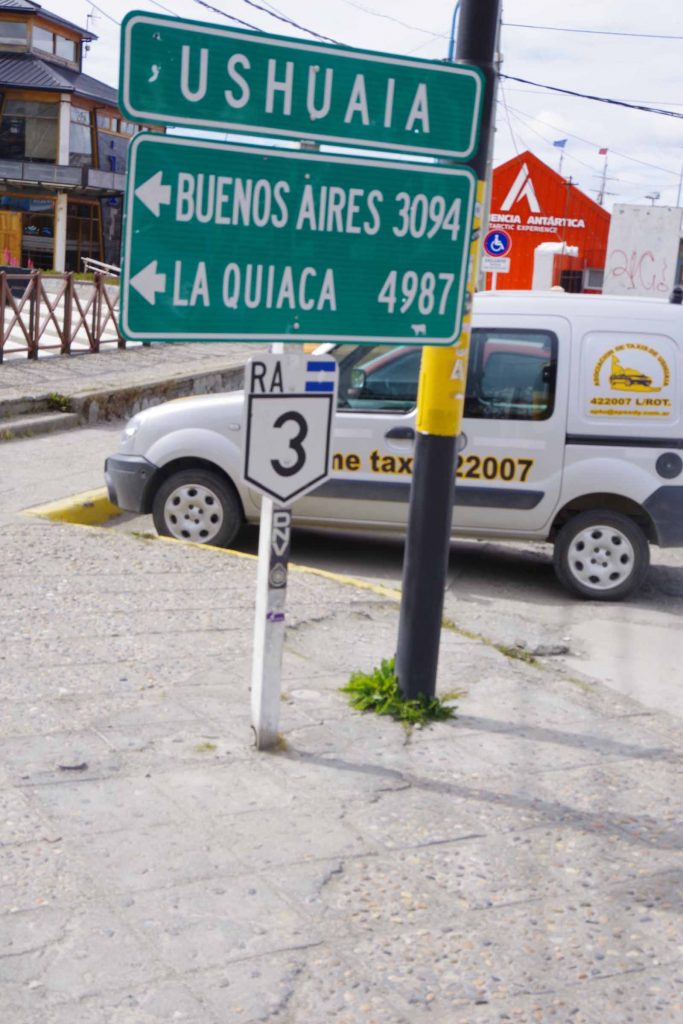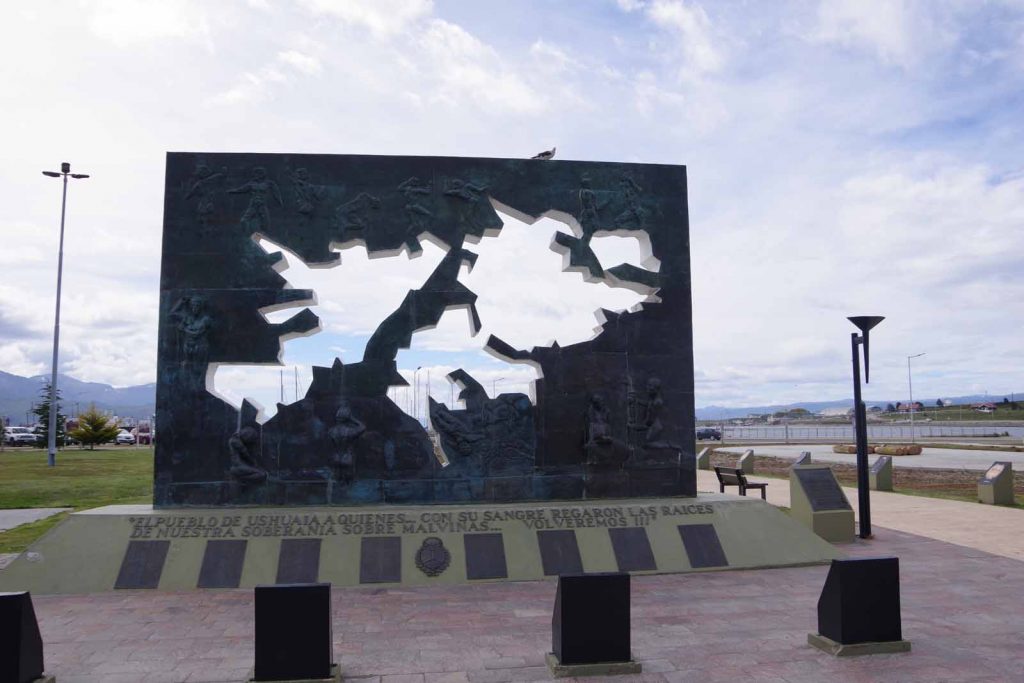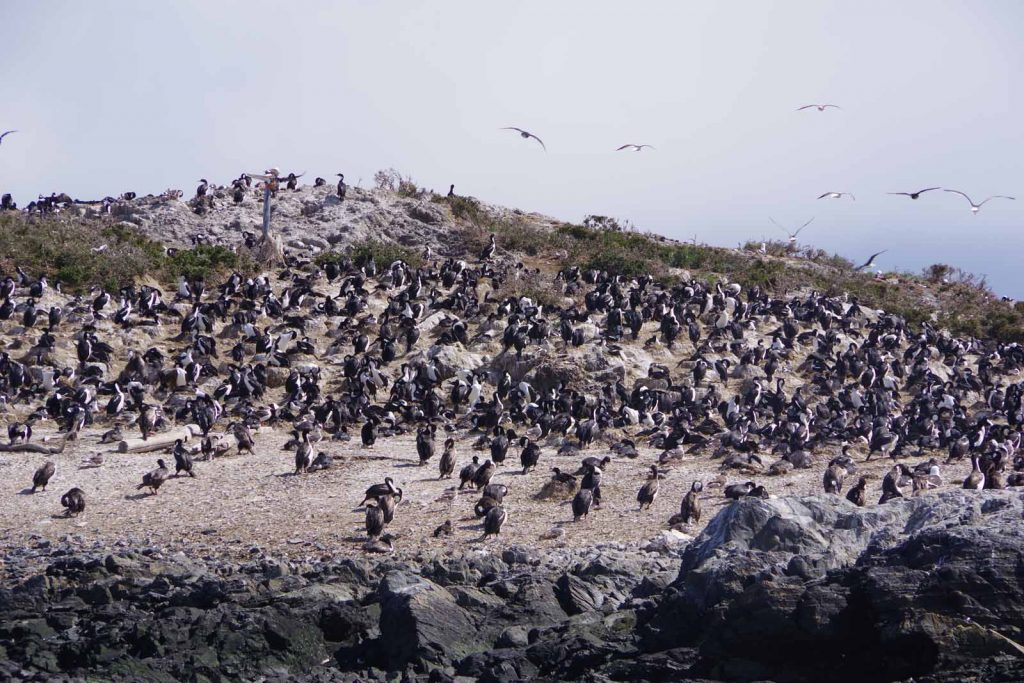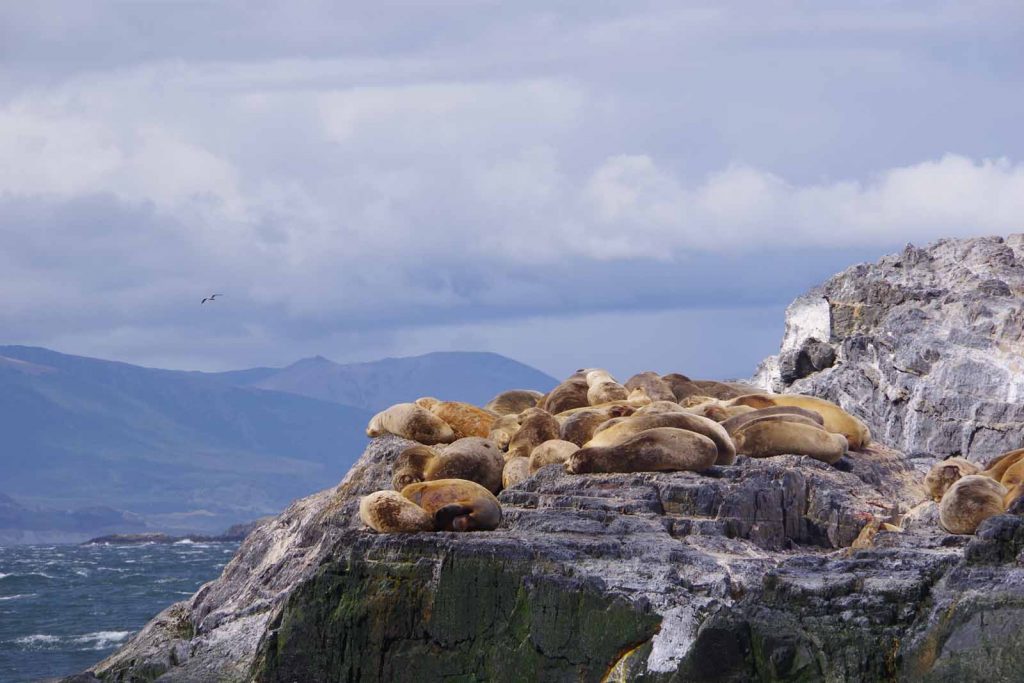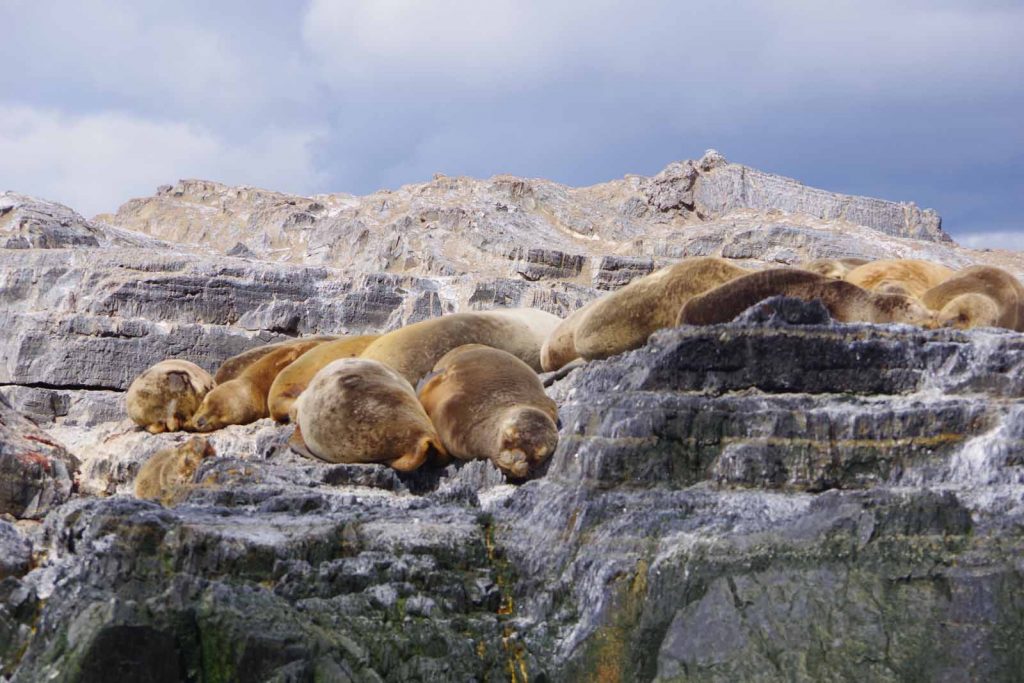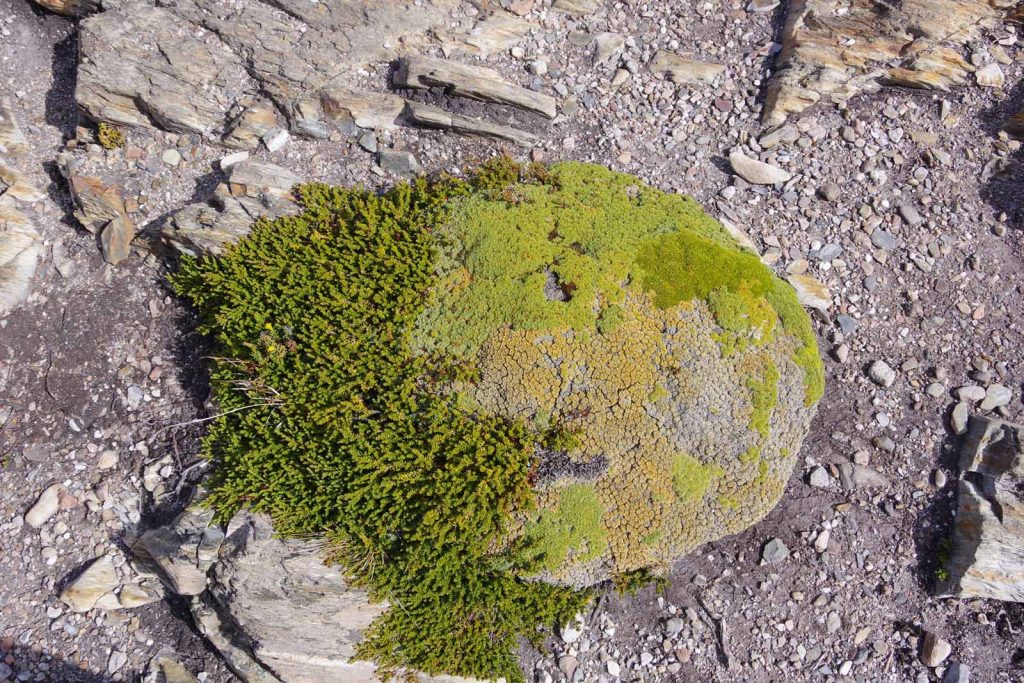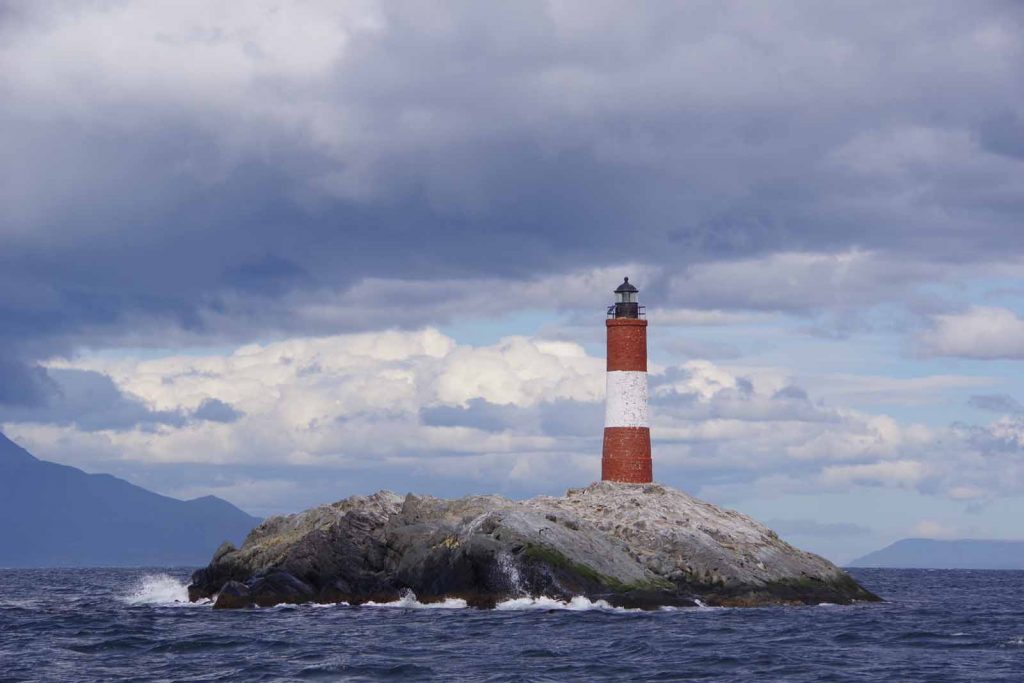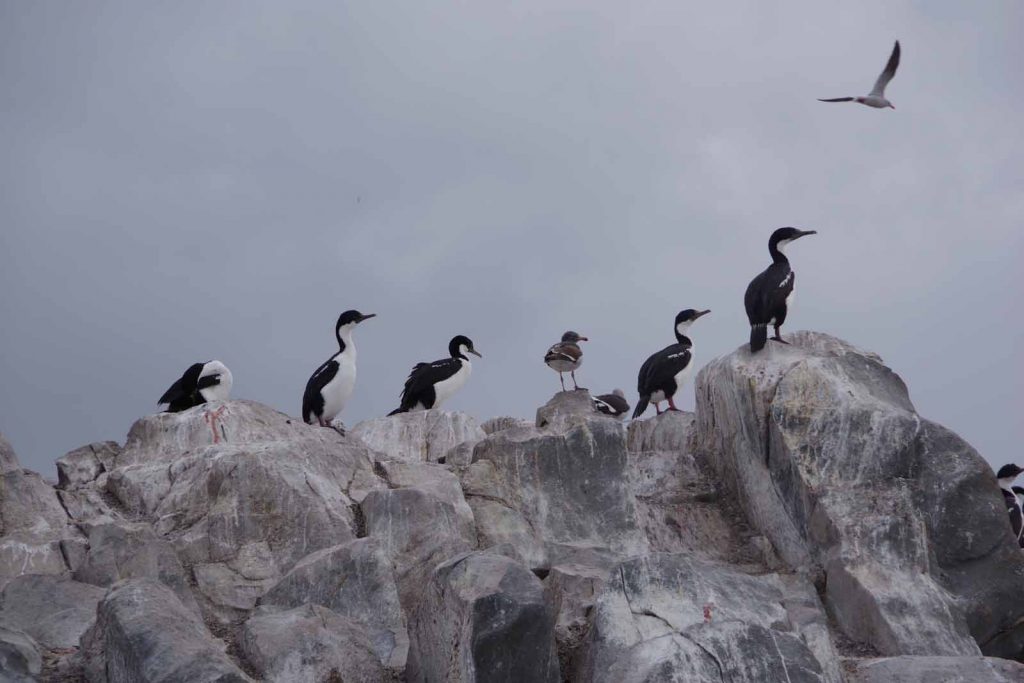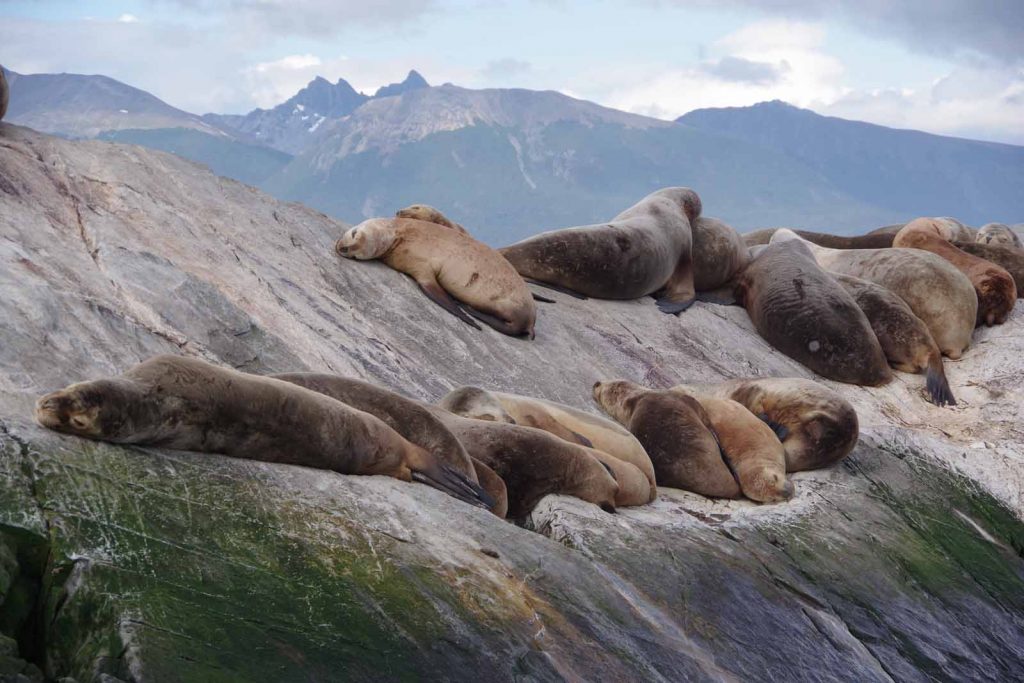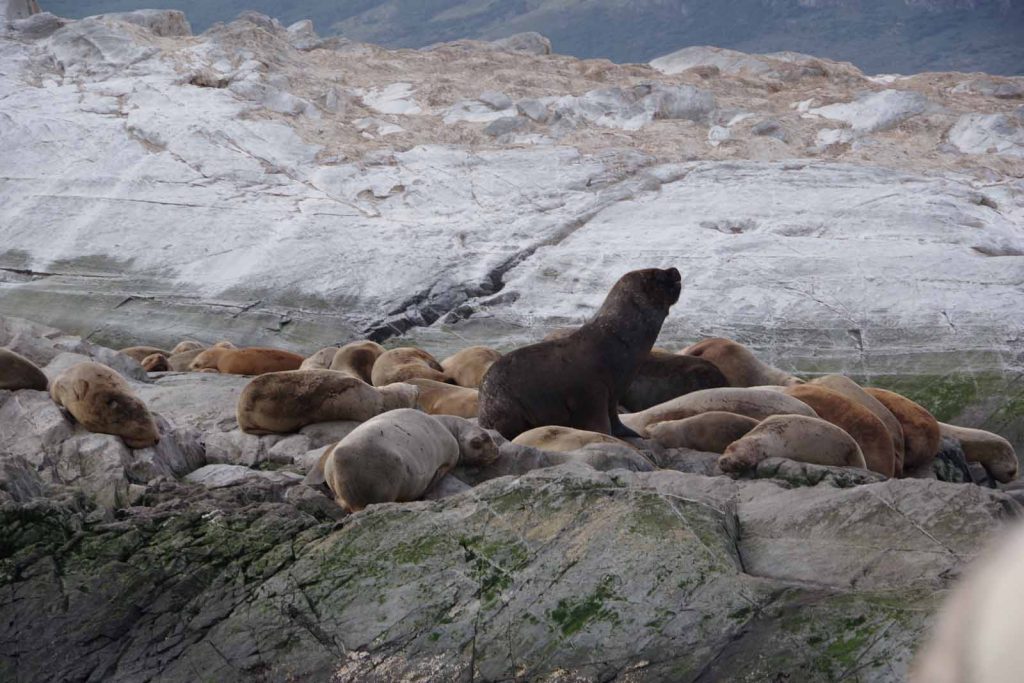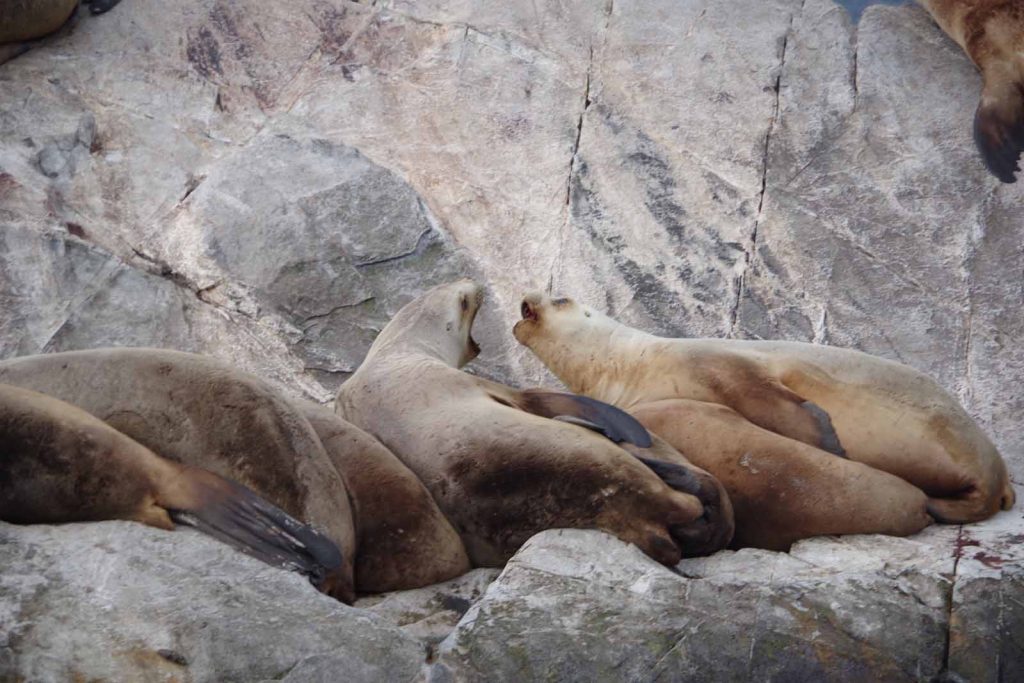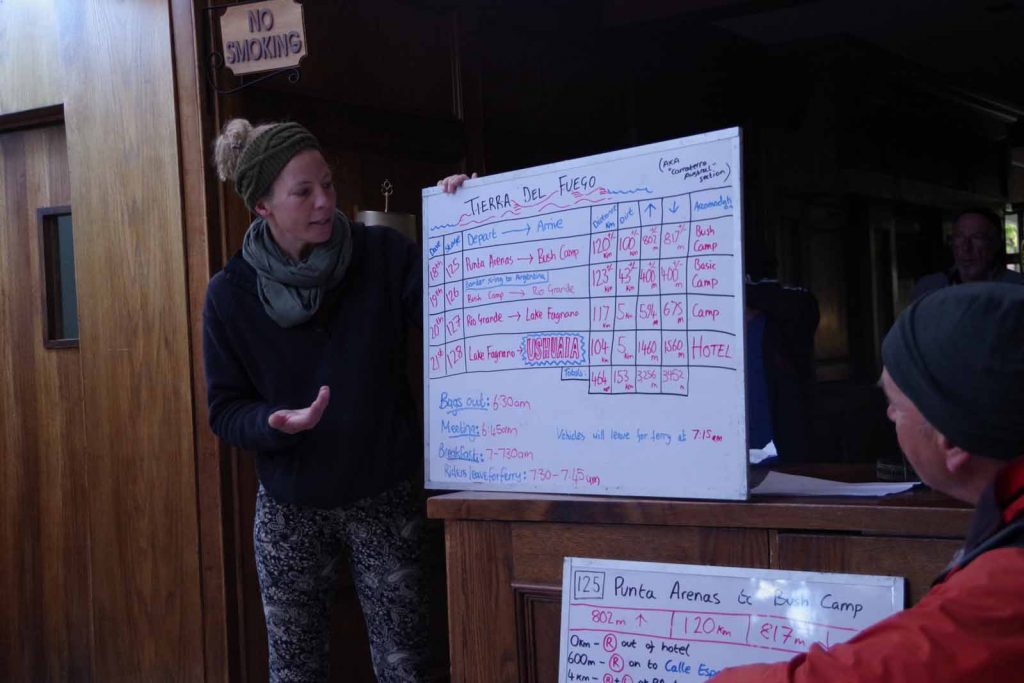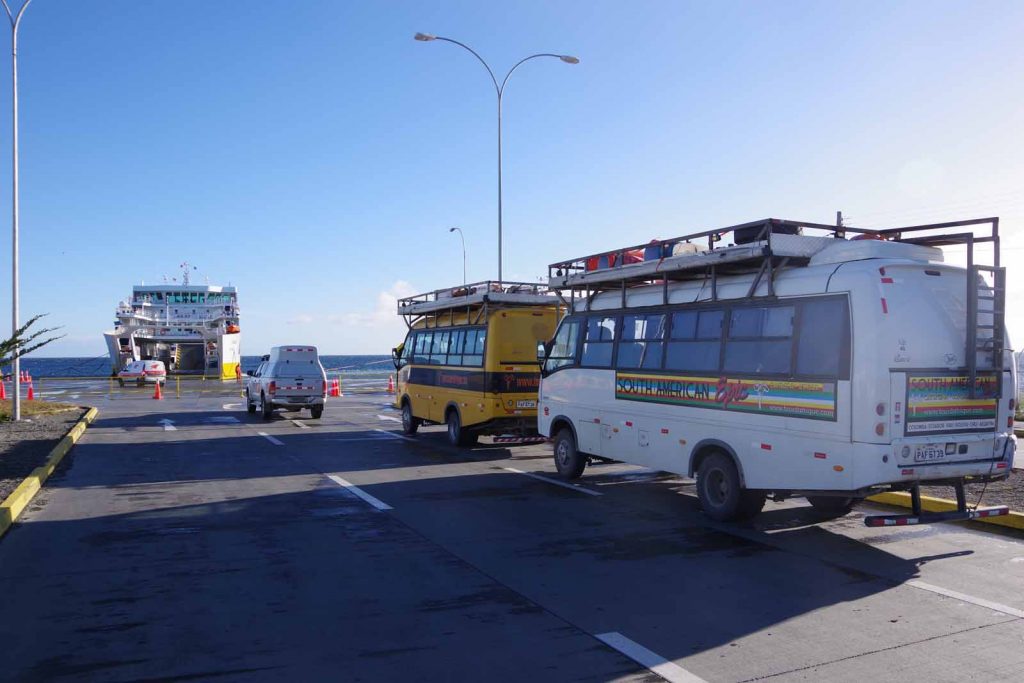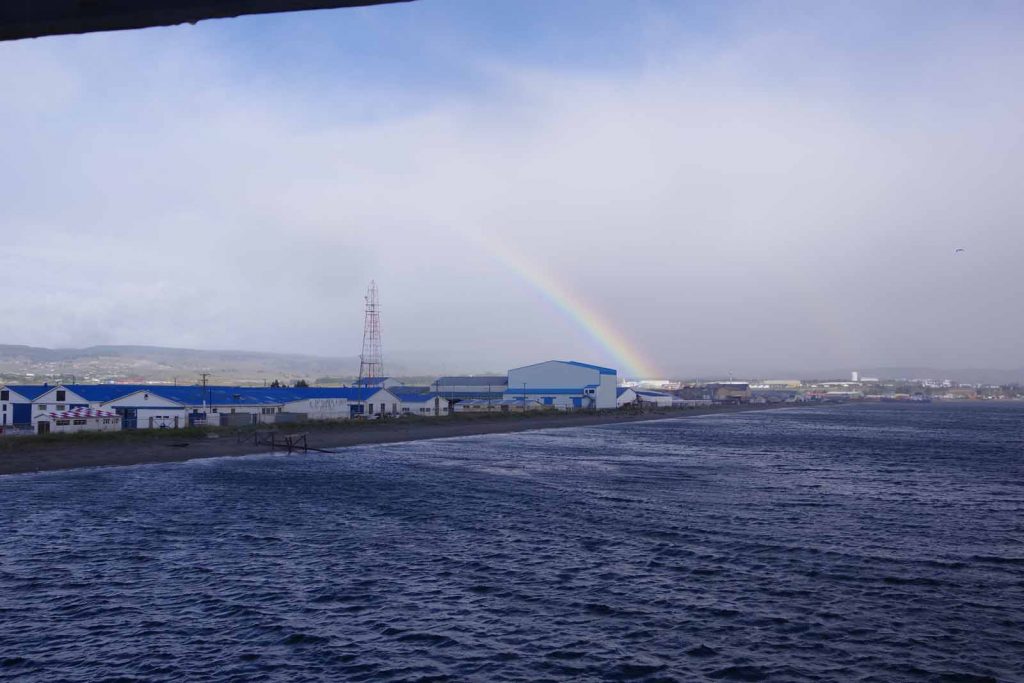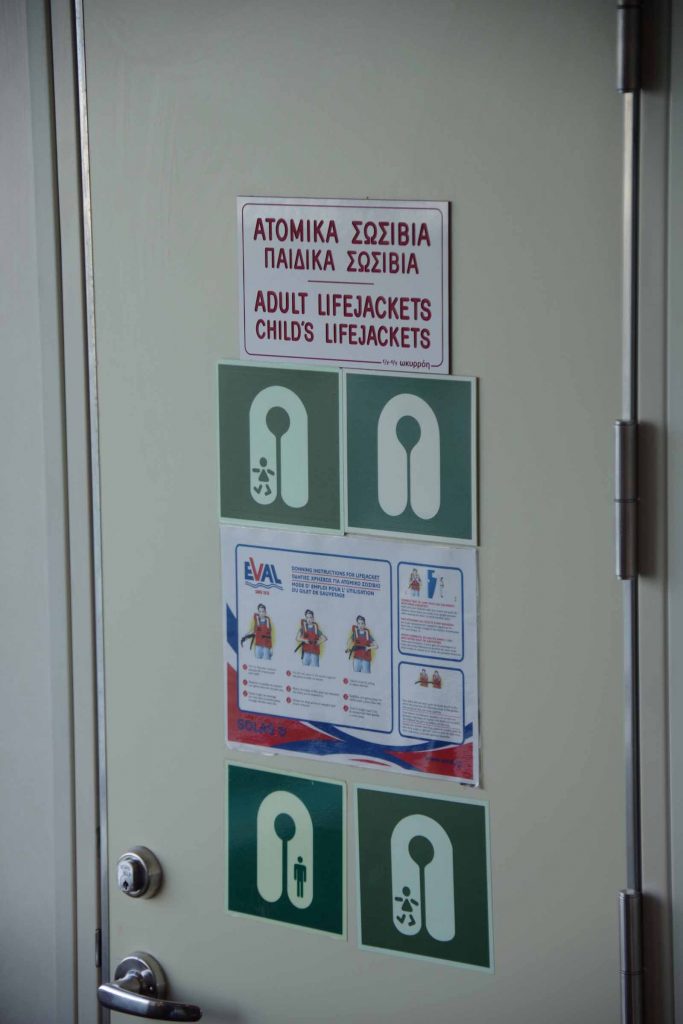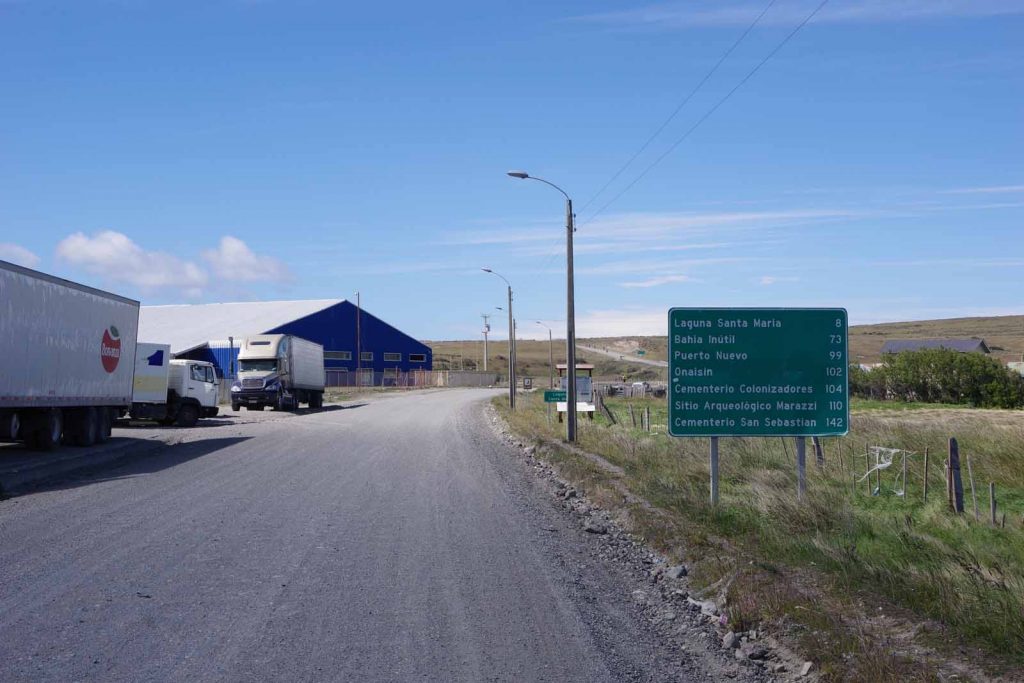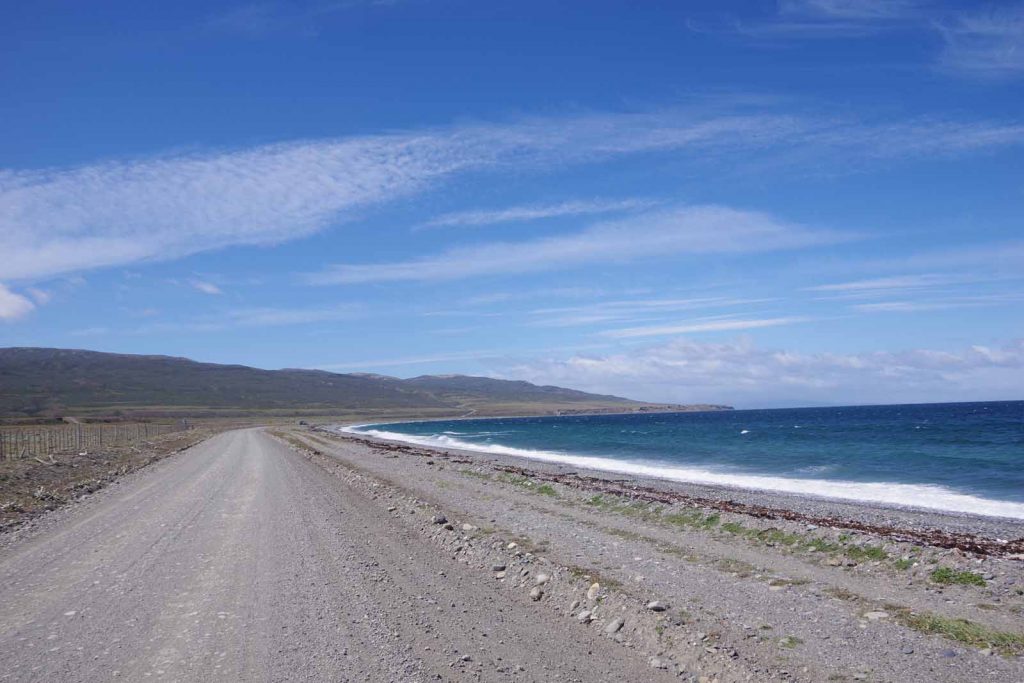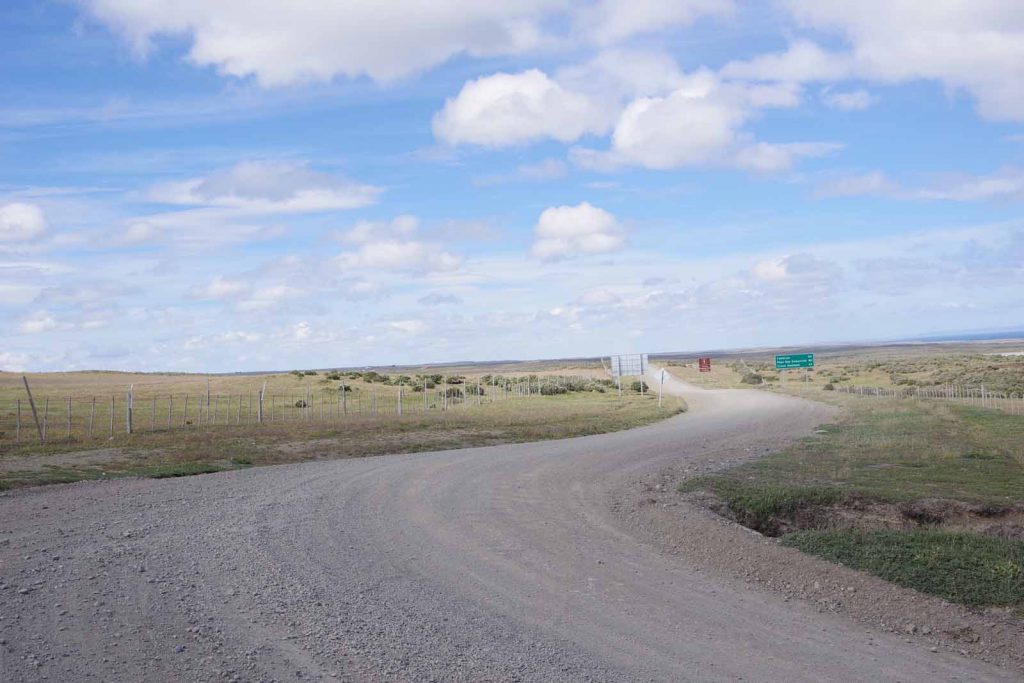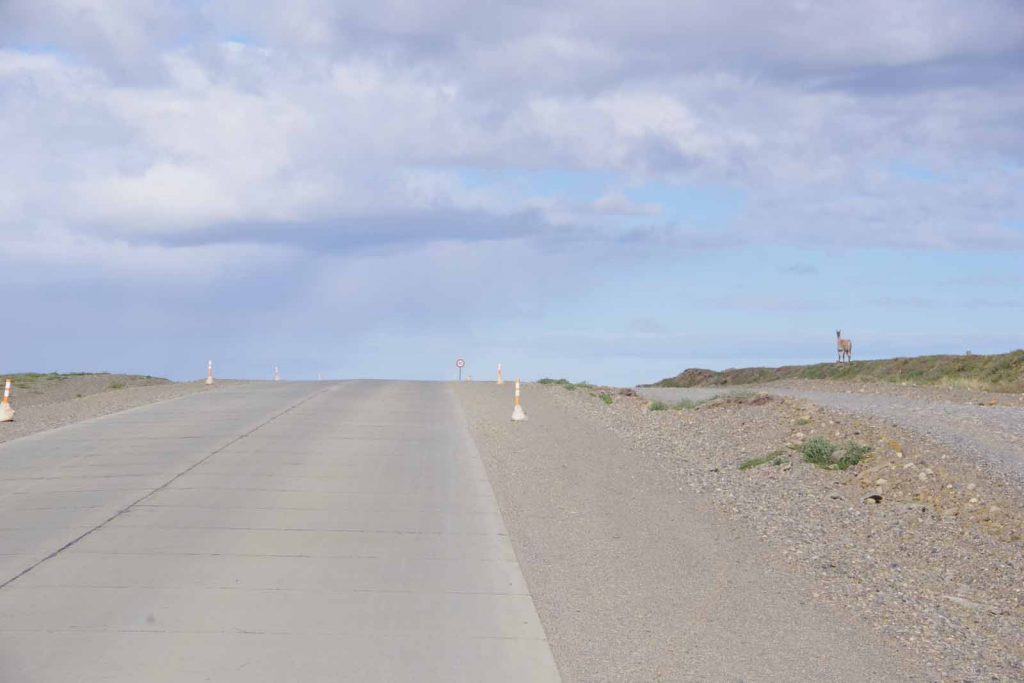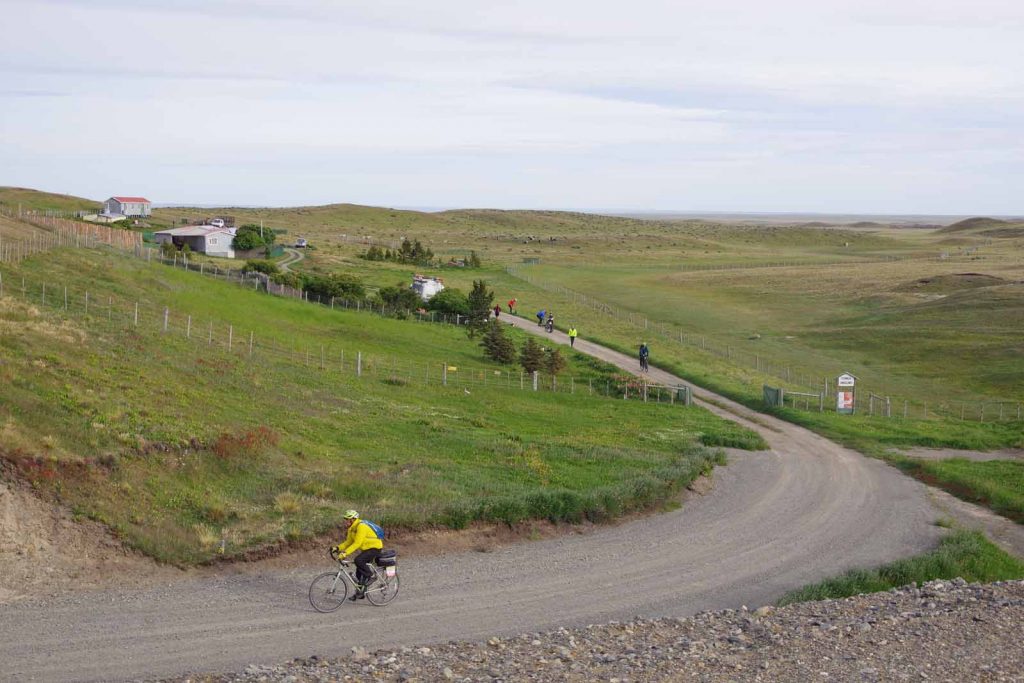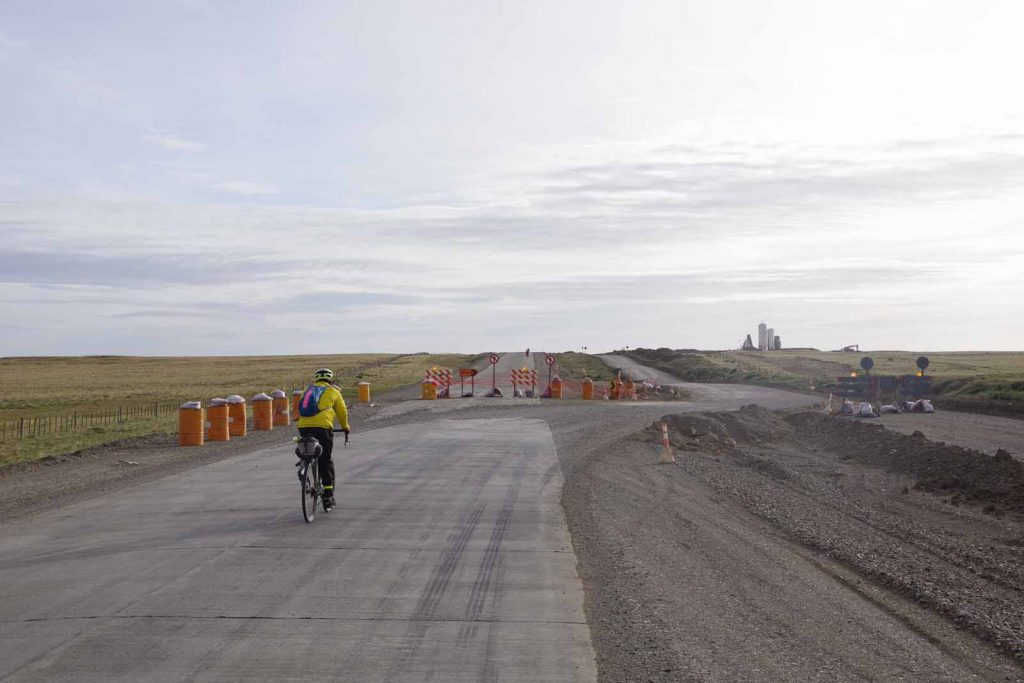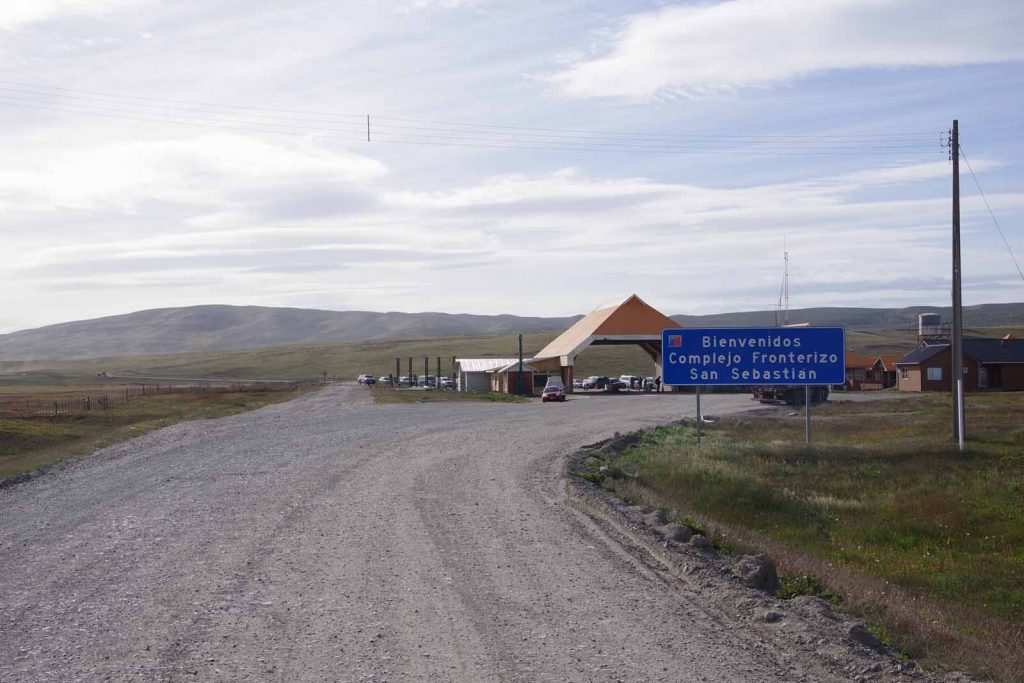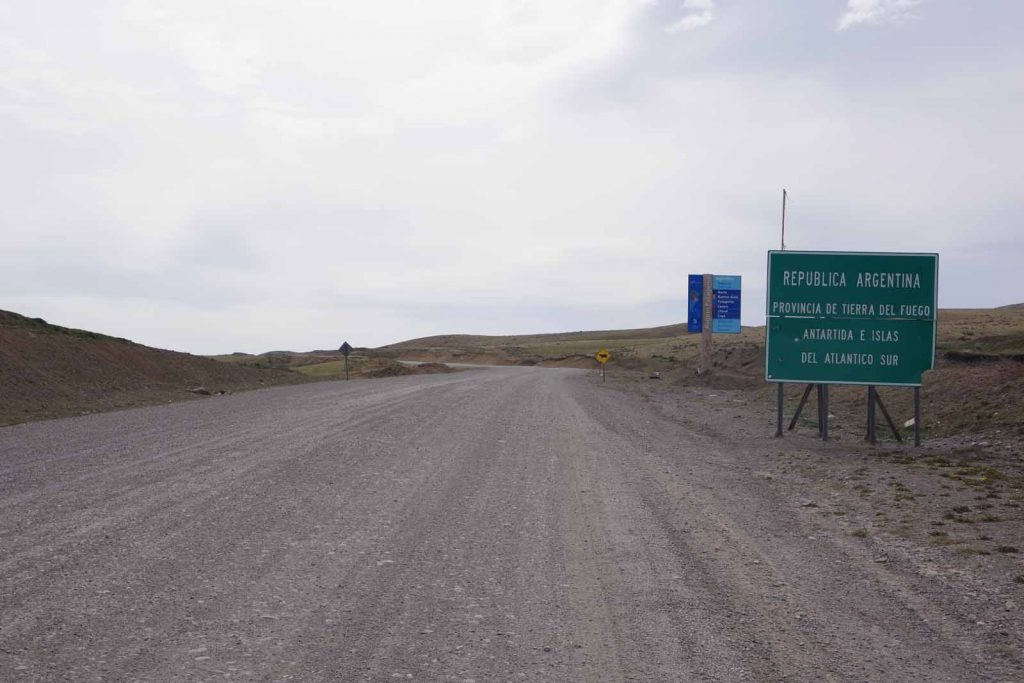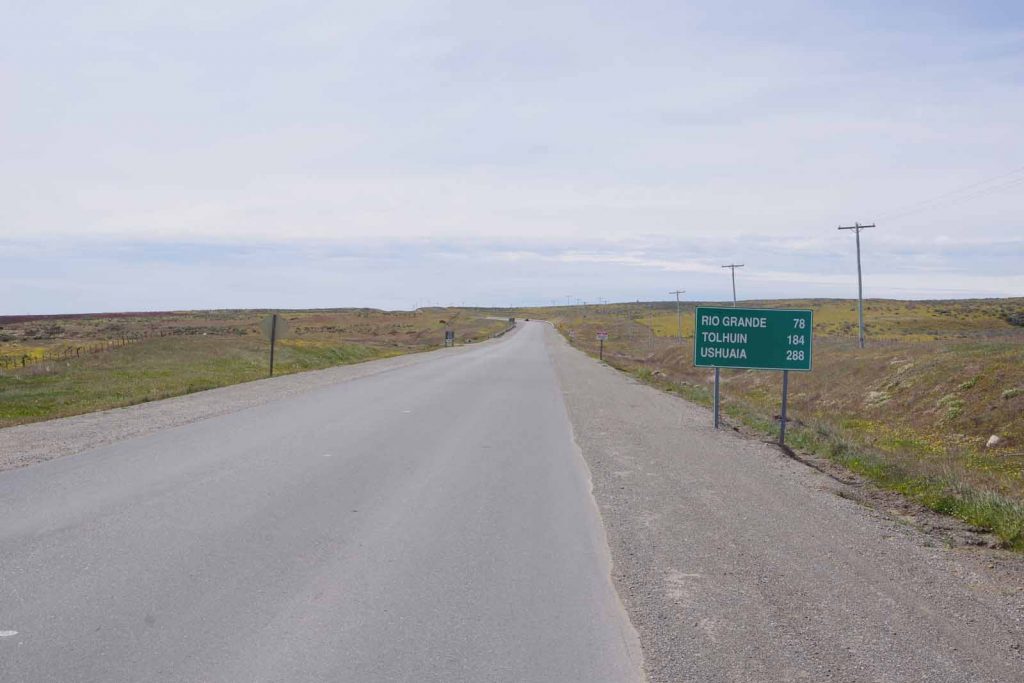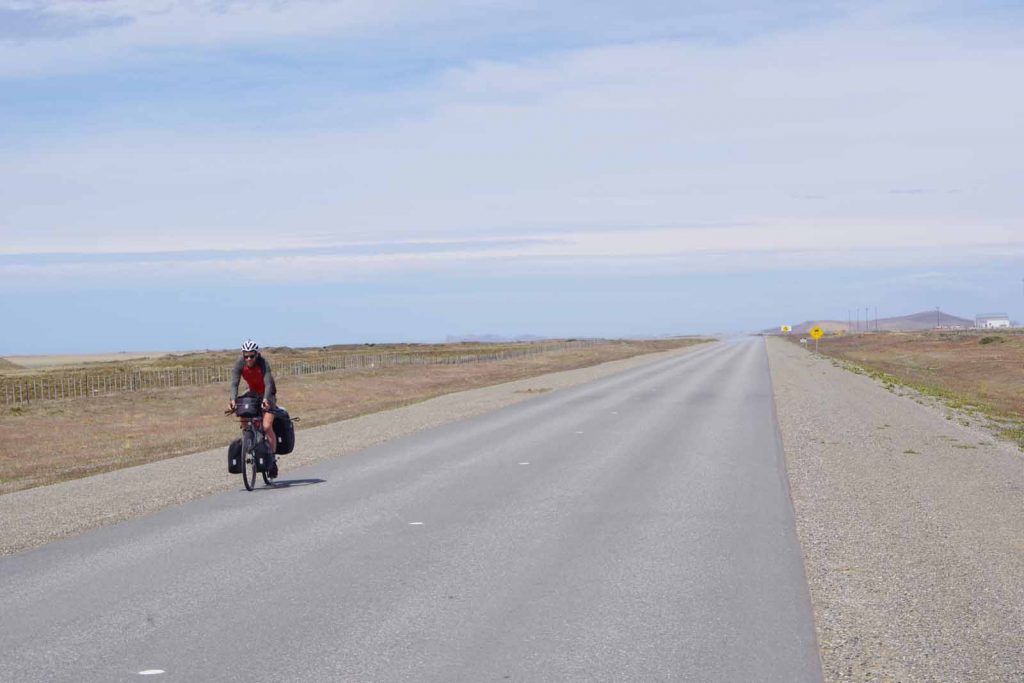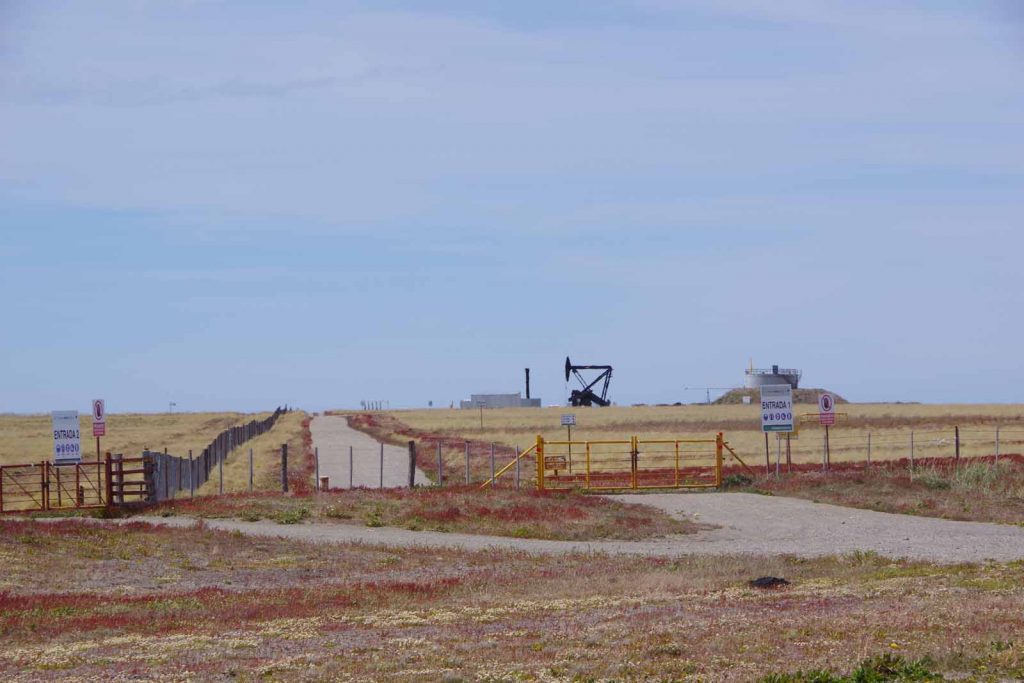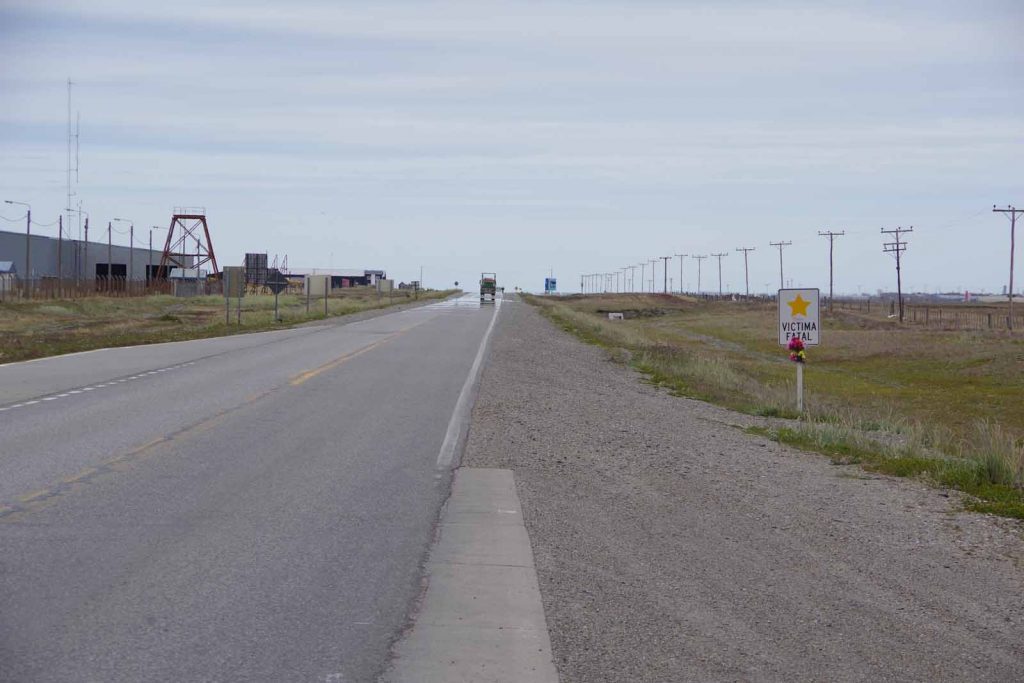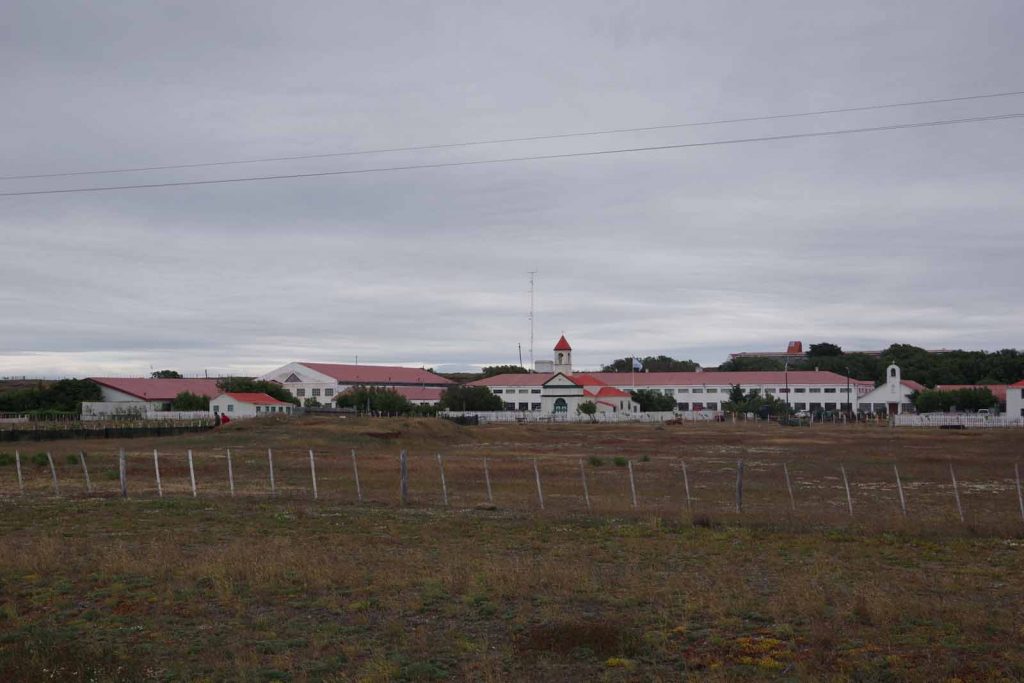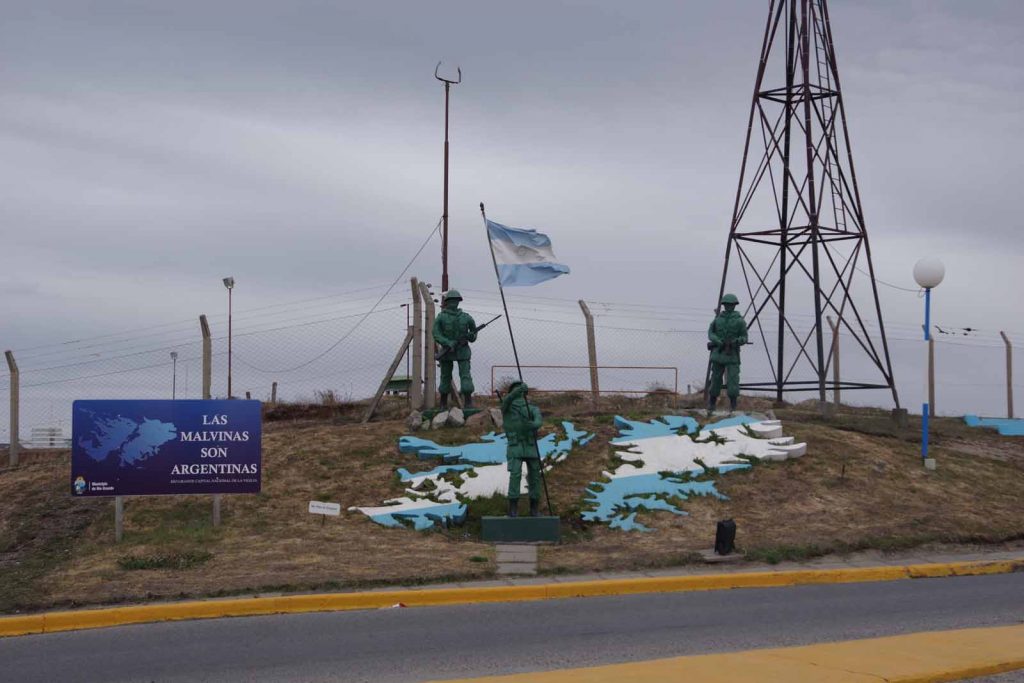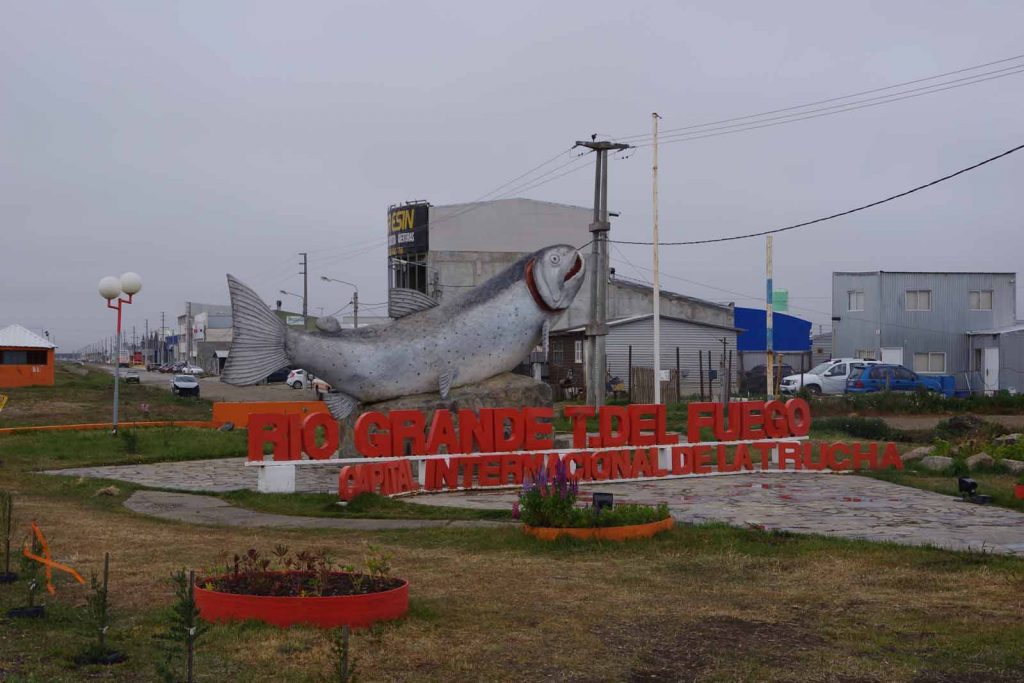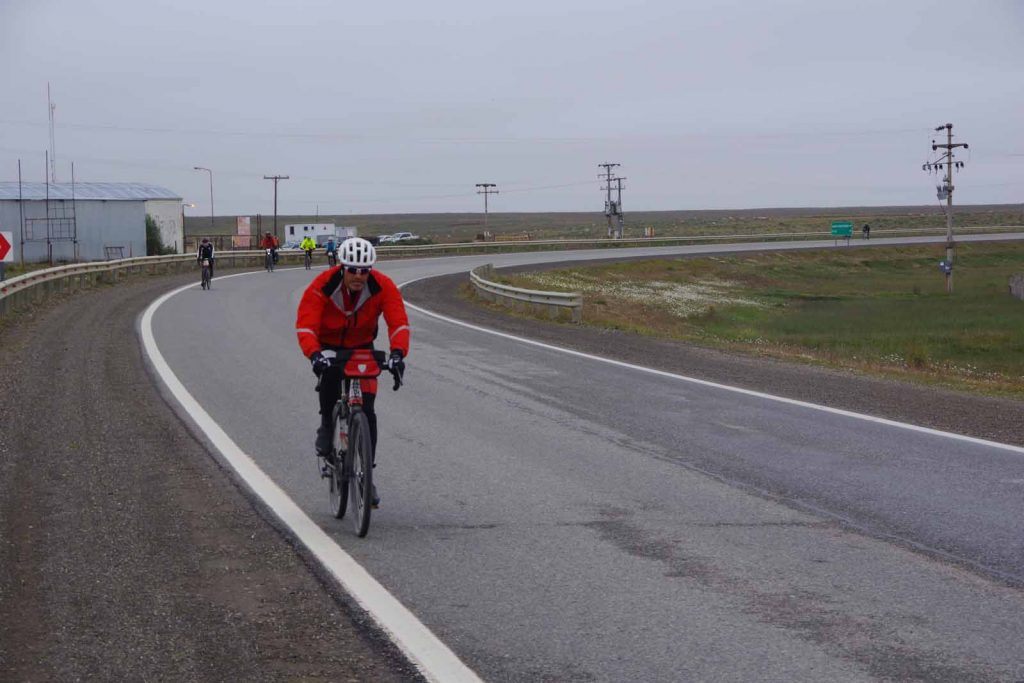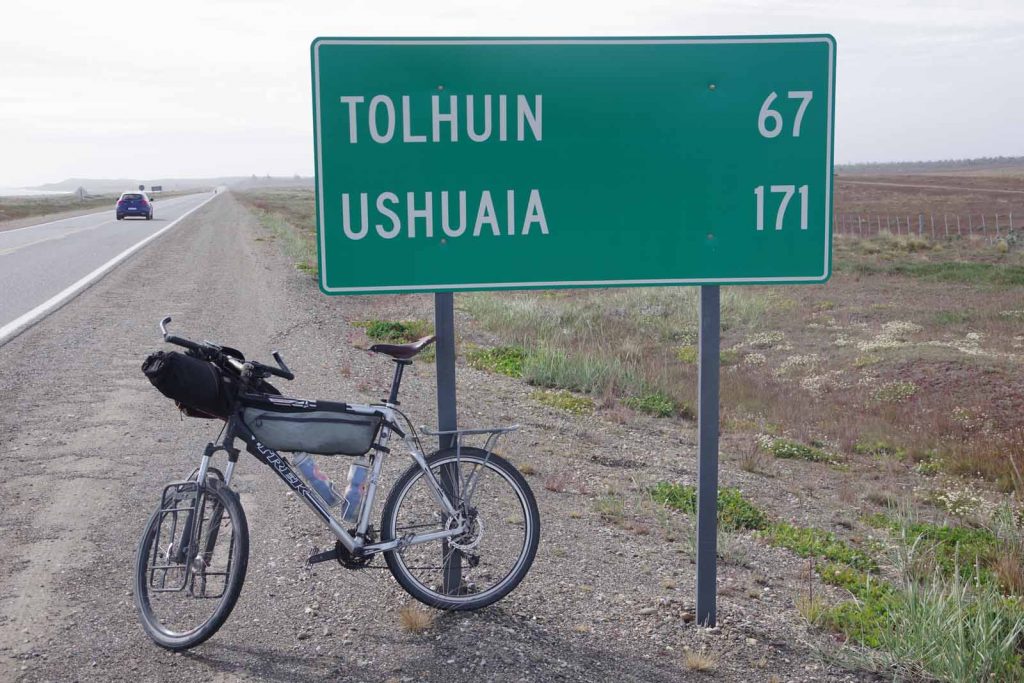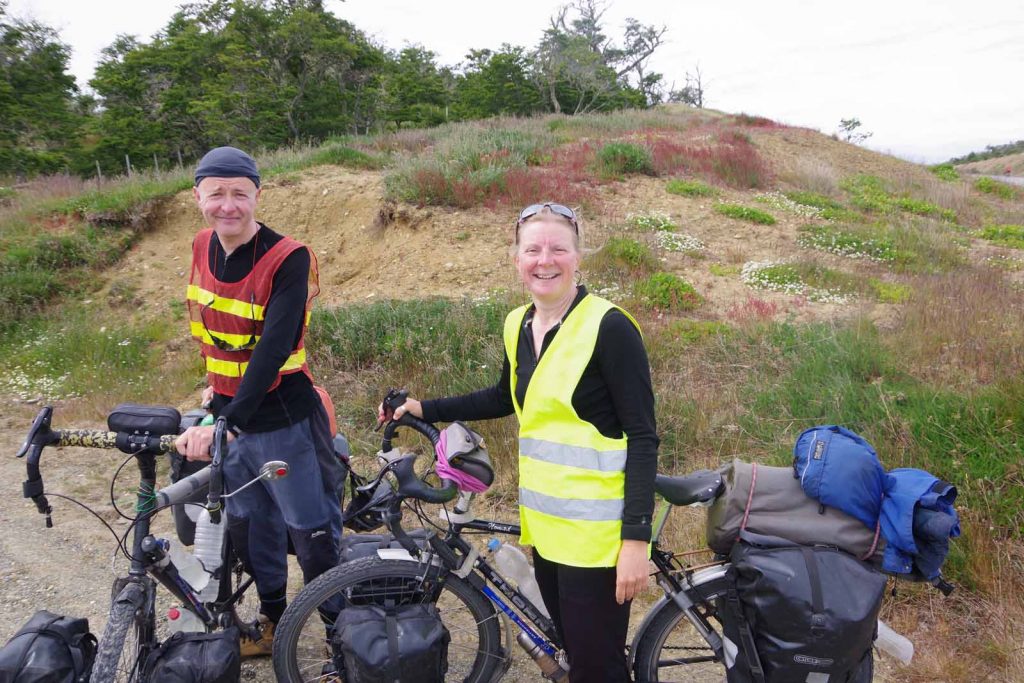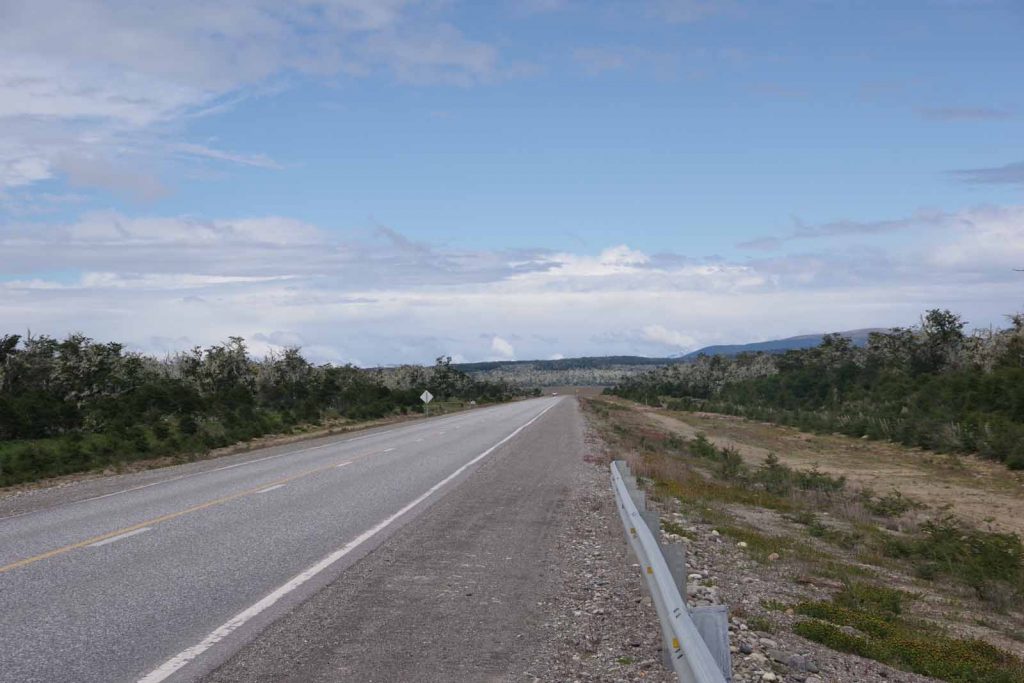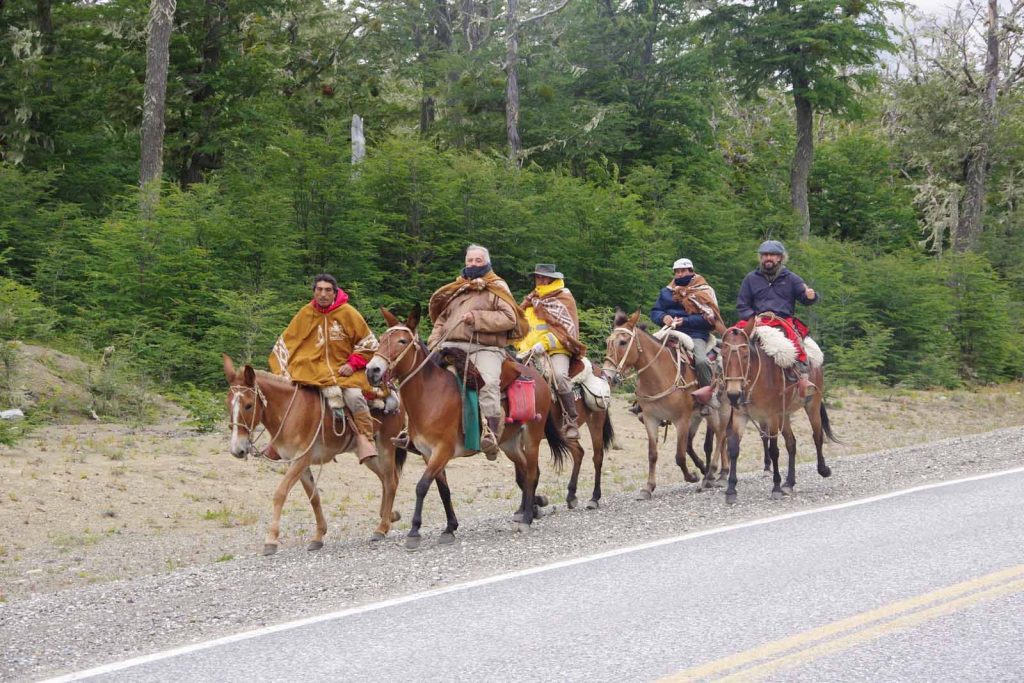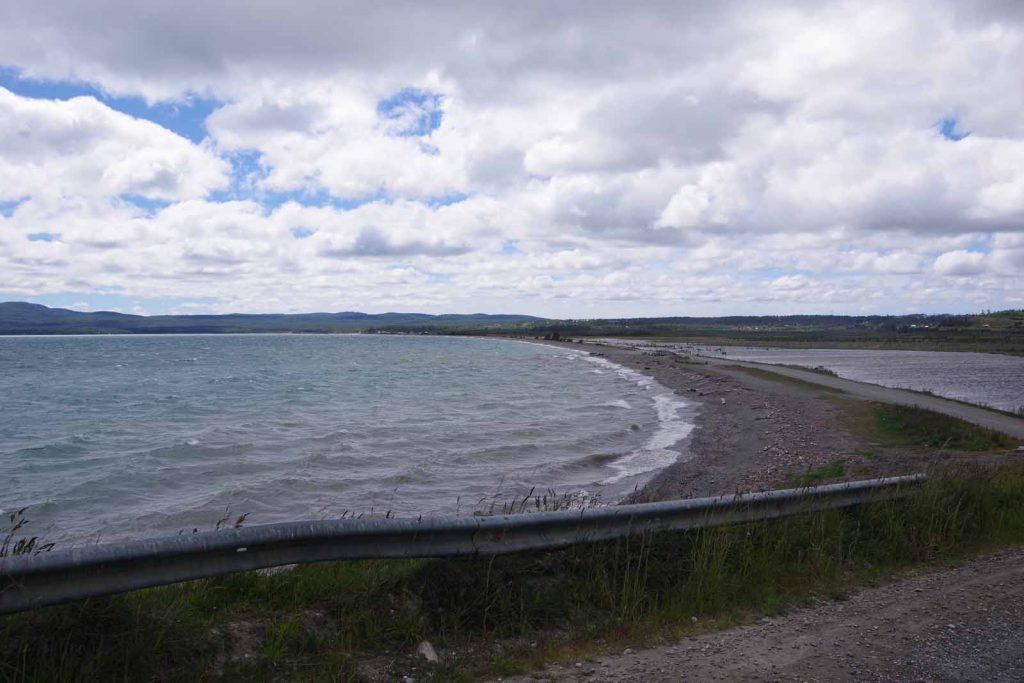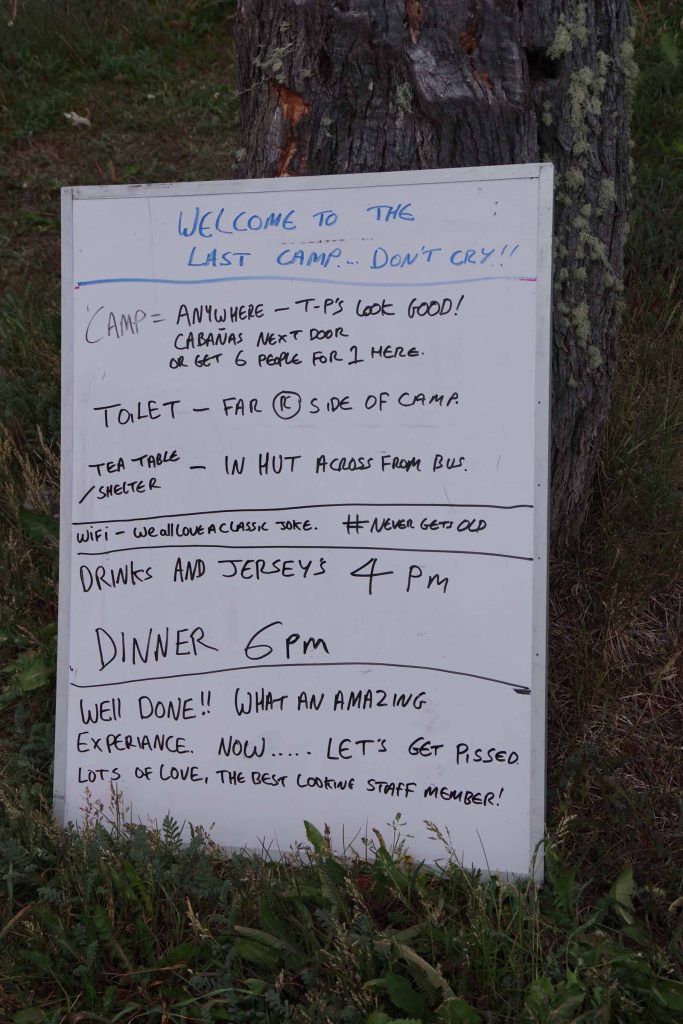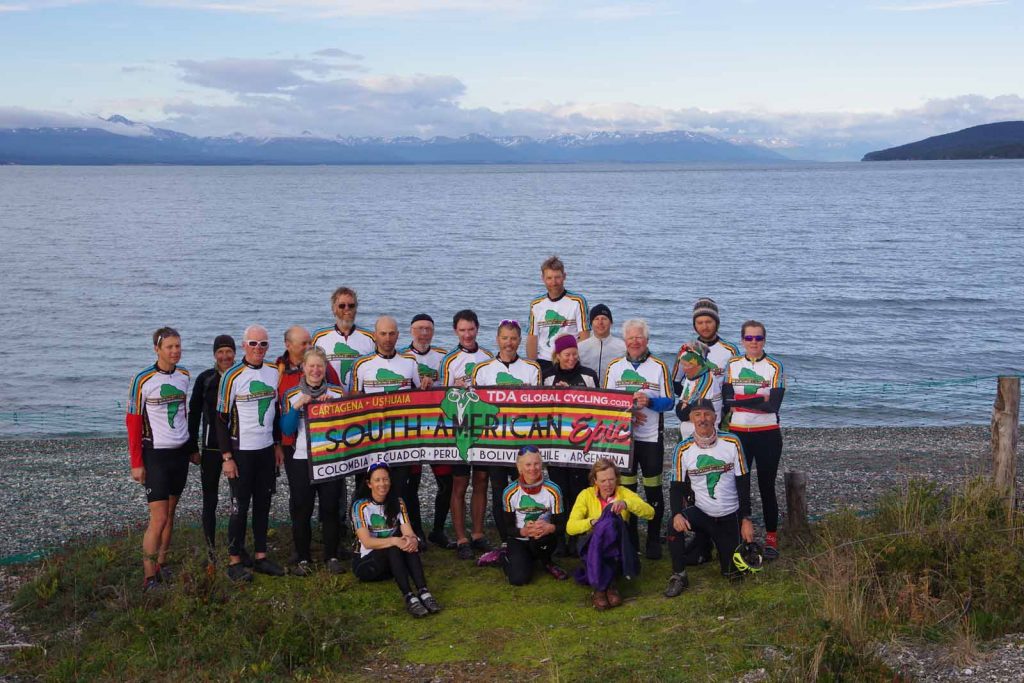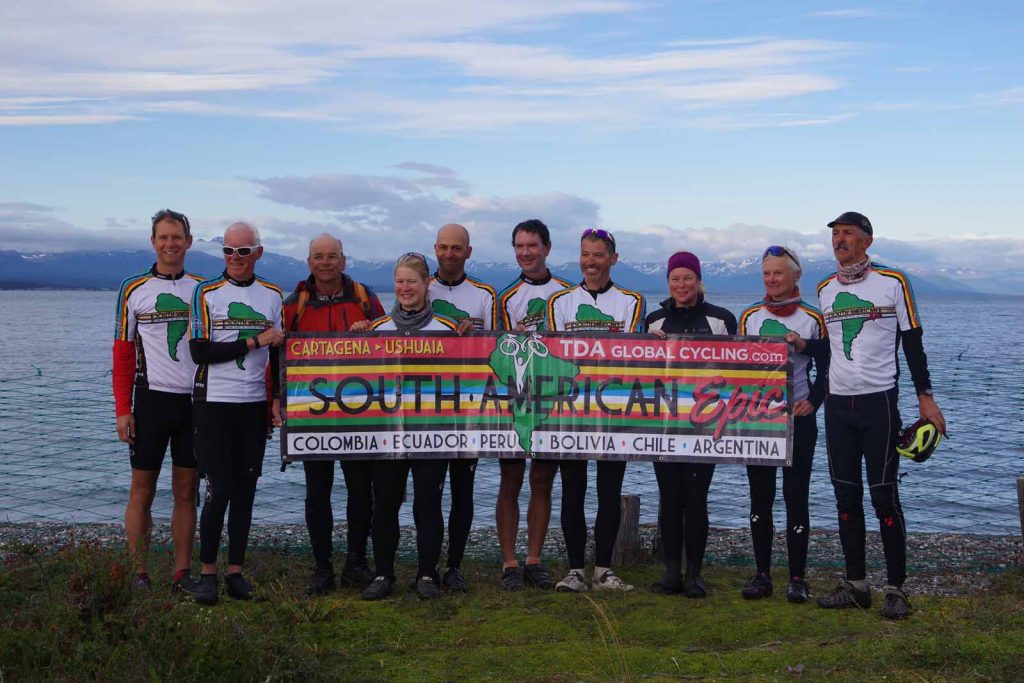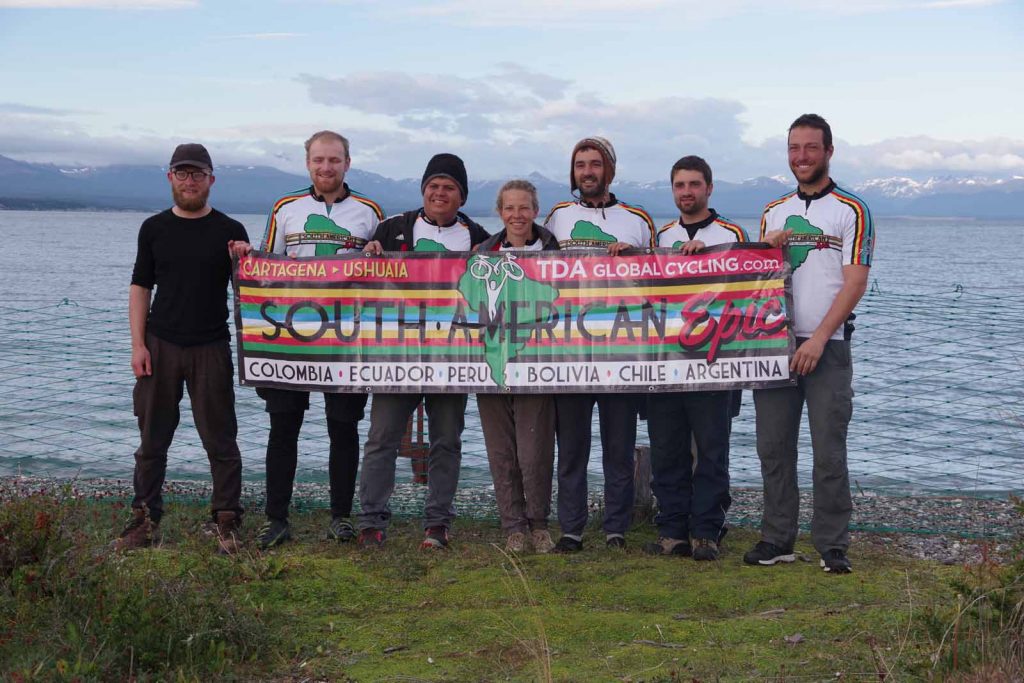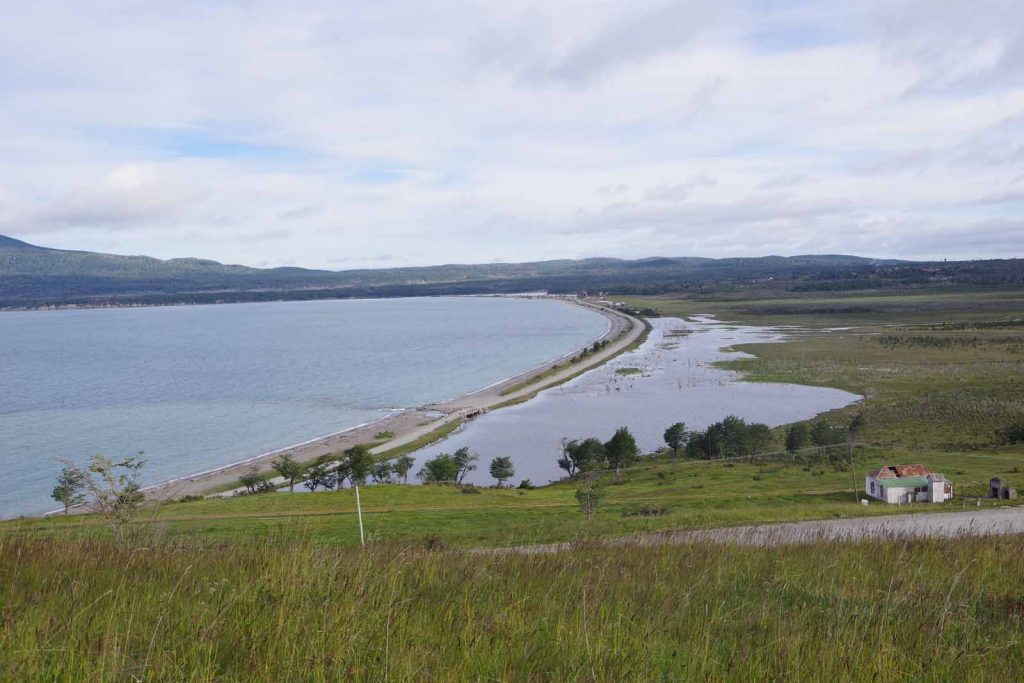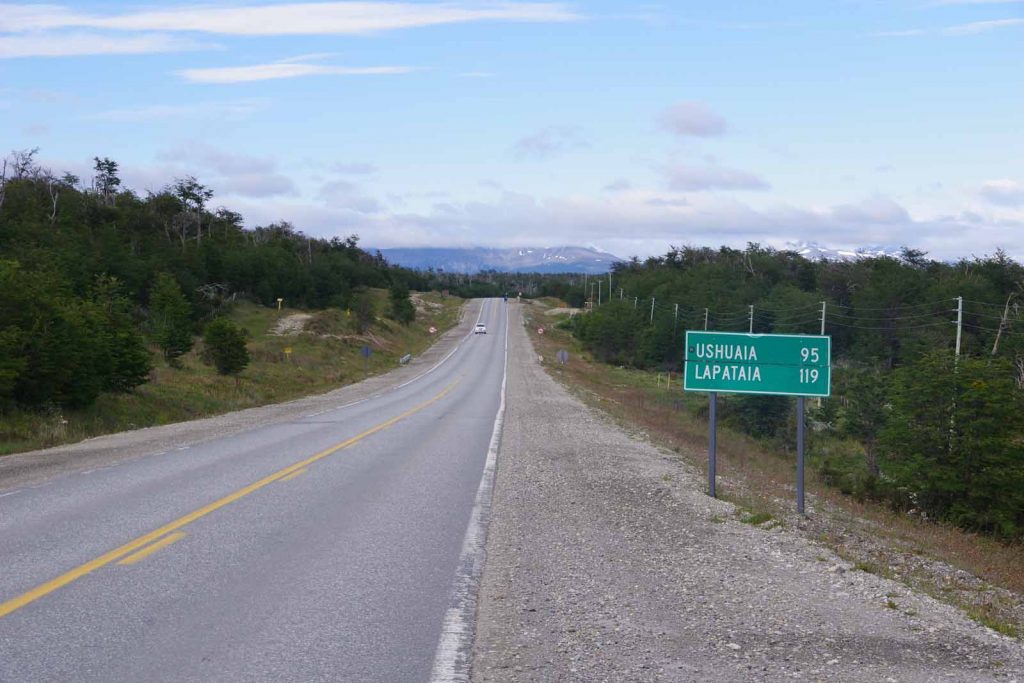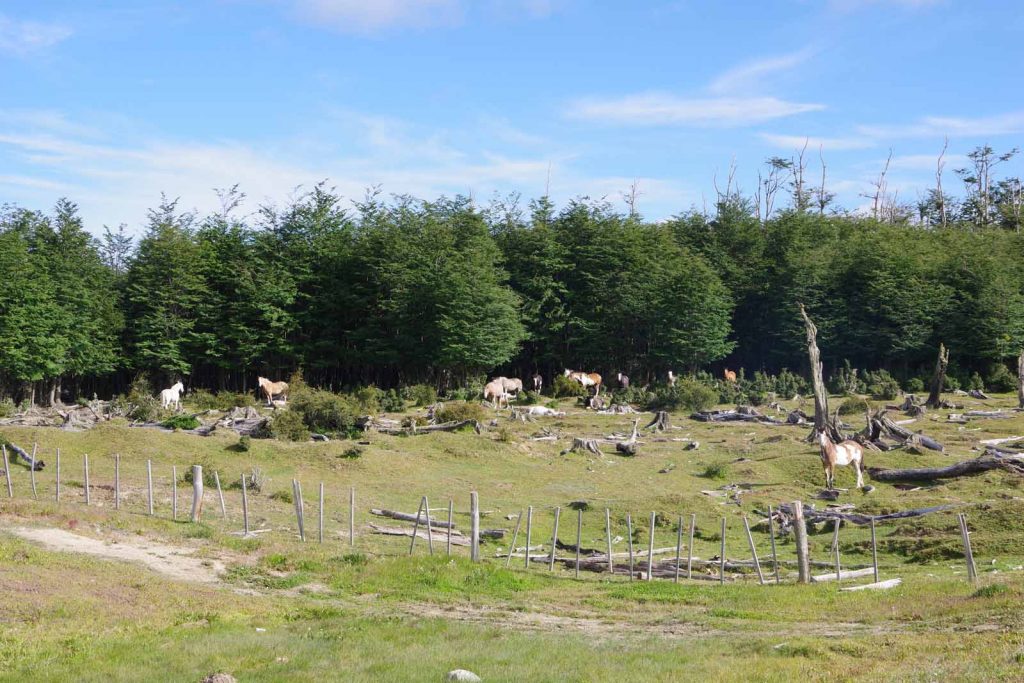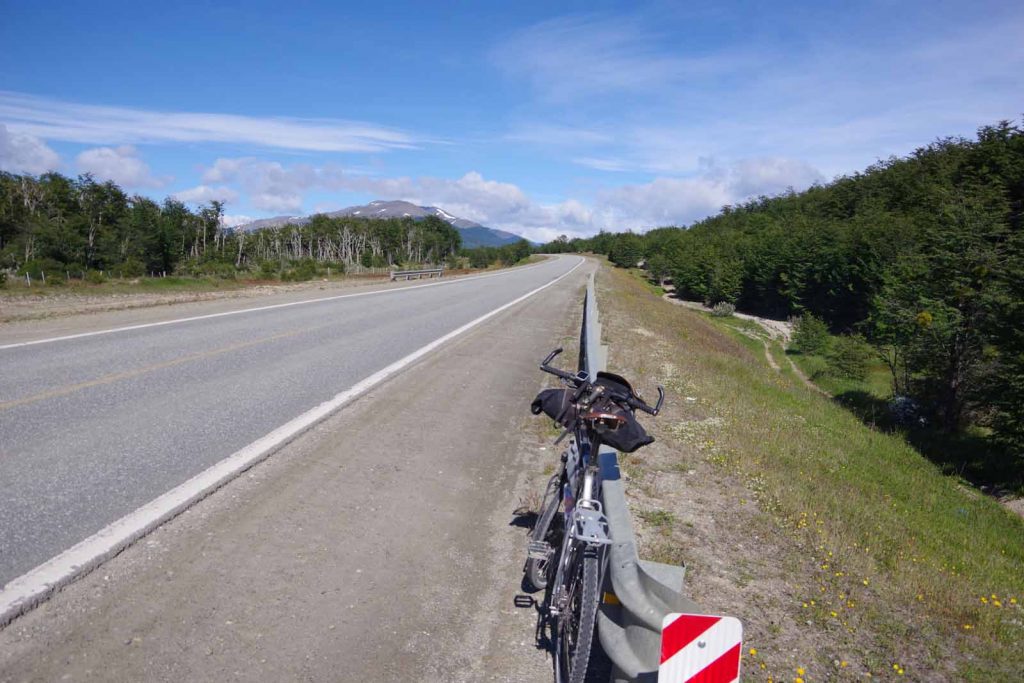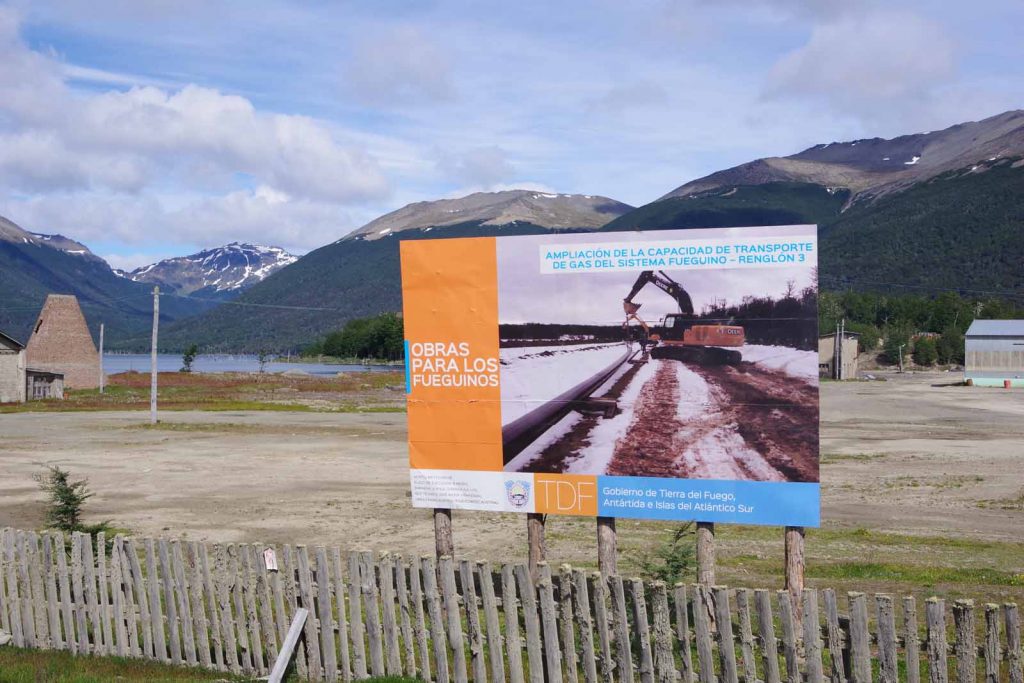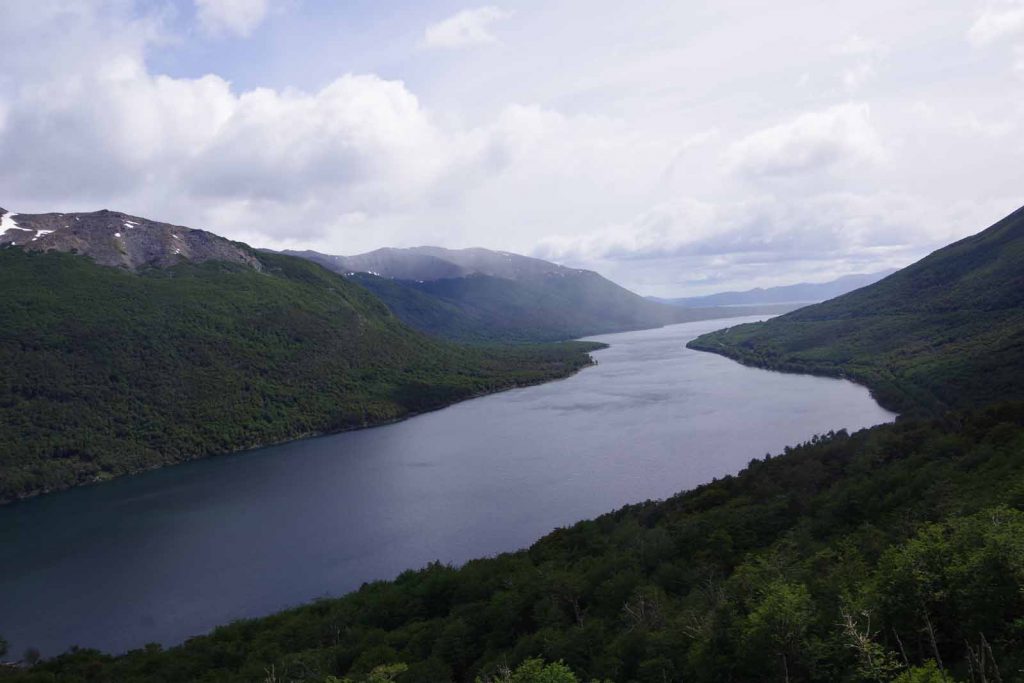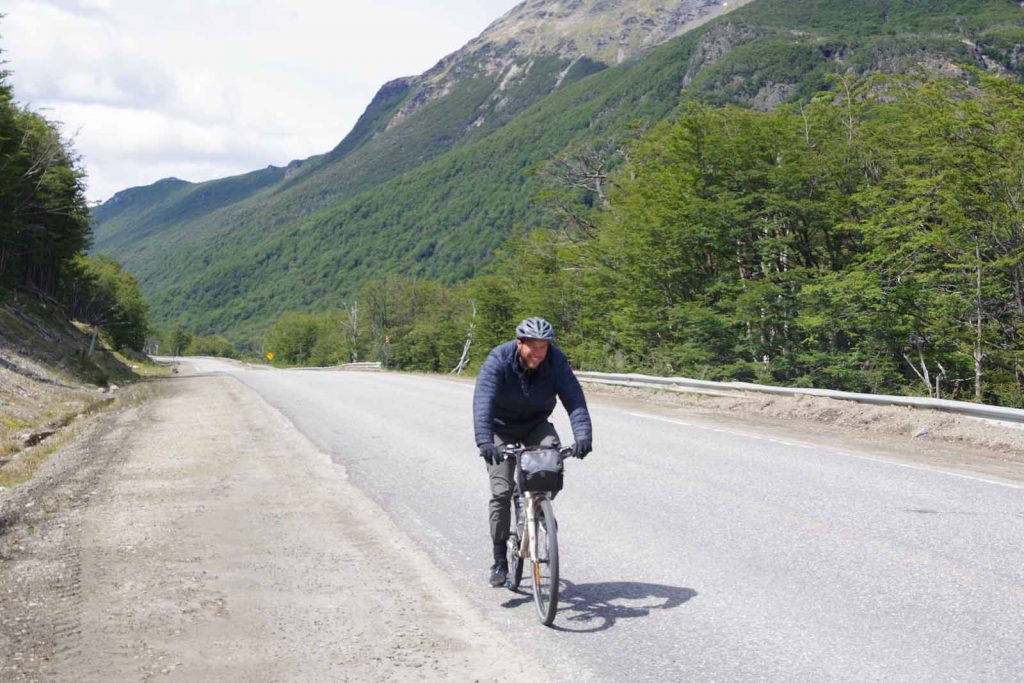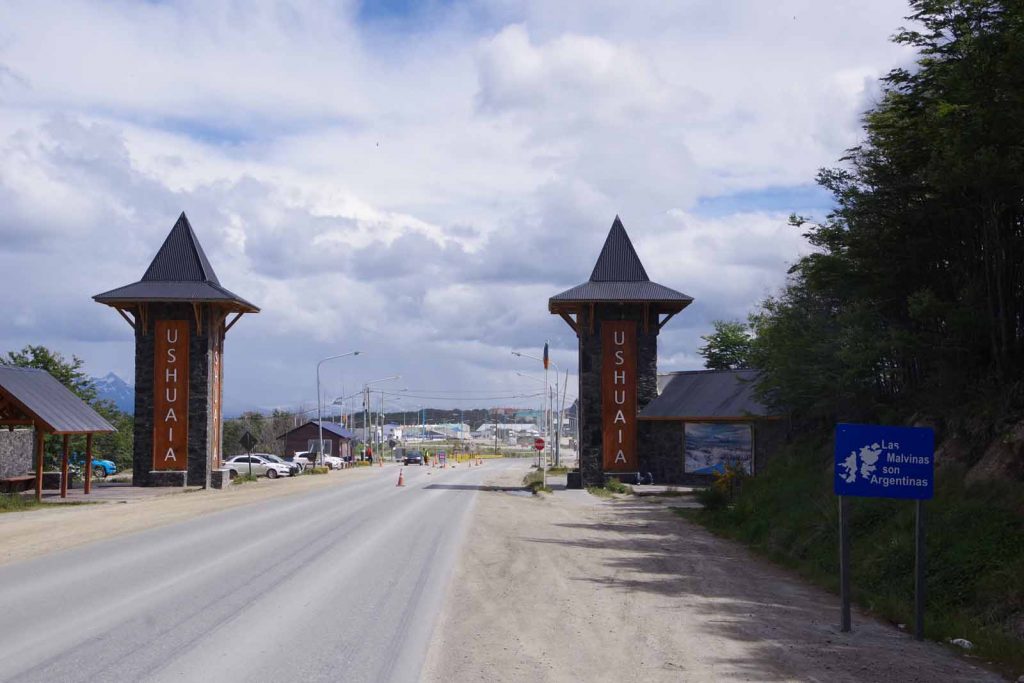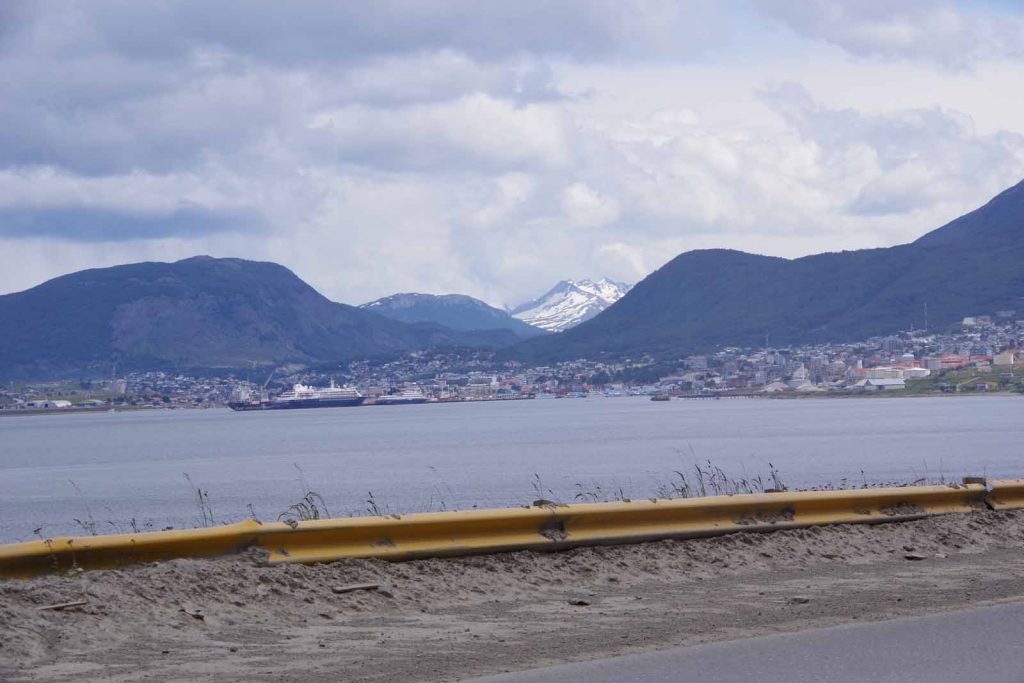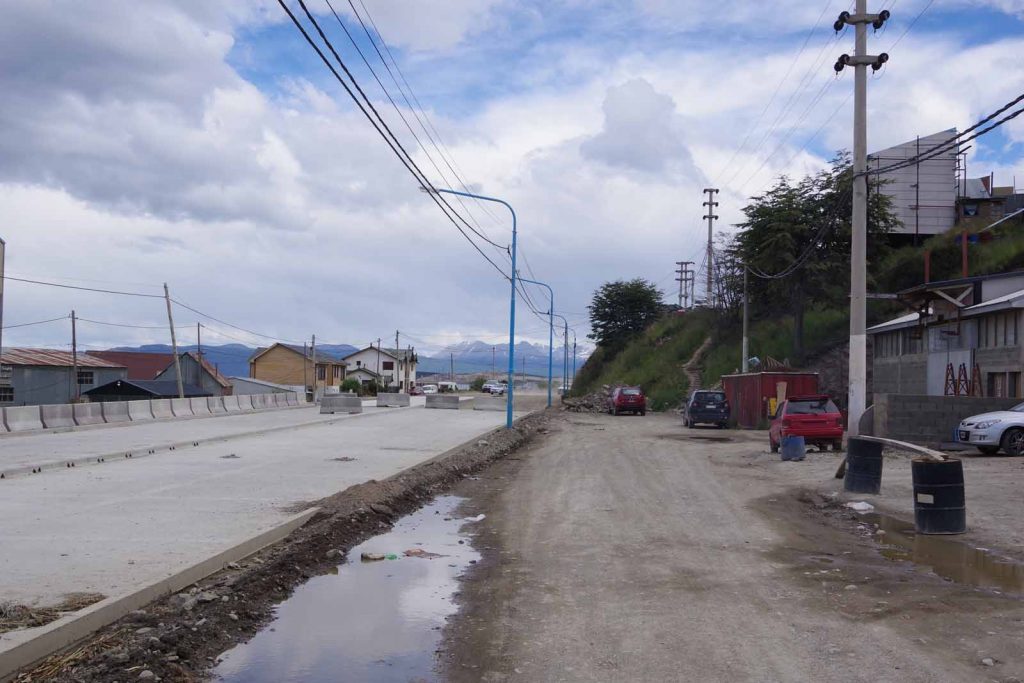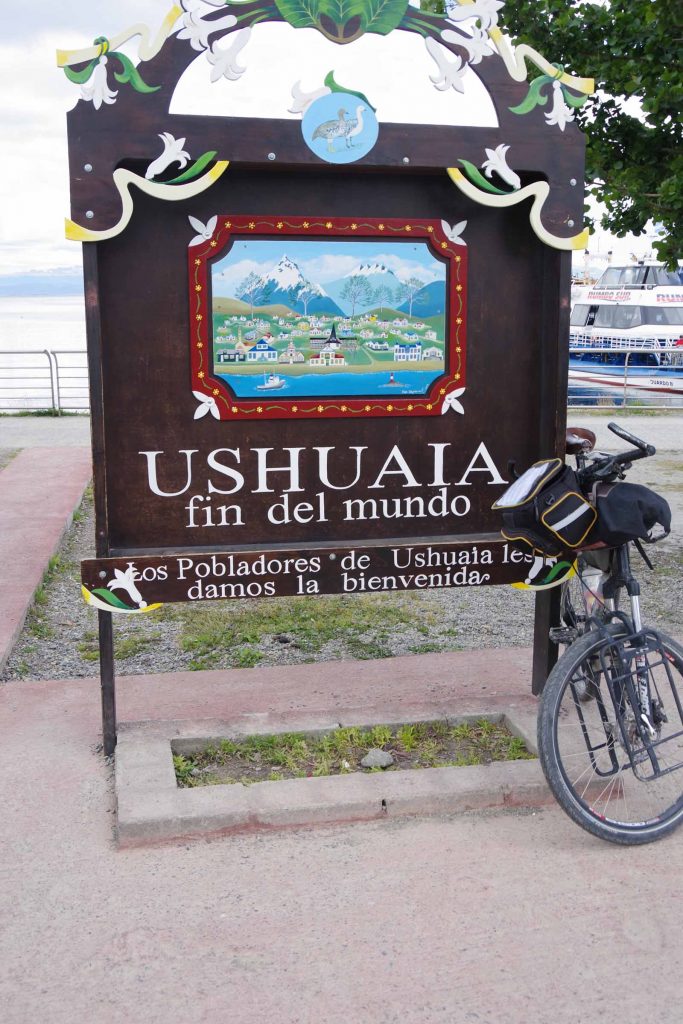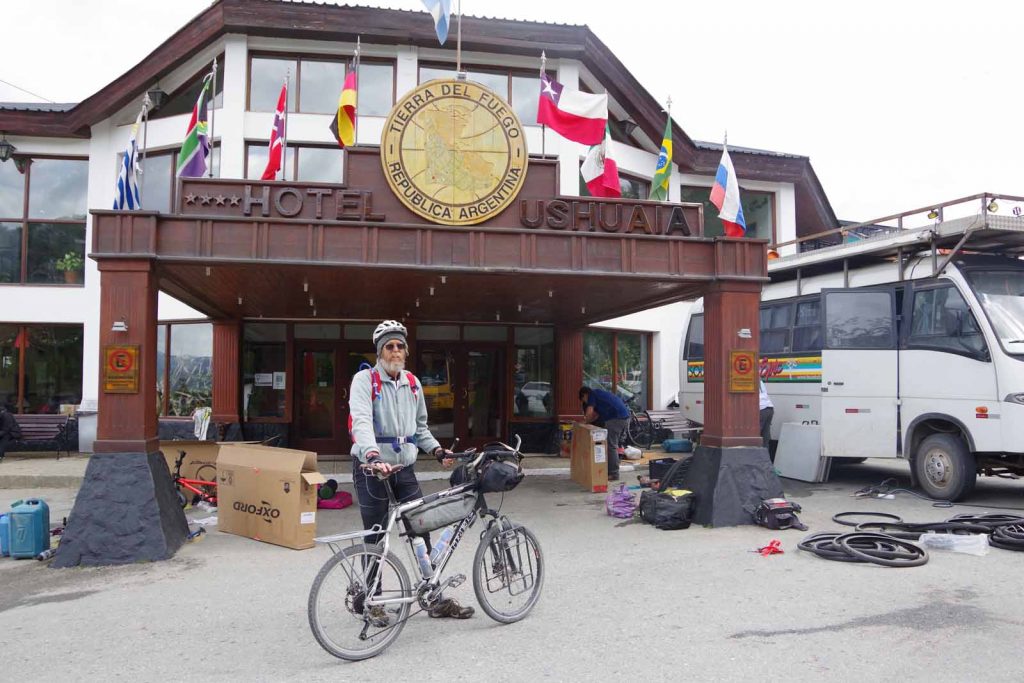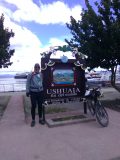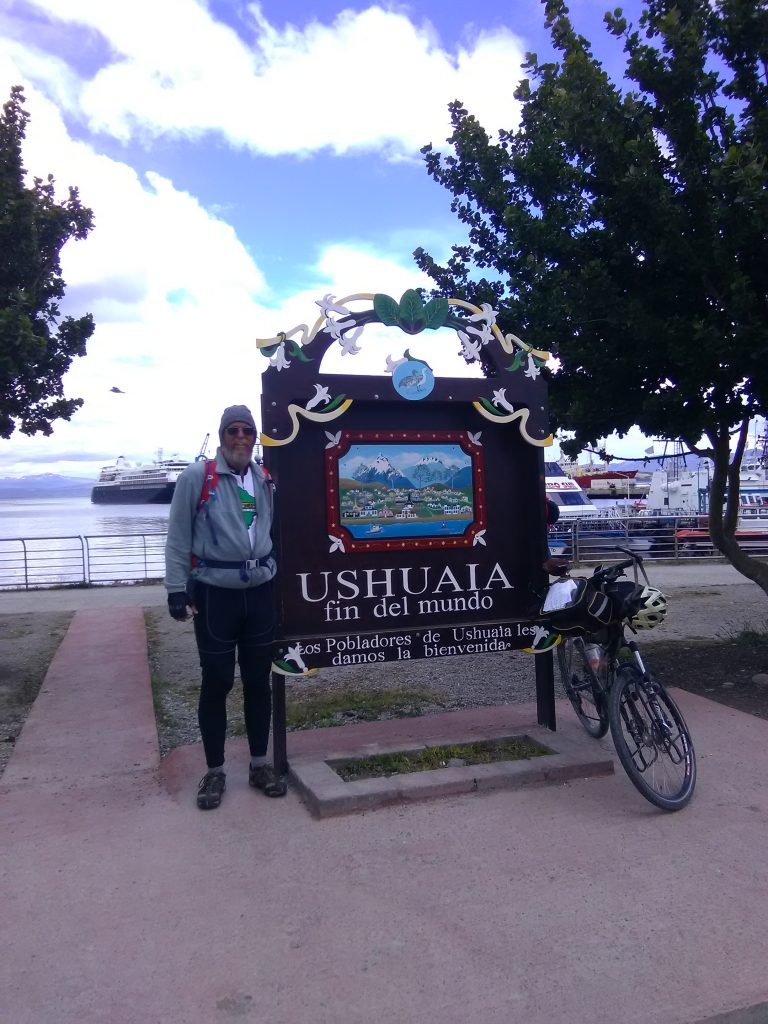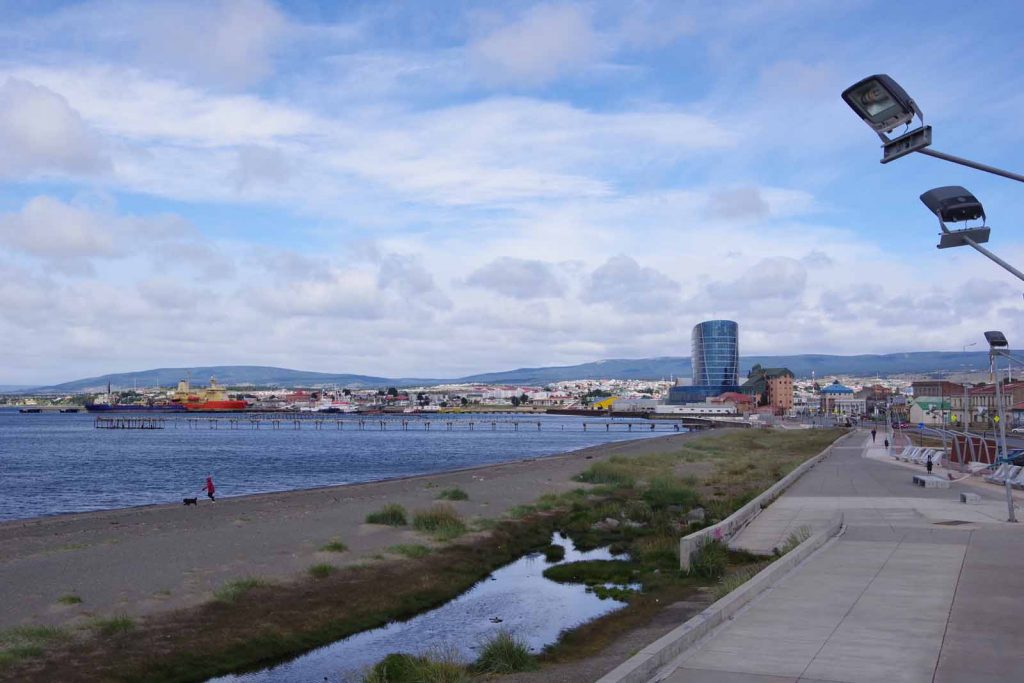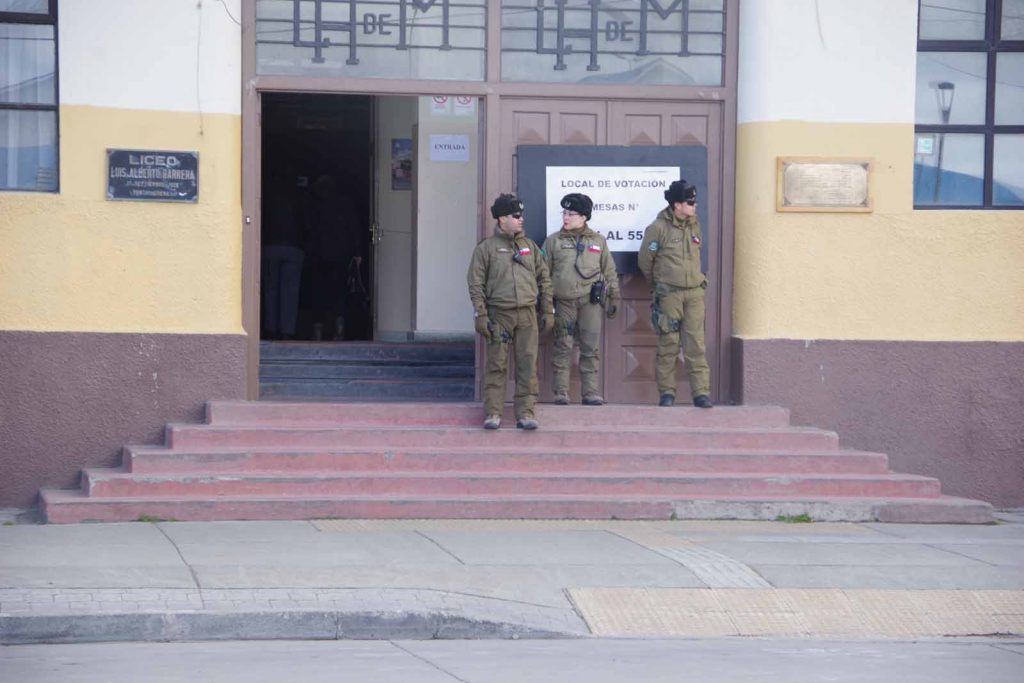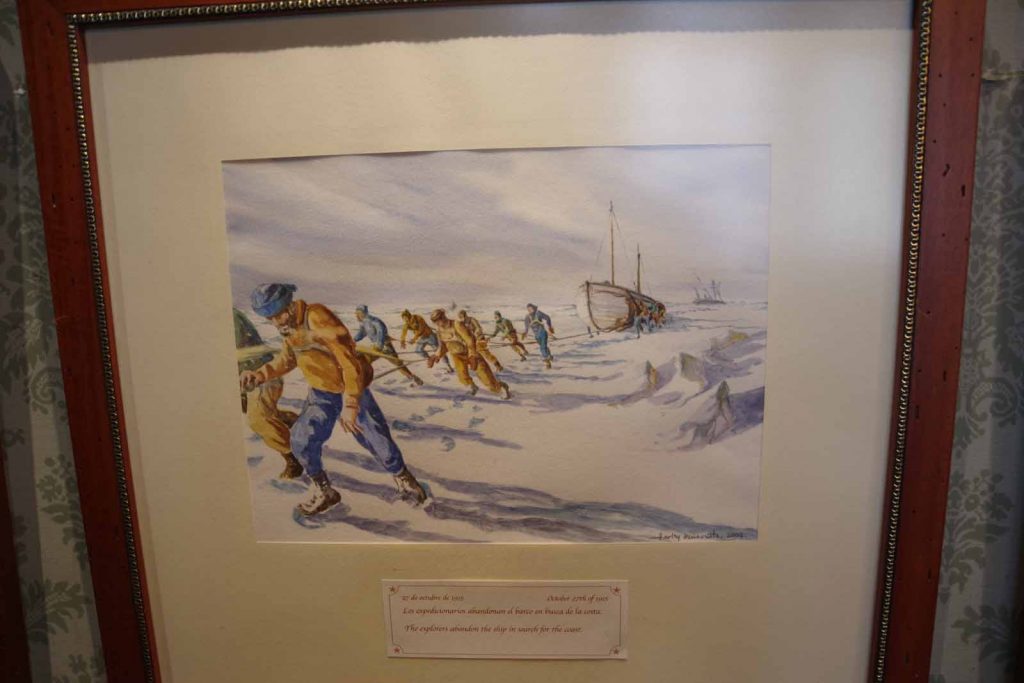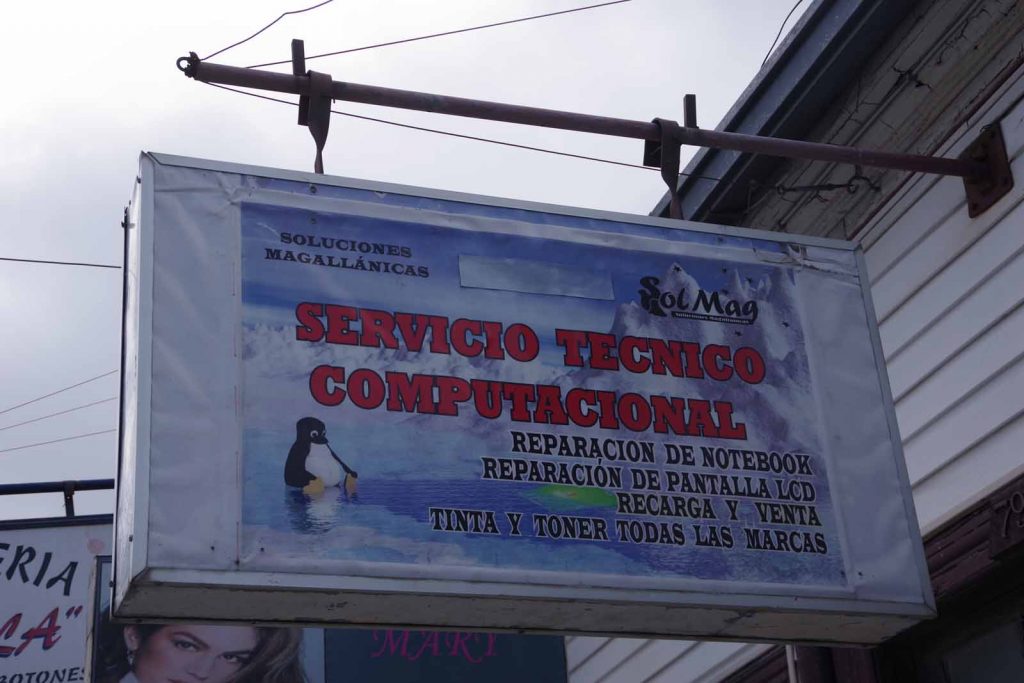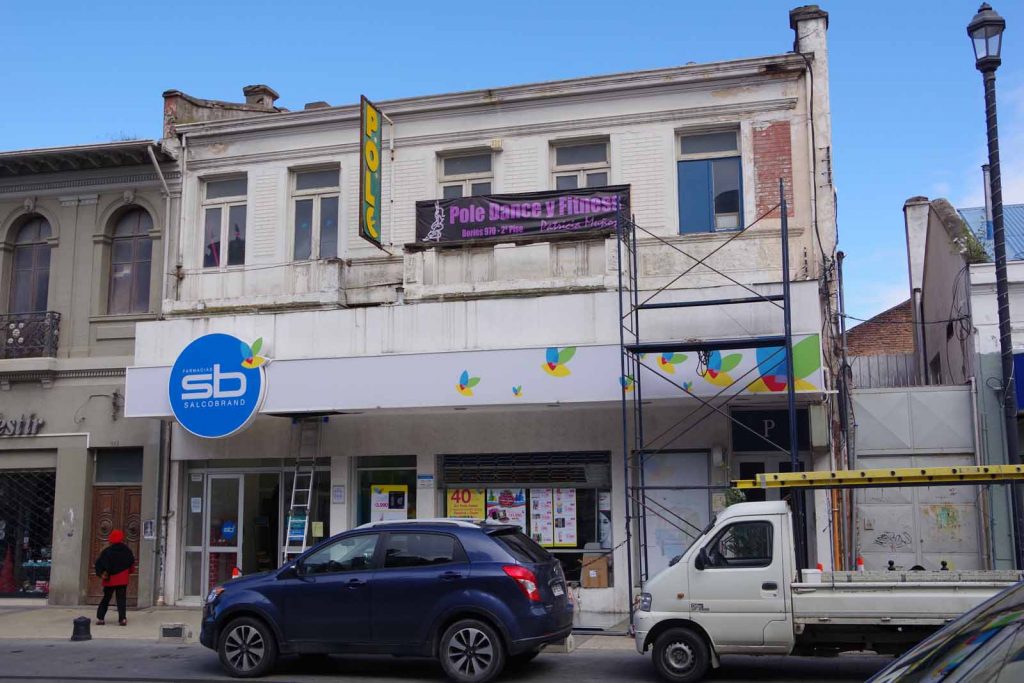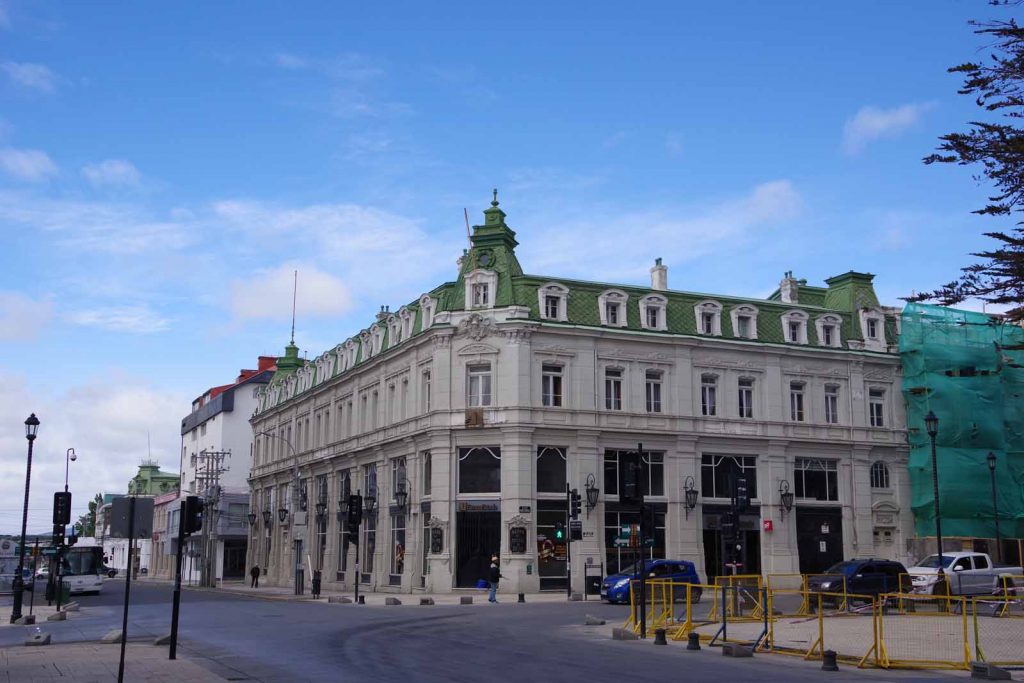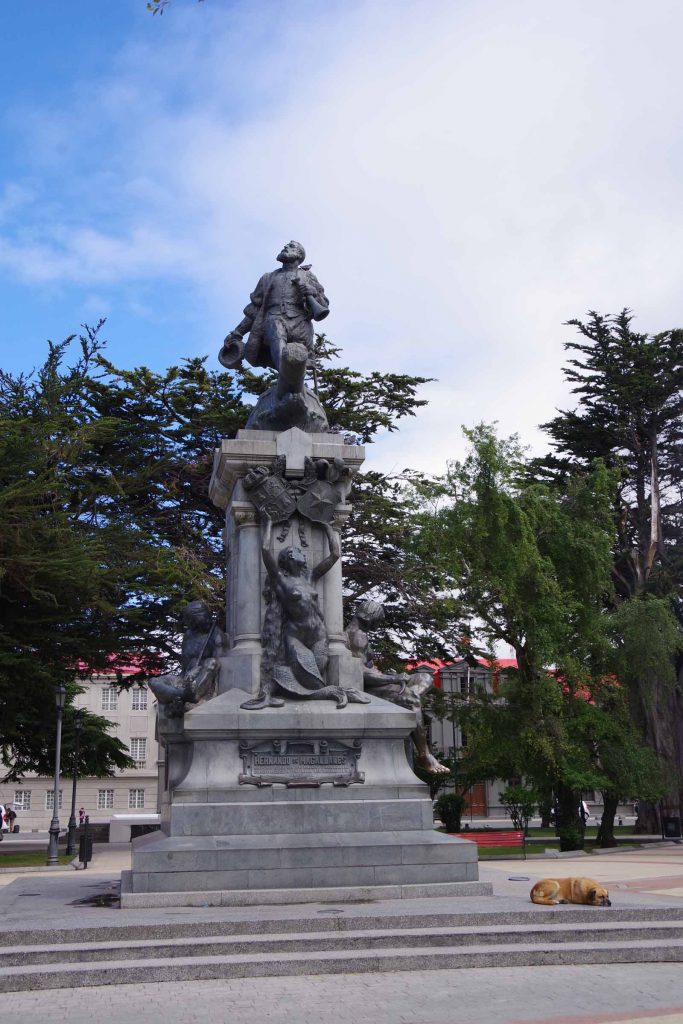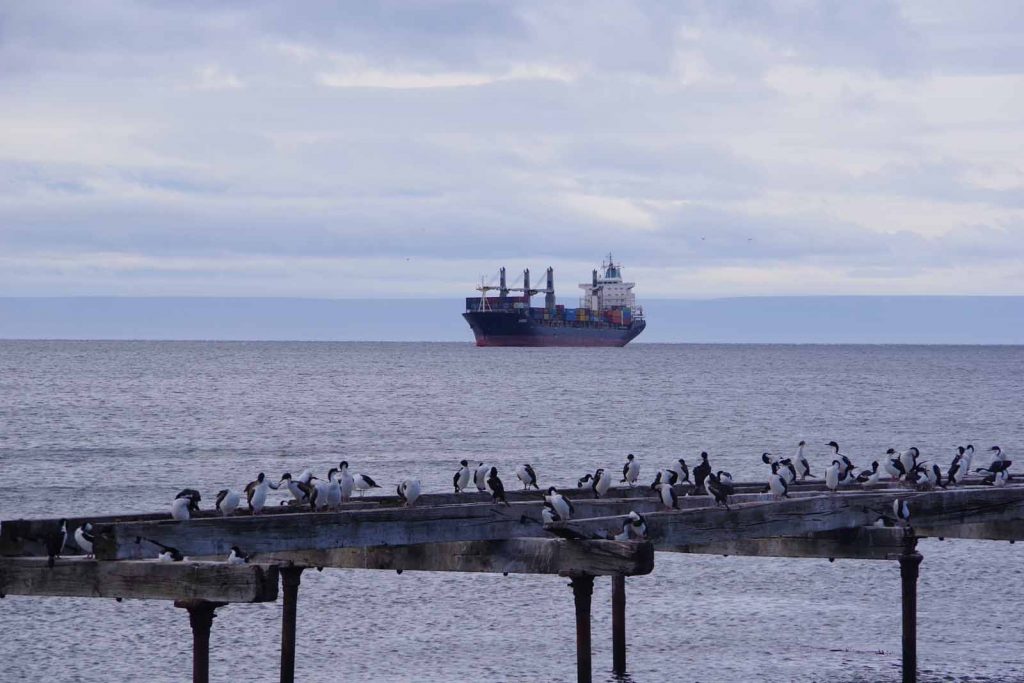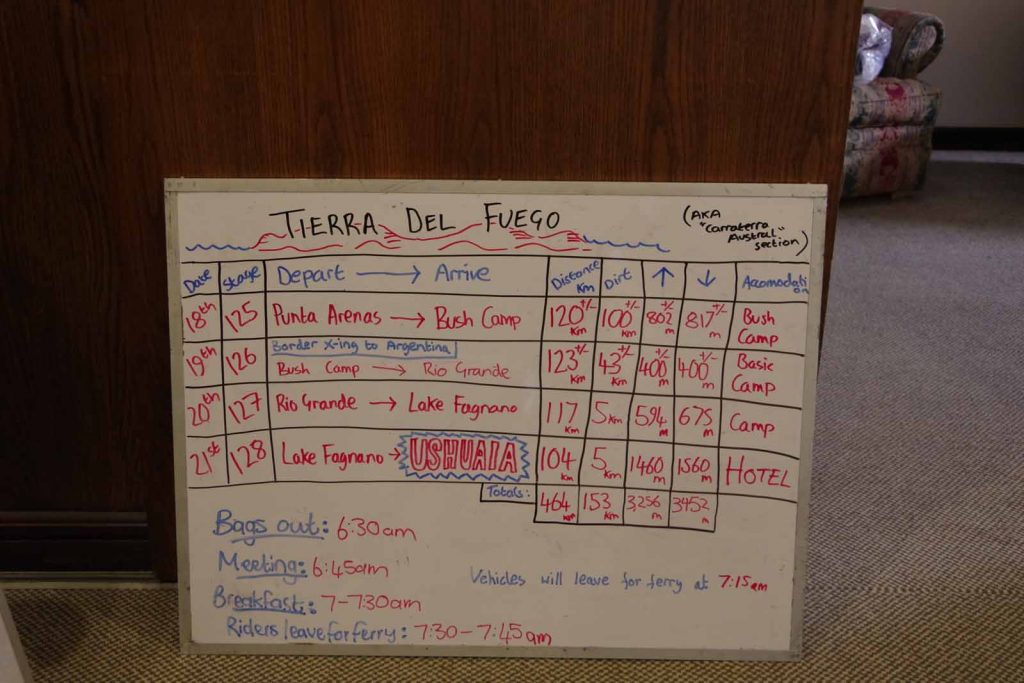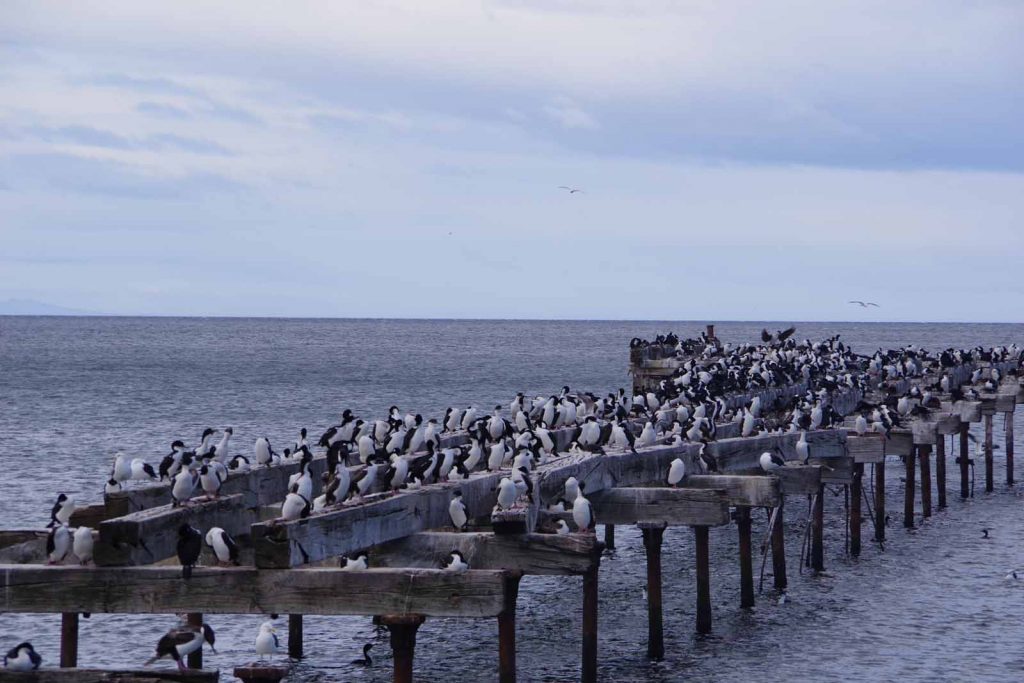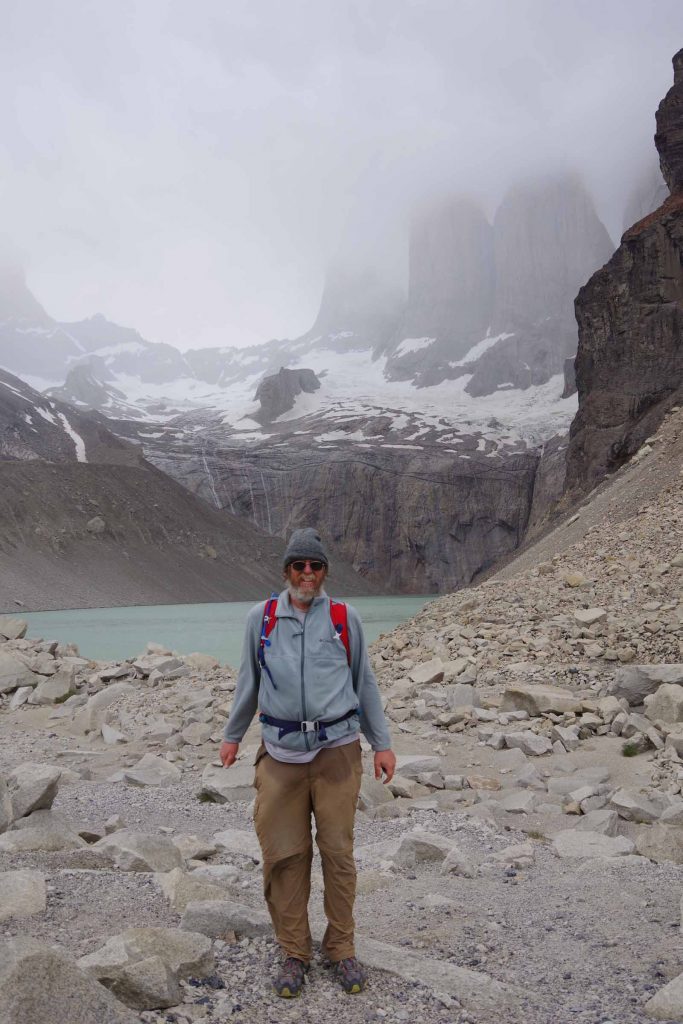
Seven days cycling along with a rest day at Torres del Paine have brought us to Punta Arenas. This city of 100,000+ is the largest city in this southern part of South America and sits on the straights of Magellan with the island area of Tierra del Fuego across the bay. We experienced Patagonian weather on our way here, some wind, some rain and some cold. We have a rest day here before four days cycling to Ushuaia.
Day One – La Leona
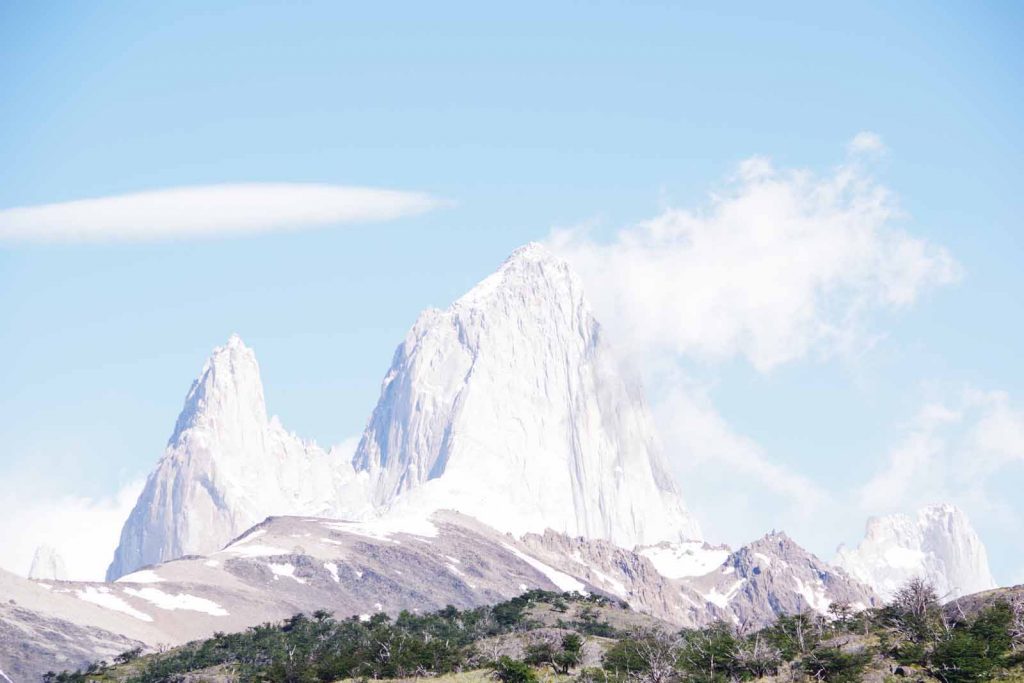
One last picture of Mount Fitzroy from a hike near El Chaltien.
Tailwinds! A day when the winds were mostly in our favor with 88km of easy riding and 21km of more difficult crosswinds. A bit of “end game fever” has crept into the group. The tour leader, Emily, mentioned the riding days would now “go into single digits after today” and one could tell, many folks had counted “11” and were quick to correct.
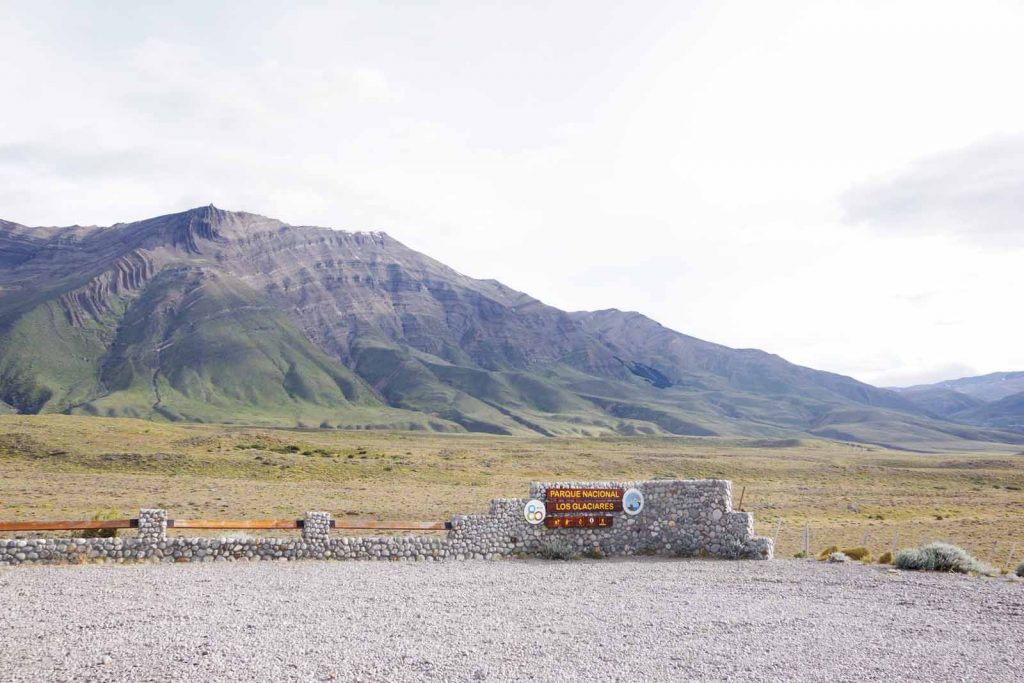
It was gusty winds starting out. As the canyon twisted, the wind came from different directions. Sometimes cross, sometimes tailwind, but eventually settling to mostly from behind.
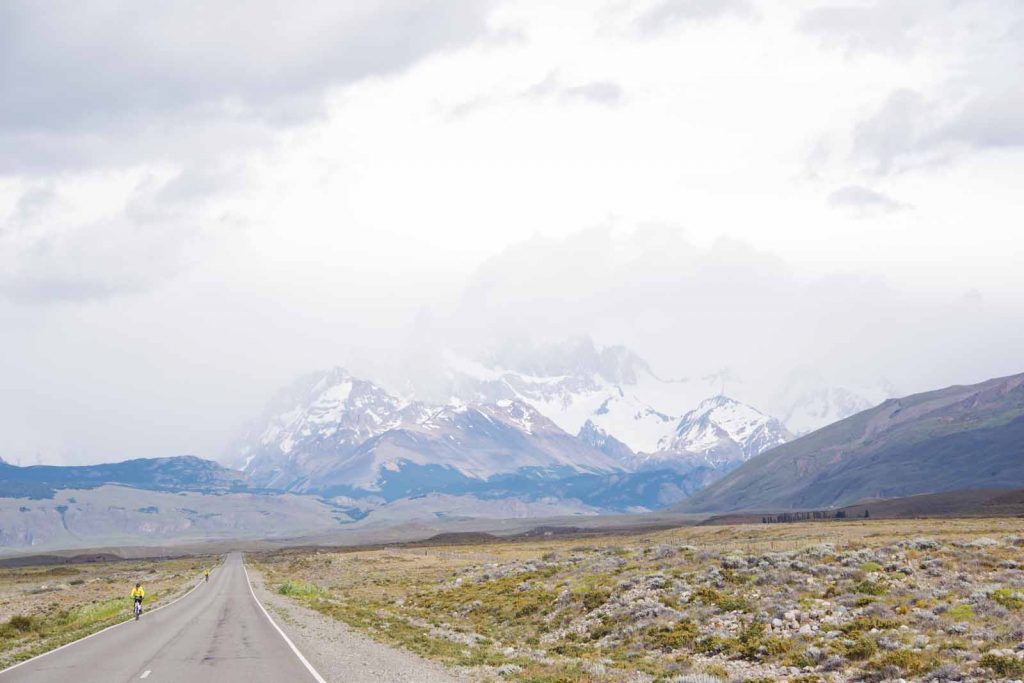
Looking back, one could see a glacier up against the mountains.
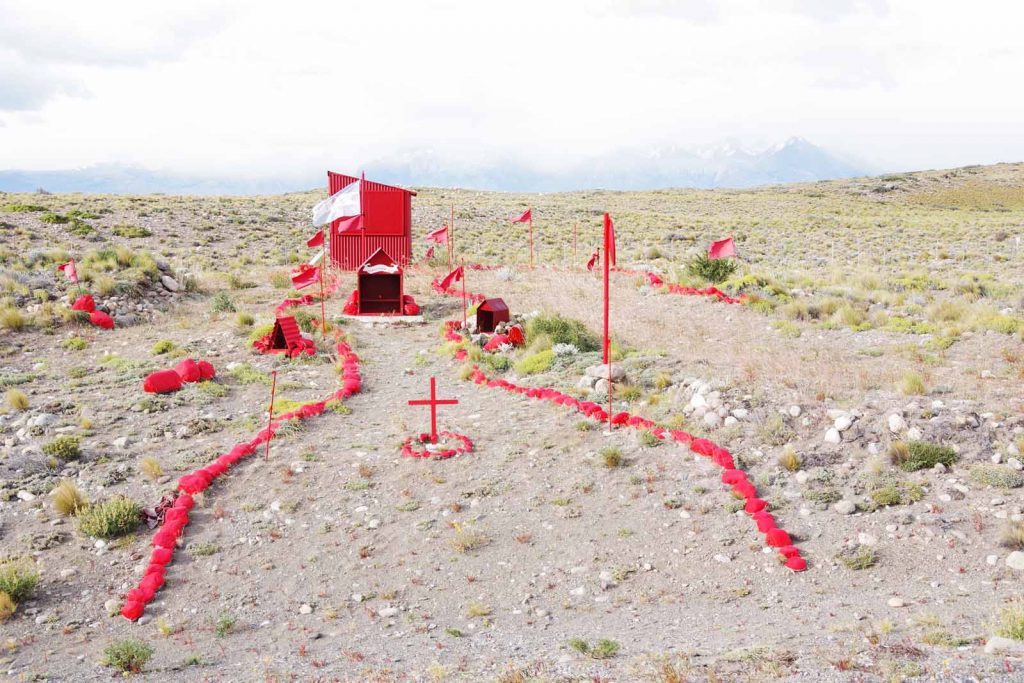
Back to a land with Gauchito Gill shrines.
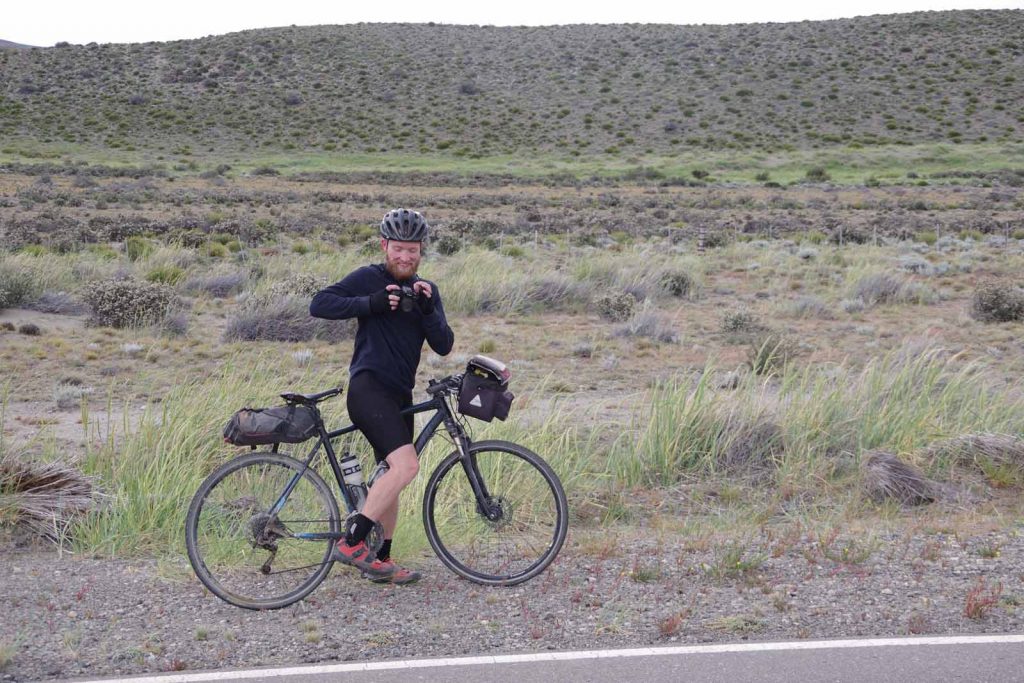
Jacob our staff member responsible for communications, getting ready for a photo.
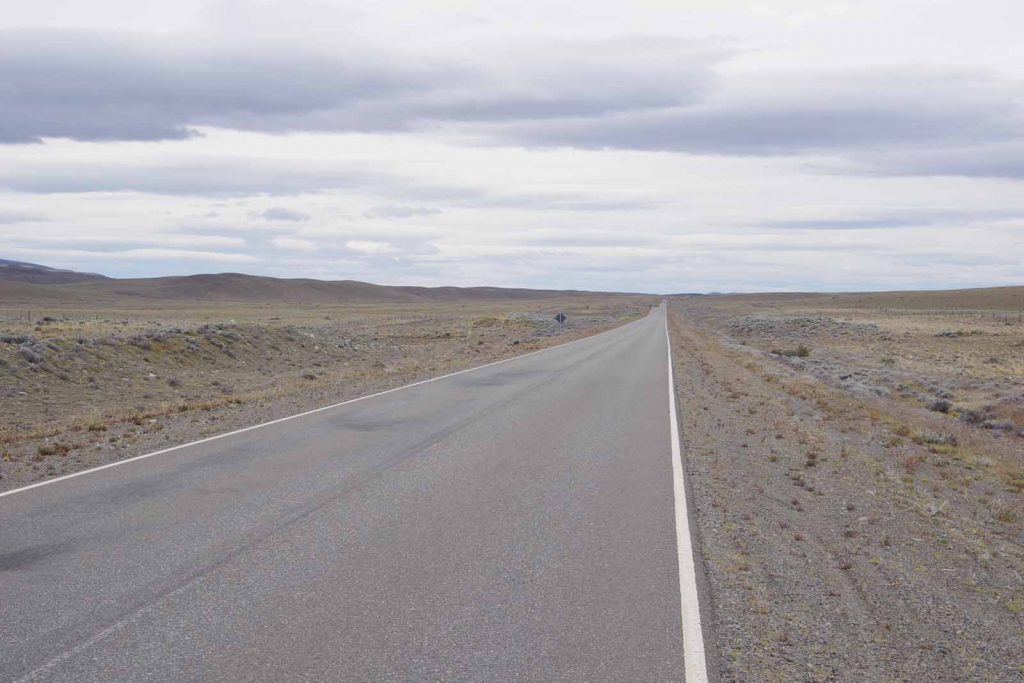
A lot of long straight roads made for easy cycling.
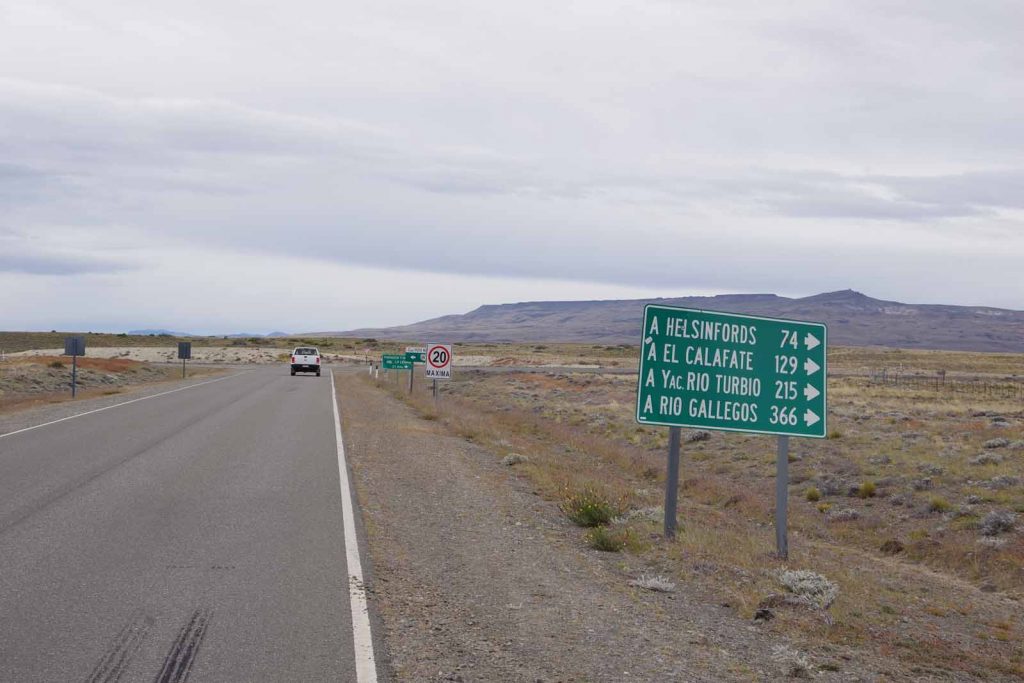
At 88km the tailwinds came to an end as we rejoined Ruta 40 and went more across.
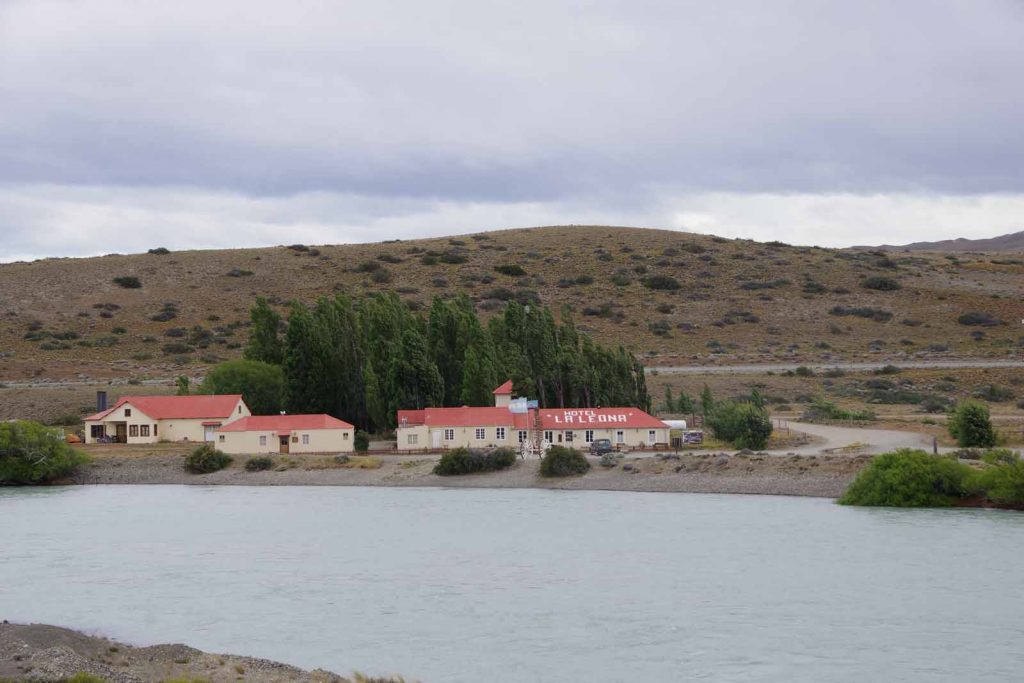
This brought us to La Leona roadhouse. The roadhouse was named because an early settler was killed by a puma (leona) at the point where a river crossing required boats or extra care.
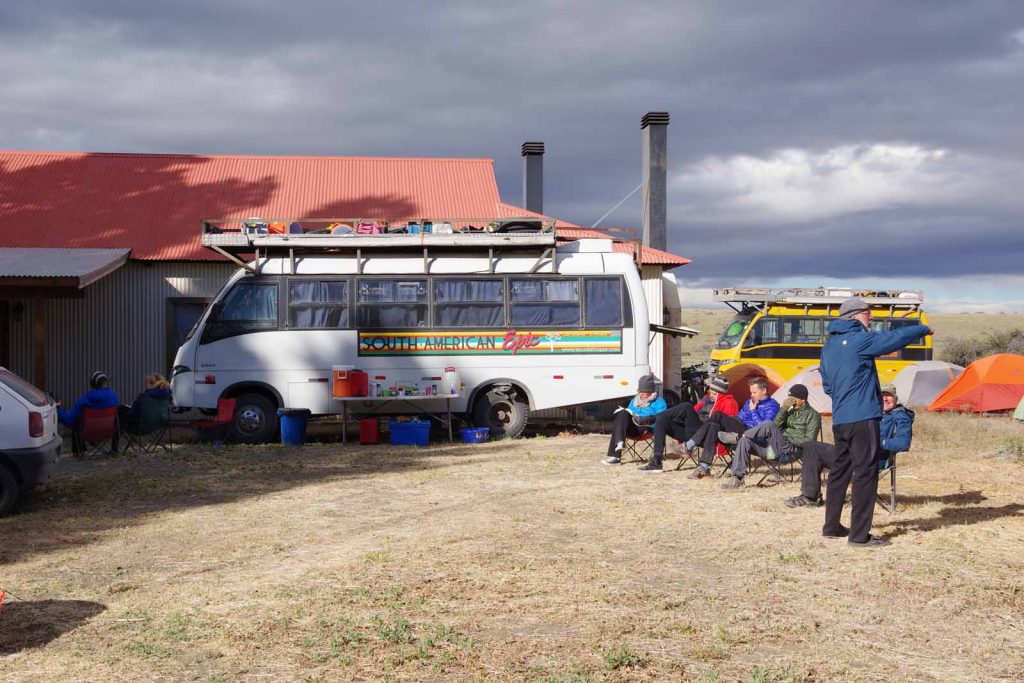
The TDA group relaxing while we wait for dinner.
Day Two – El Cerrito
A ride of 136km today, but promised to have good strong tailwinds. For the most part these were manageable with only the last 35km on top of the mesa with extremely gusty winds that sometimes made it difficult to stay on the right side of the road. Fortunately, not much traffic.
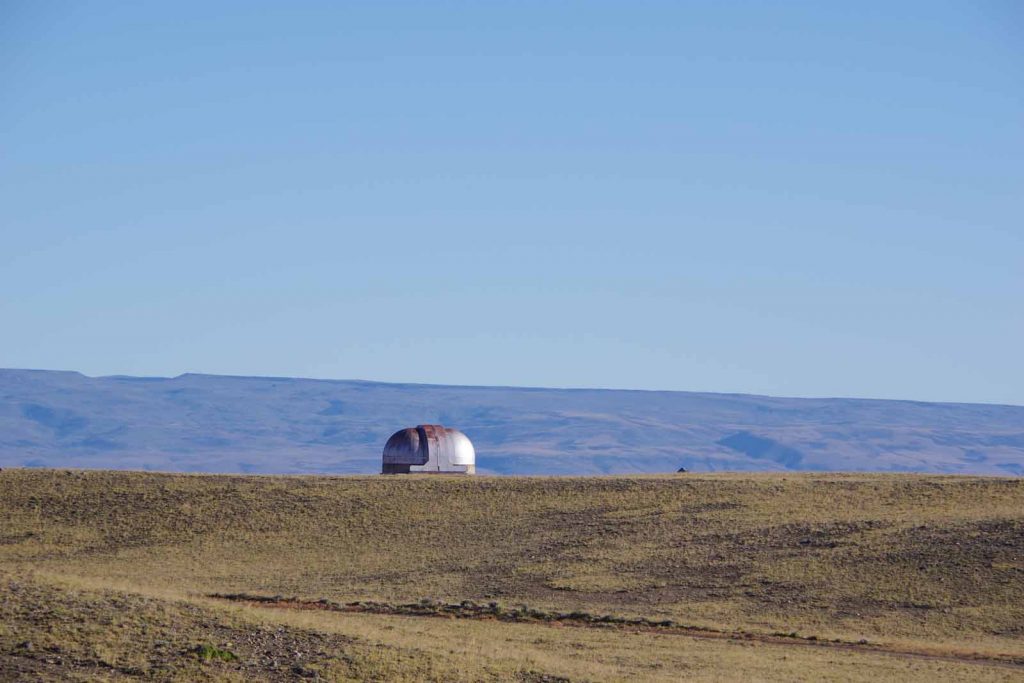
We passed what looked like an observatory.
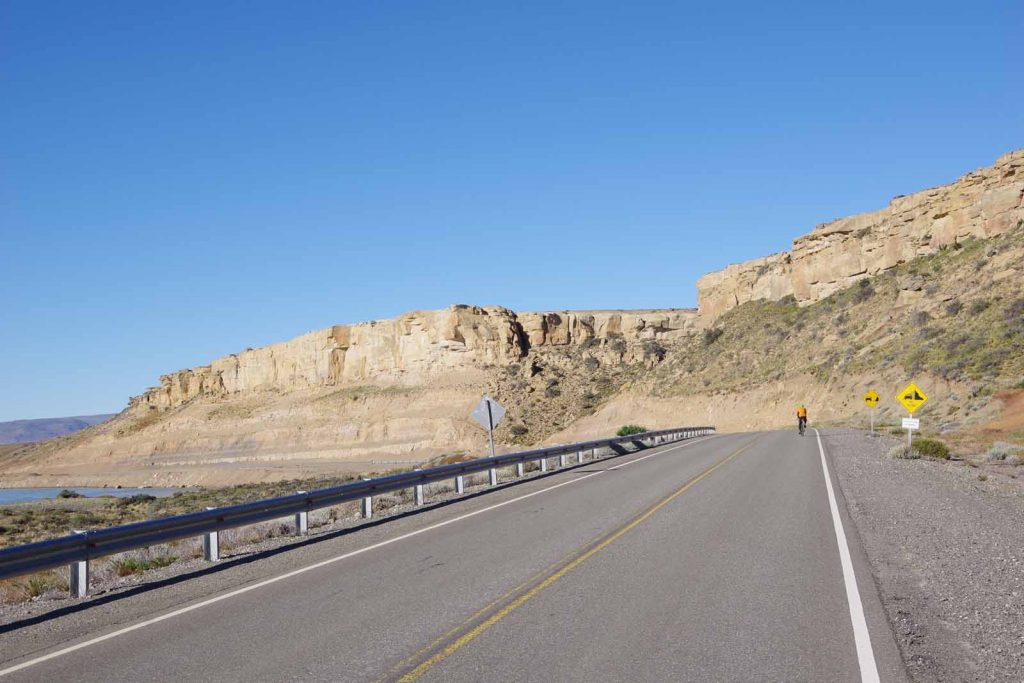
This first part went along a wide canyon.
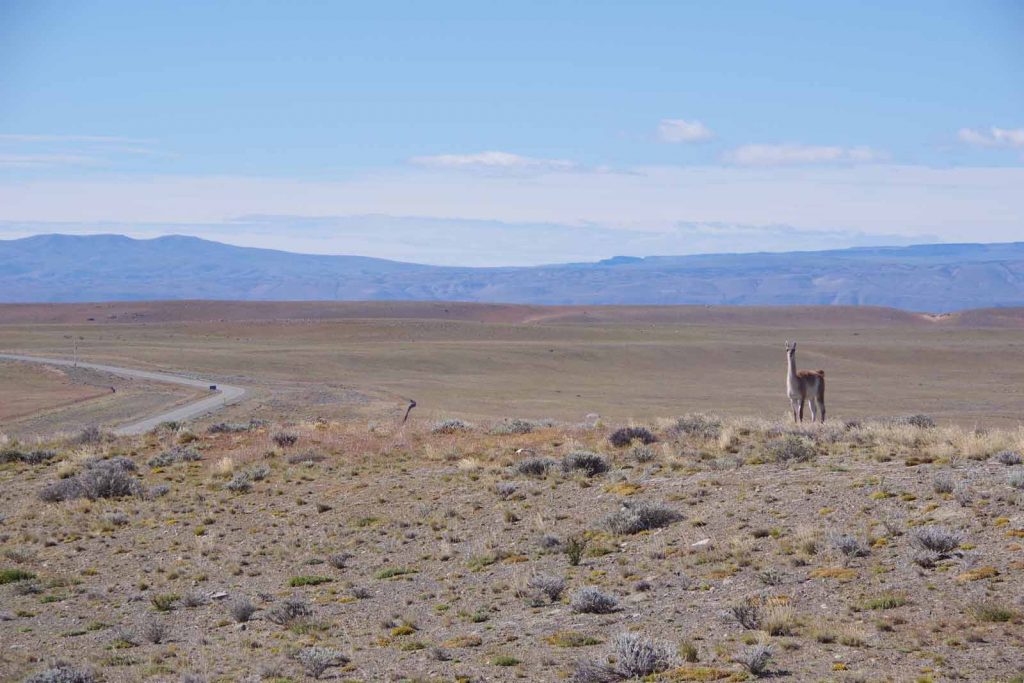
A herd with several of these animals not far from the road. Further back were fences so they sometimes ran parallel to our direction for a while.
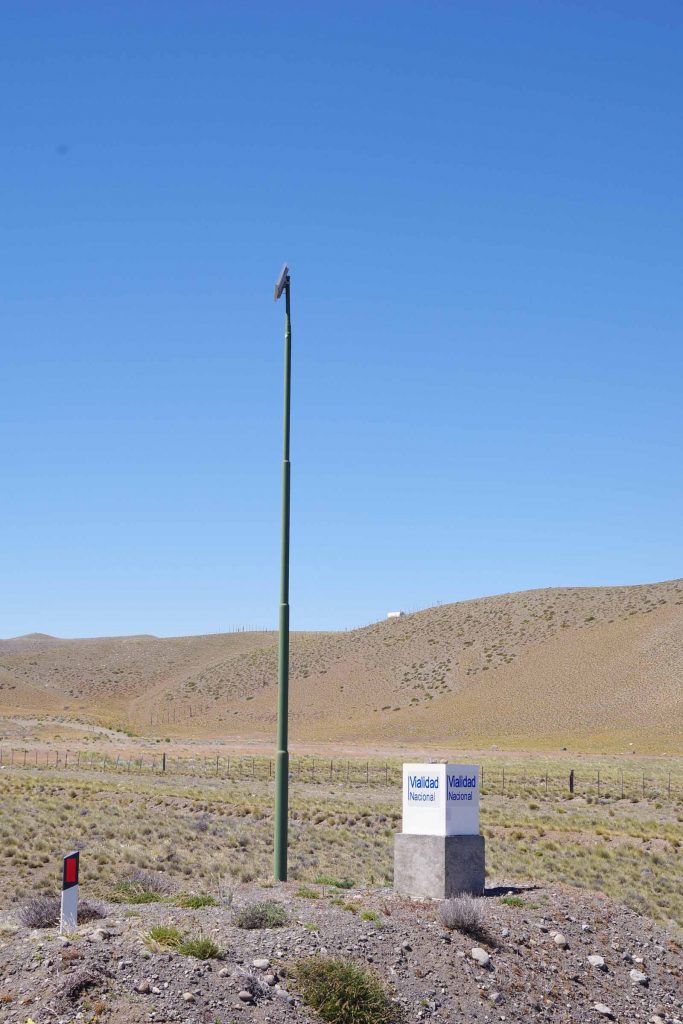
Looked like an emergency box.
From 84km to 102km we had a steady climb around 6% grade that brought us to top of a plateau. The climbing was occasionally helped with a boost of wind from behind.
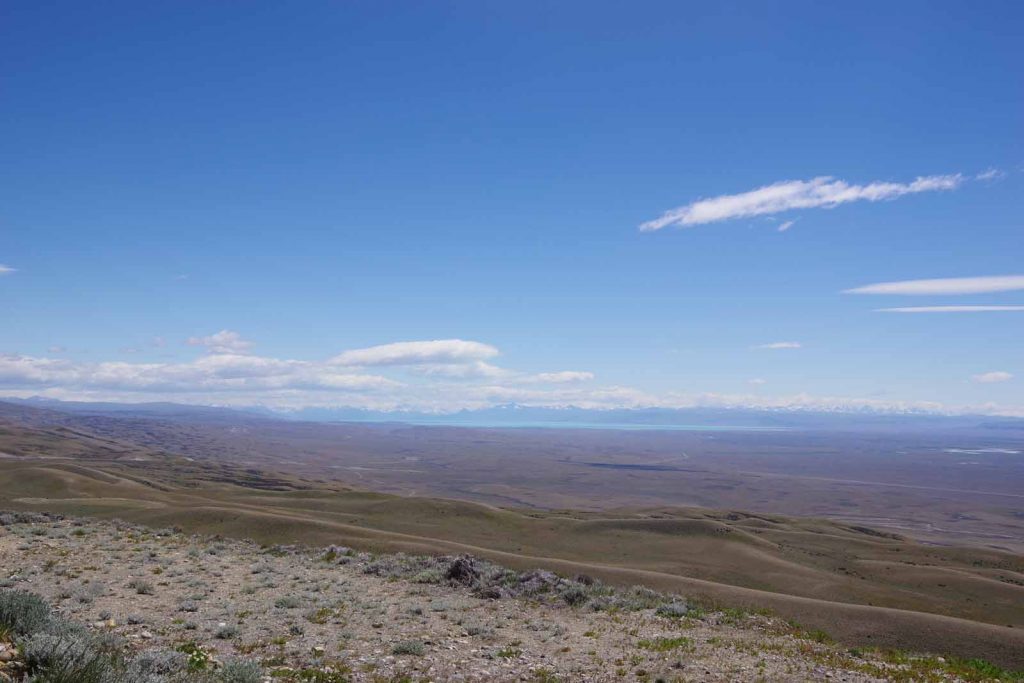
Nice view up top but even more windy. I cycled carefully but on a few occasions found myself blown across the road and off on the left side.
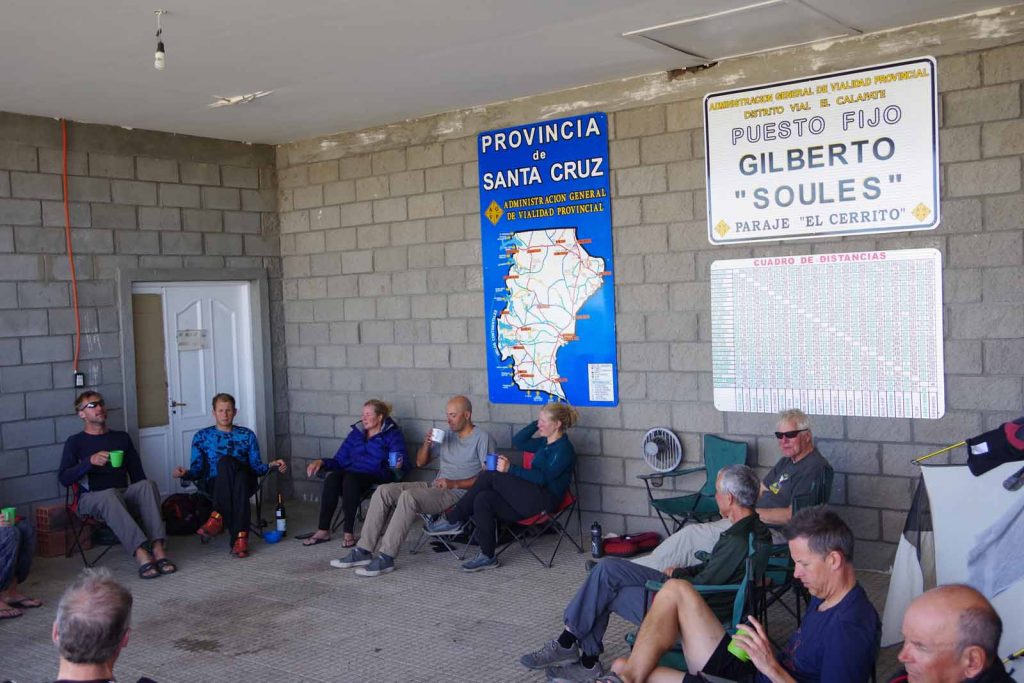
Our campsite of El Cerrito was a road maintenance workshop. The wind was still gusting strongly and hence it was suggested we wait until after 7 pm to set up tents when the wind was typically less. One of the riders of a previous section had left behind some money “for a particularly grim day” and riders had used this to buy some wine and drinks in El Chalten and bring it for this day when we knew there wasn’t much more than a road maintenance camp. Thanks Fred!
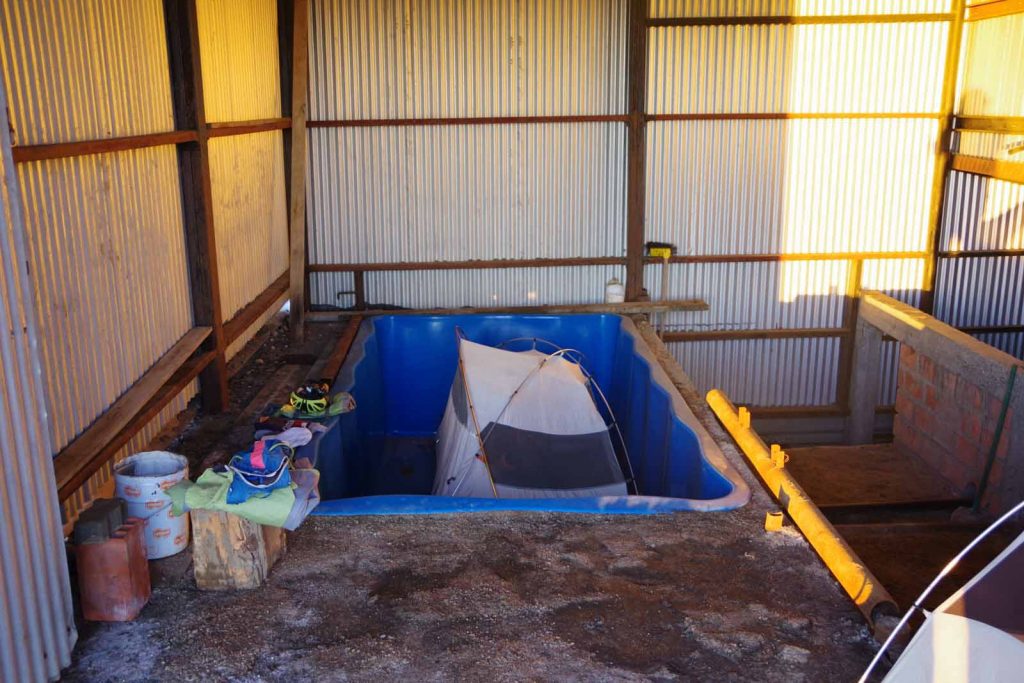
Nearby was a small maintenance shed. Tom had found a spot to pitch his tent in the bottom of this tub (used to mix chemicals for the road, but now clean?). I set mine up in the same shed, though not in a tub.
That night the wind howled through the night and I was happy I was in a sheltered place.
Day Three – Cerro Castillo
A day to cross back over the border into Chile.
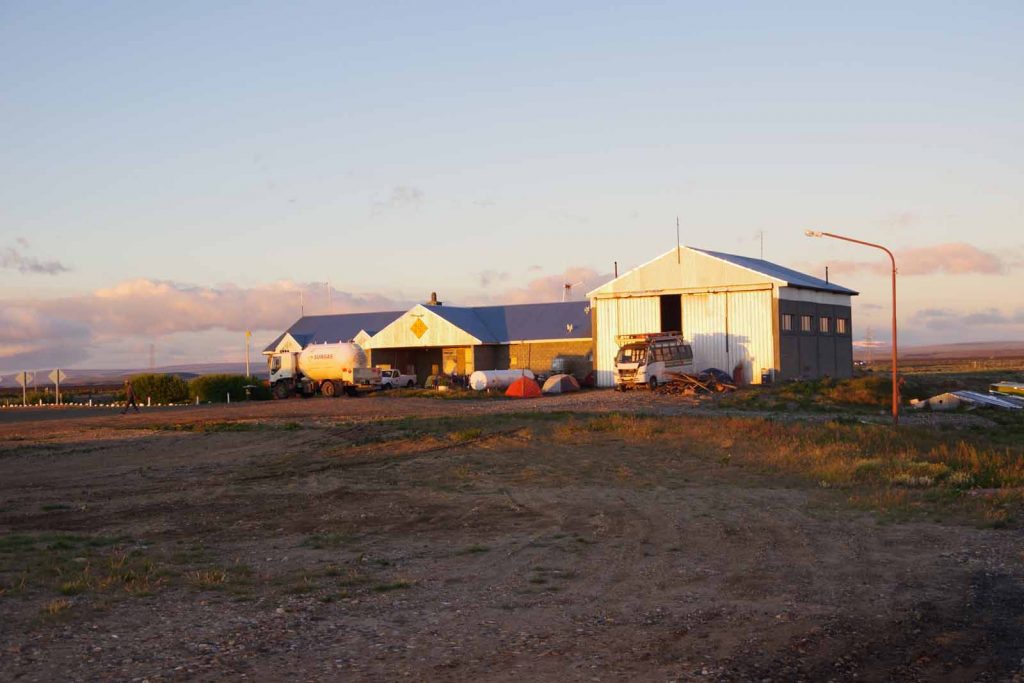
After howling all night, it was surprisingly calm for a while in the morning. This was good because we the route today would include some travel to the west and two years previously the TDA trip had this a particularly difficult day. We even had breakfast 30 minutes earlier to help riders possibly beat this wind.
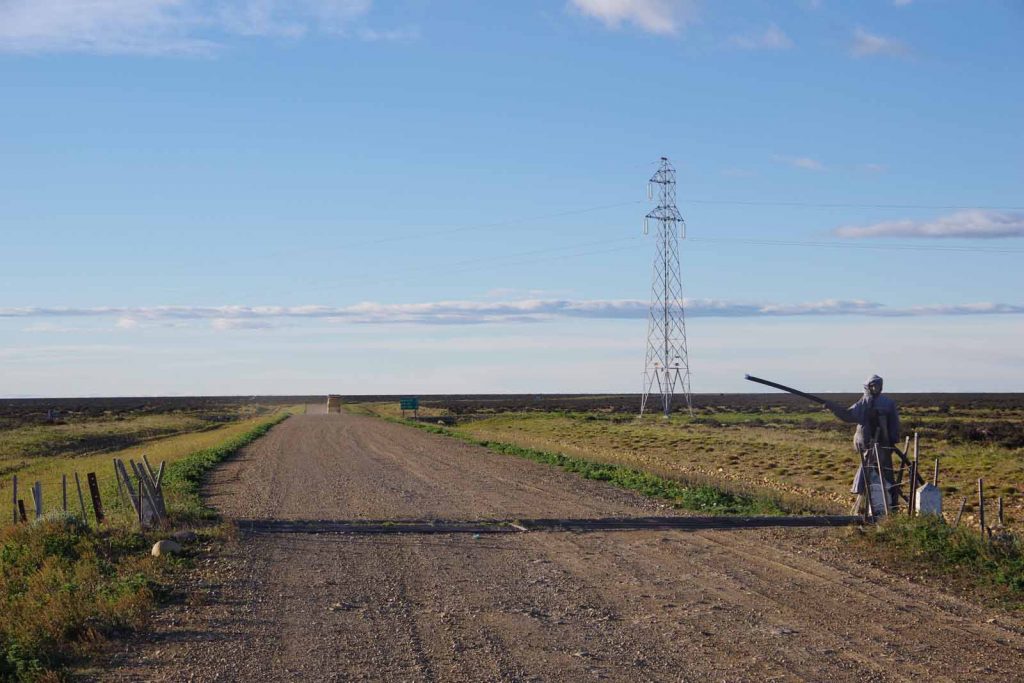
The first 65km were on this gravel portion of Ruta 40. A lot of it was reasonable cycling though there was ~15km in the middle with a large “river rock boulder” section that was particularly rough.
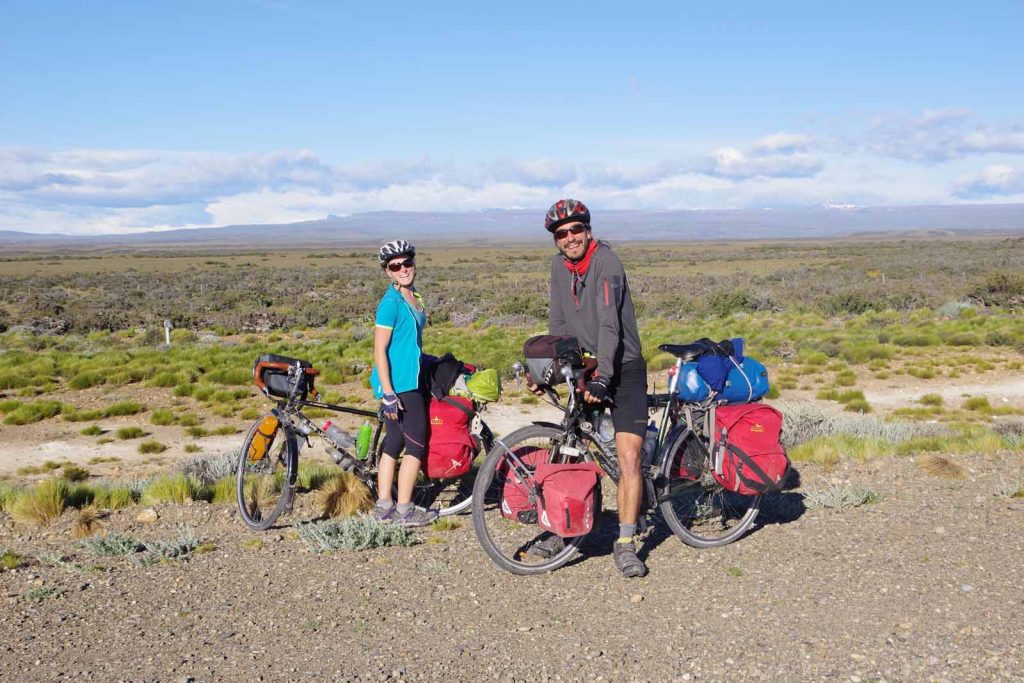
These touring cyclists from Quebec had stayed at our camp as well last night. It is interesting to see when these solo cyclists meet with a group like ours, they are often happy or even eager to talk with other cyclists.
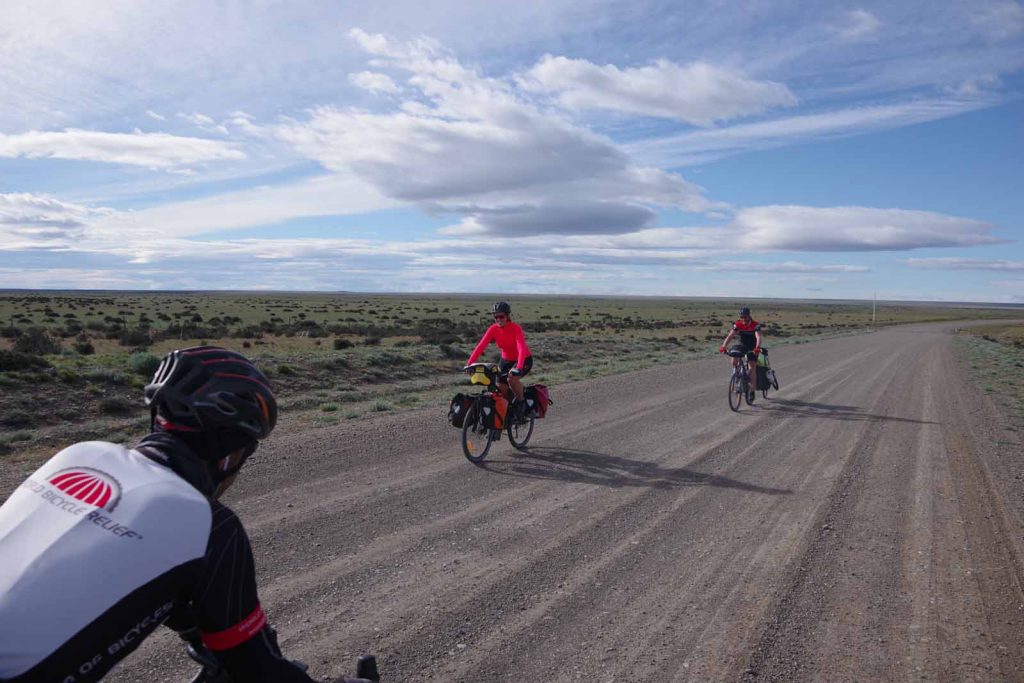
Some more touring cyclists coming the other direction on the gravel road.
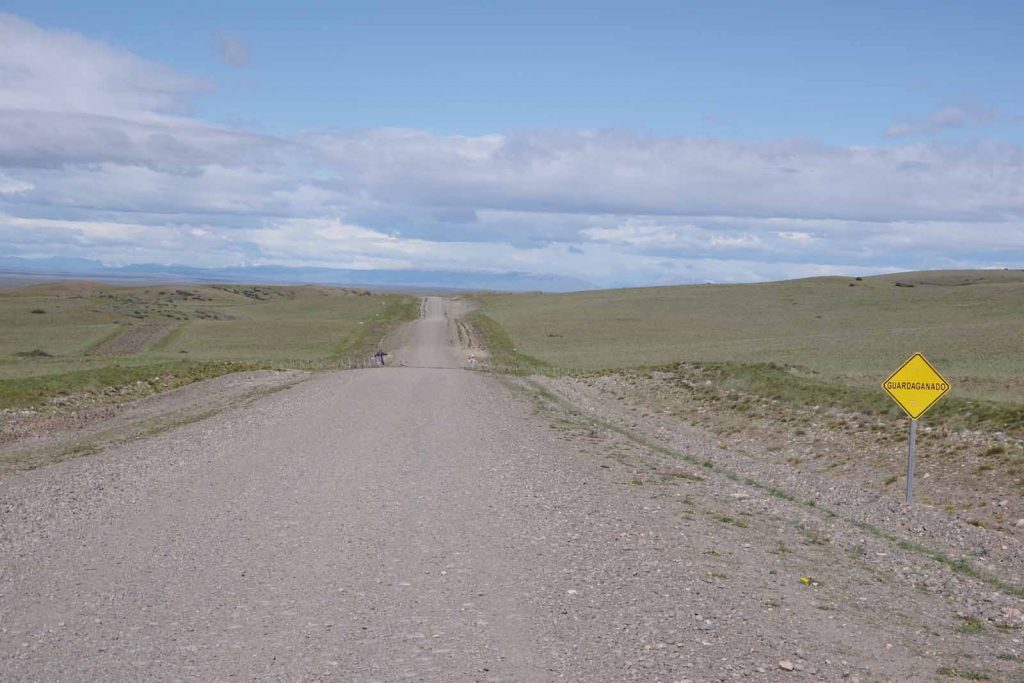
Guardagando is the new Spanish word of the day for cattle guard”
At 65km was end of the gravel road as well as lunch. From here the road was paved until 104km but also more into the wind. I decided to take the bus from here as it had been good riding and the riding through open areas with a headwind didn’t seem particularly enjoyable. As the bus went along, we picked up more riders and by the time we reached the (gravel) turnoff to the Argentina/Chile border, five riders were all on the bus. I learned later that a number of other riders were also picked up in this area after strong rain storms came through.
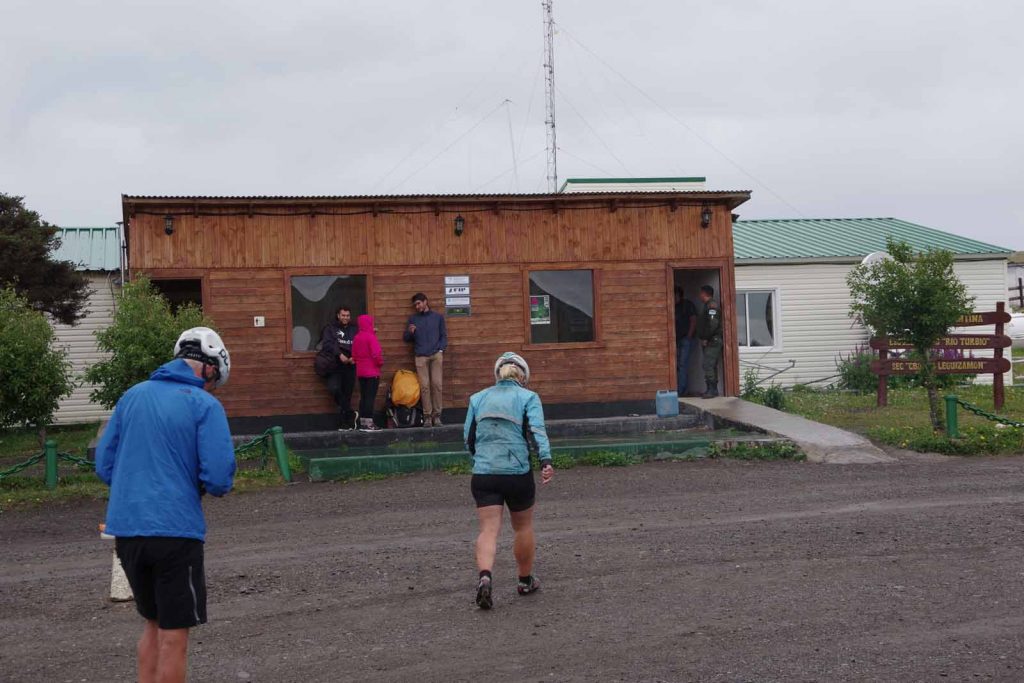
Heading into the Argentian border station.
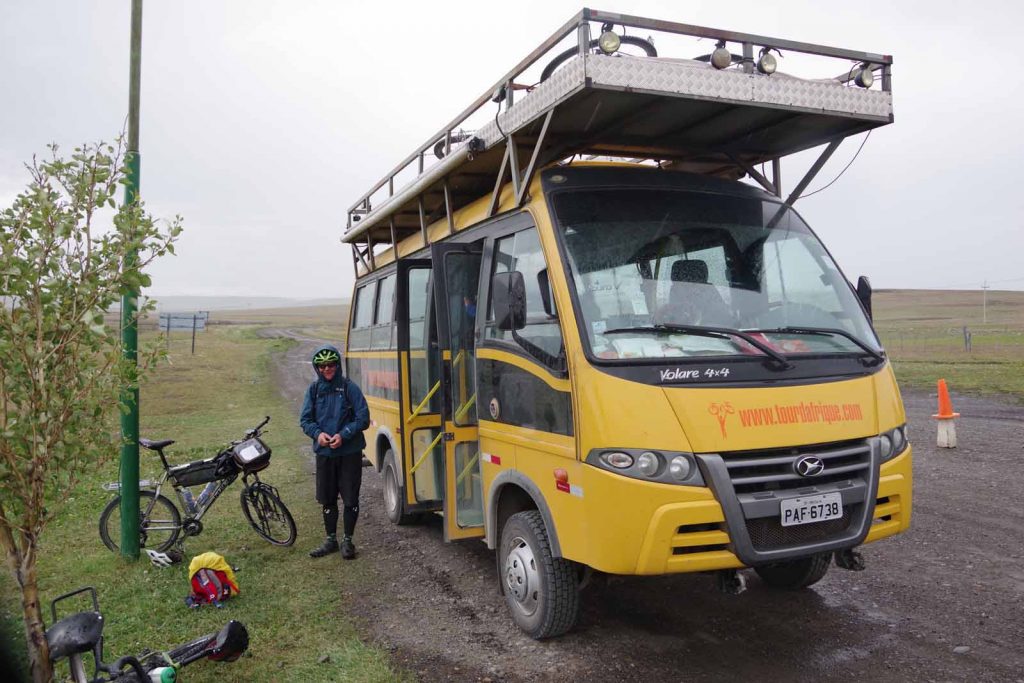
Our bus driver told us he had passengers with bicycles and when it came out that we had bicycled into Argentina, the guard insisted that we also bicycle out of the country.
Dean getting ready to ride his bike.
The first 2km were gravel and after that 6.5km of pavement in Chile. Also right as we started riding, the clouds let loose with a lot of rain. This made the Chile border post welcome because it was inside and out of the rain.
Cycled the last bits to the nearby village of Cerro Castillo where we stayed in “Martha’s backyard”. Not sure how Martha got into this business but she charged groups like TDA to camp in her backyard and then also opened up her house with bathroom and shower. There were also bathrooms next door at the bus station.
Day Four – Torres del Paine
Beautiful clear day cycling to Torres del Paine park. From Cerro Castillo, we went north to the park for a rest day.
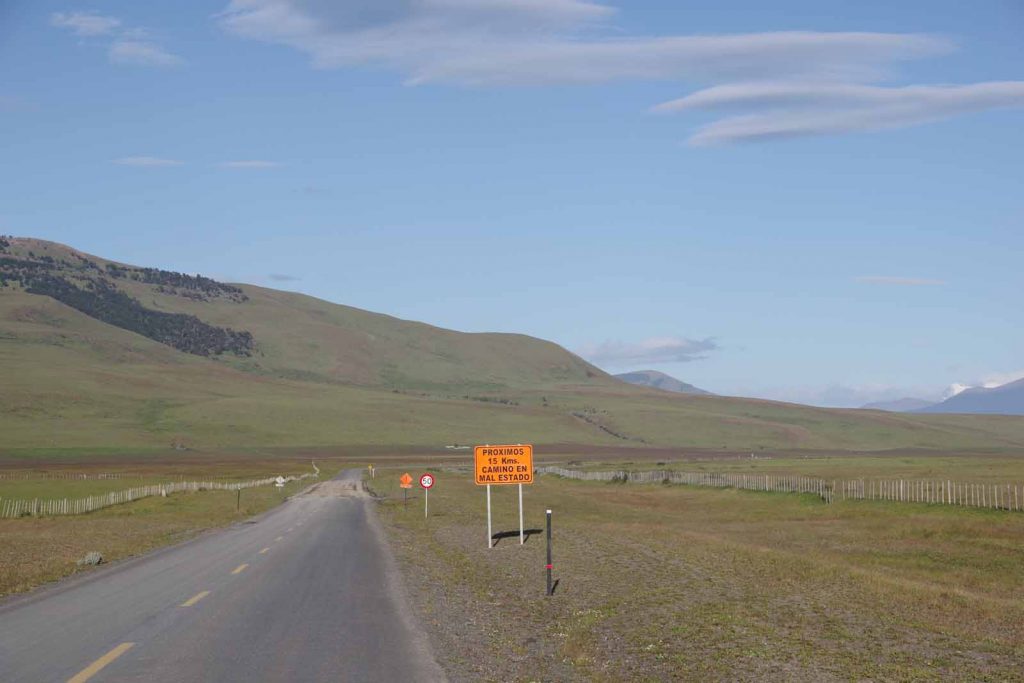
We anticipated ~62km of gravel road and were pleasantly surprised when all but about 20km was paved. It did start with some tough winds and a short steep hill or two.
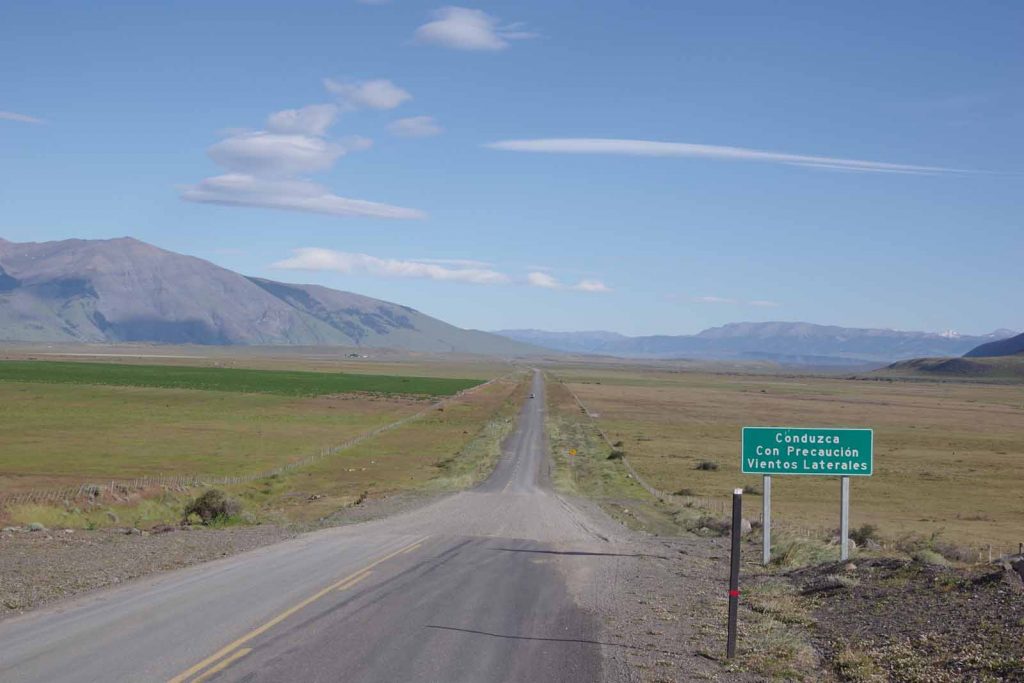
Sign warning us of strong lateral winds crossing a wide open valley.
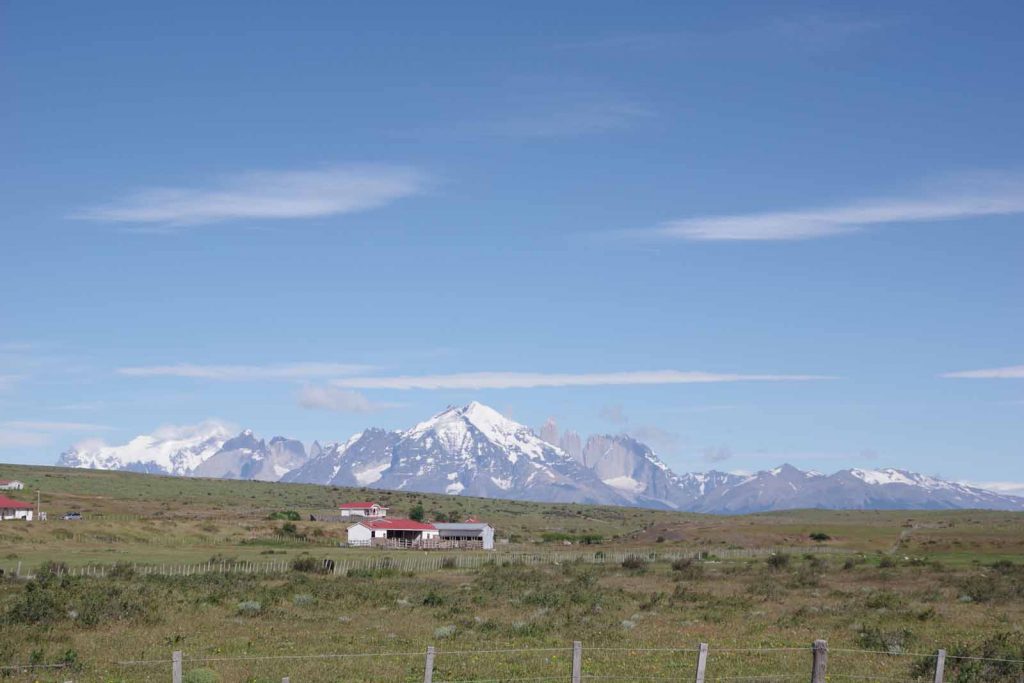
At 30km we rounded a corner and wow! the mountain and towers (to the right) were now visible.
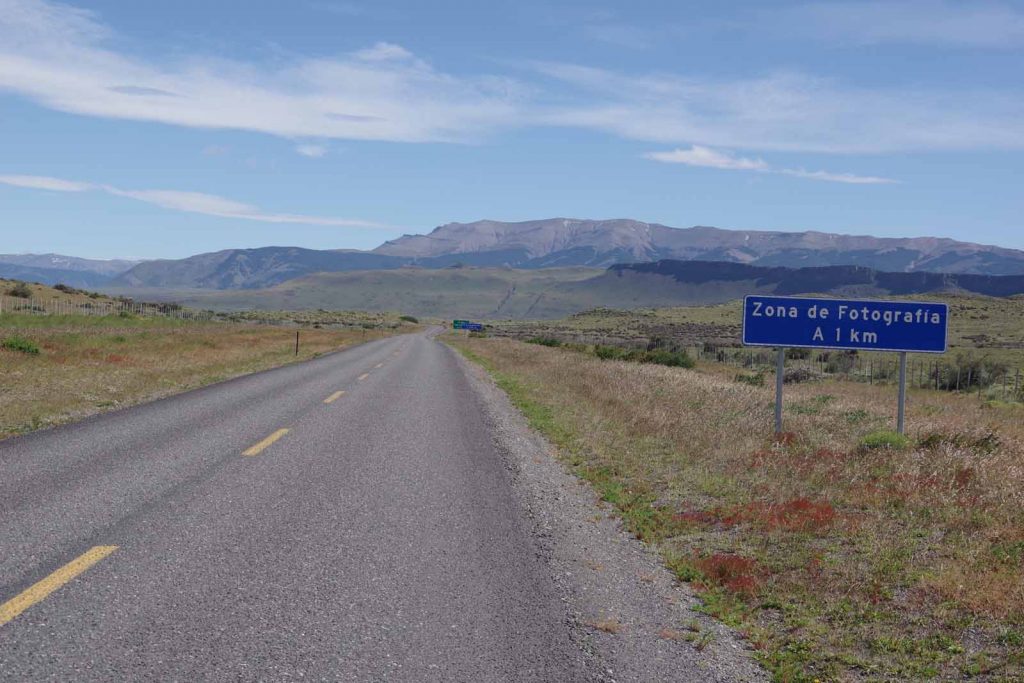
For those not paying attention, a photographic zone was coming up in a kilometer.
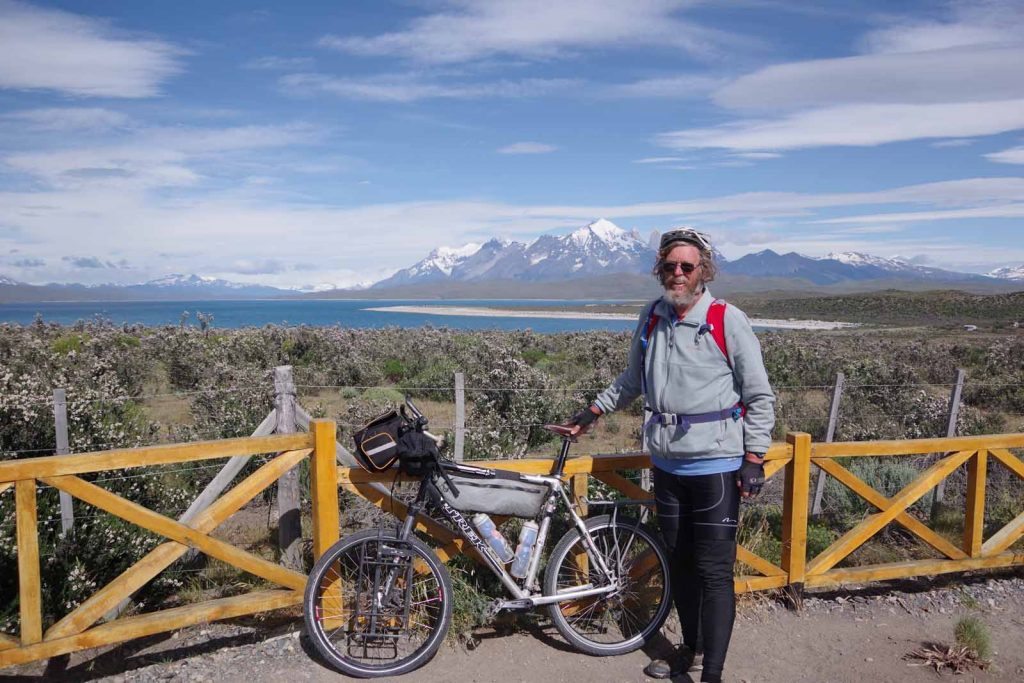
It was a great view with lake and mountains.
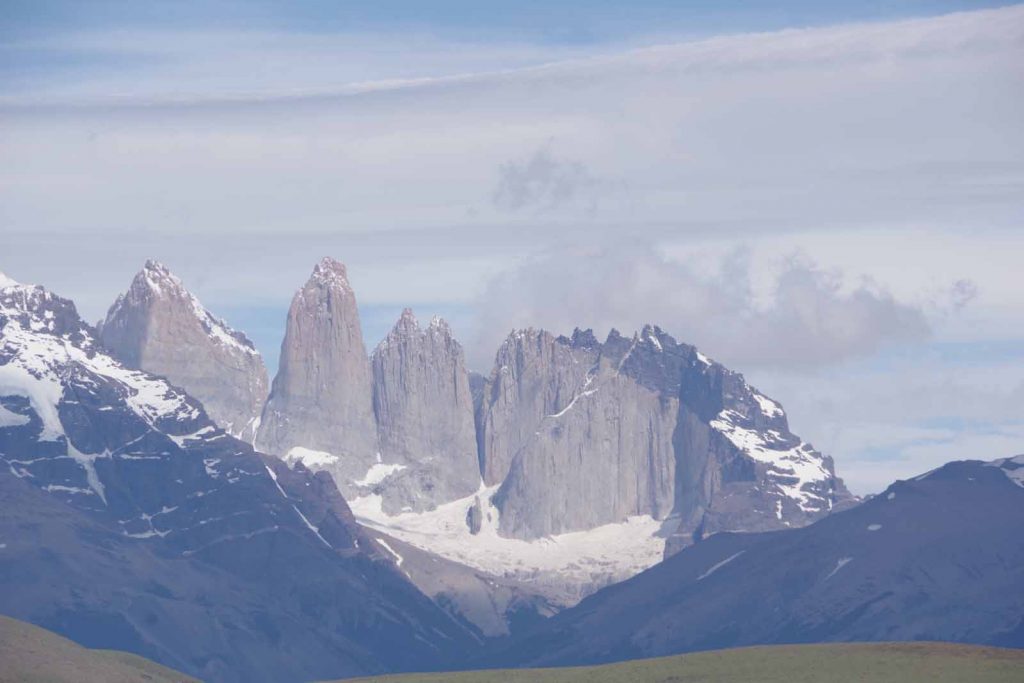
Zooming in a bit on the towers.
Over the next 30km I kept finding new places to take another photo. I found the views stunning to keep rounding bends and hills with mountains in front.
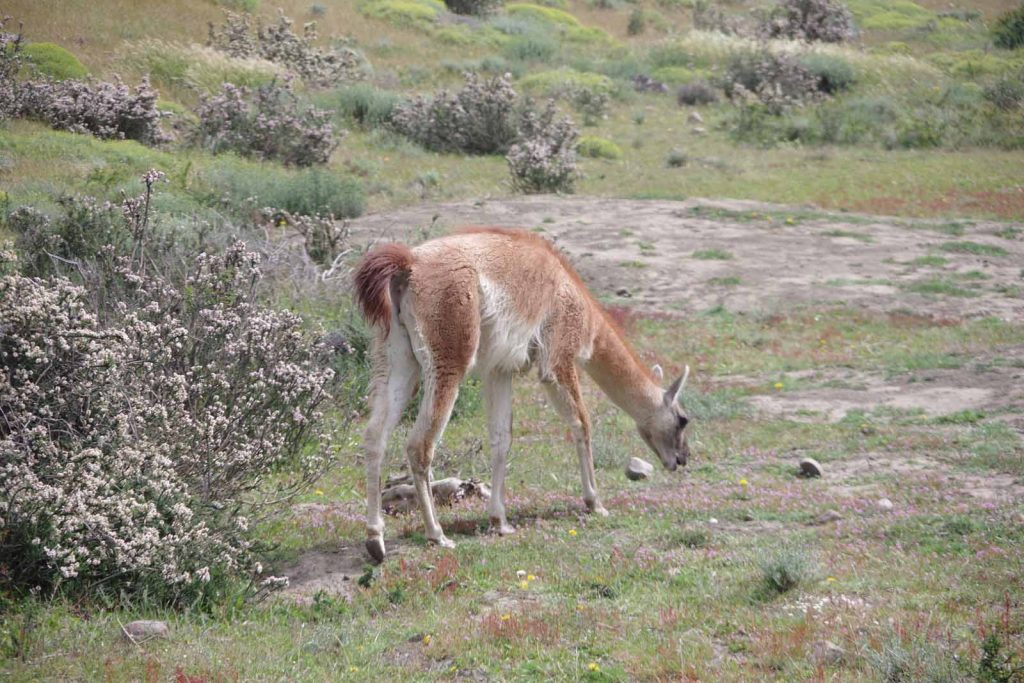
These guys were right by the road and not particularly scared or bicycle traffic.
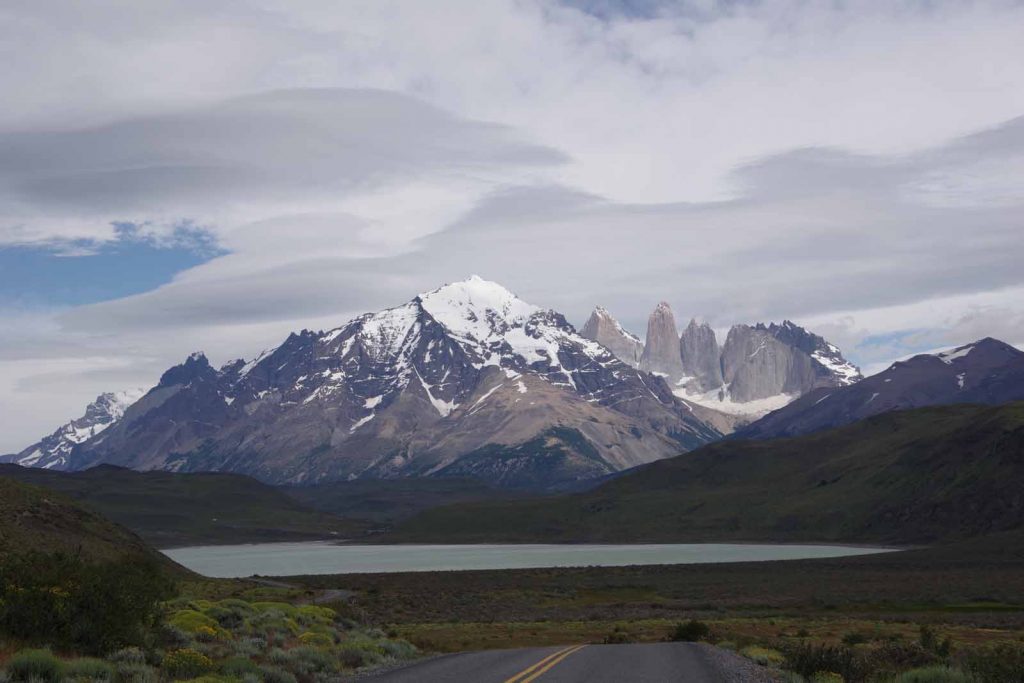
Another view from closer up.
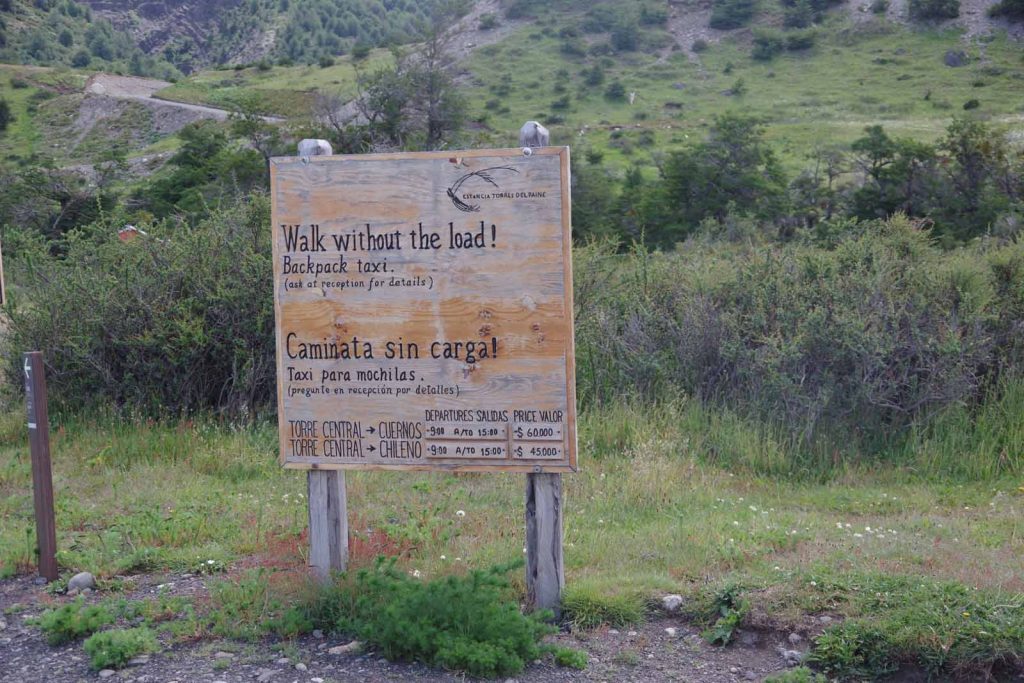
We reached the main trekking area. The park was expensive both for camping/lodging and for things to buy. TDA did a kind thing by cooking dinner one evening (and negotiating the second one from the park). Appreciate this particularly since it also meant an extra run to Puerto Natales to buy groceries.
There was also a mixup where the park thought we still had hostel reservations after the cancellation deadline and hence was going to charge for these spots whether used or not. This meant that riders were given a choice of a hostel bed in larger shared room or a camp site with five campsites available. I was one of the five who picked camping. That worked well, though the second night had considerable rain and wind.
Day Five – Rest Day in Torres Del Paine
Some riders had taken bus previous day and done a hike and hence we had reports of the 18km round trip hike to the view area. I was happy to have cycled the previous day even it today we had more stormy weather coming through. It was a nice hike with the last 2km close to the towers tougher scambling.
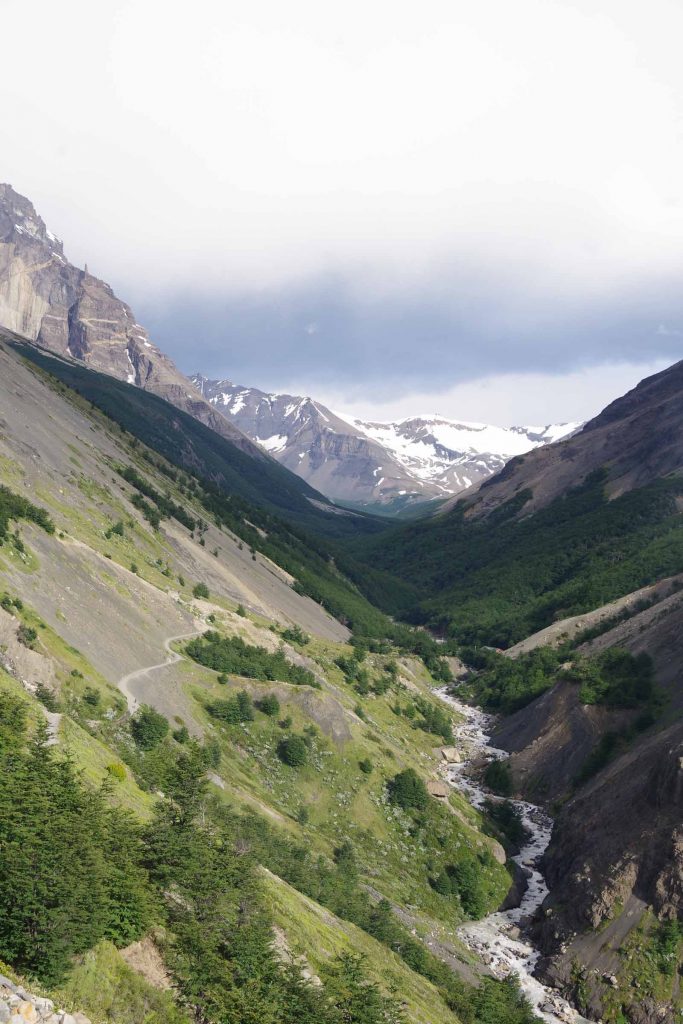
we first went up a ridge and then down into this valley.
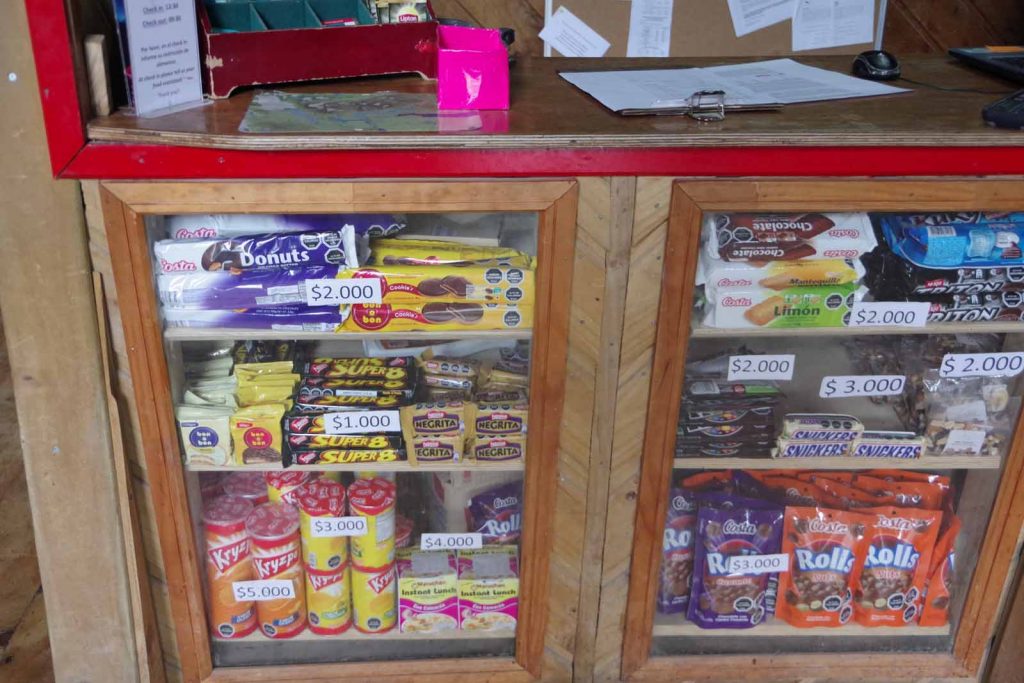
There was a refugio here where one could stay or buy snacks like these.
There are ~630 Chilean pesos per dollar, so prices include $7.50 USD for that can of pringles and $4.50 USD for a snickers bar. A can of coke was ~$5.00 USD as well.
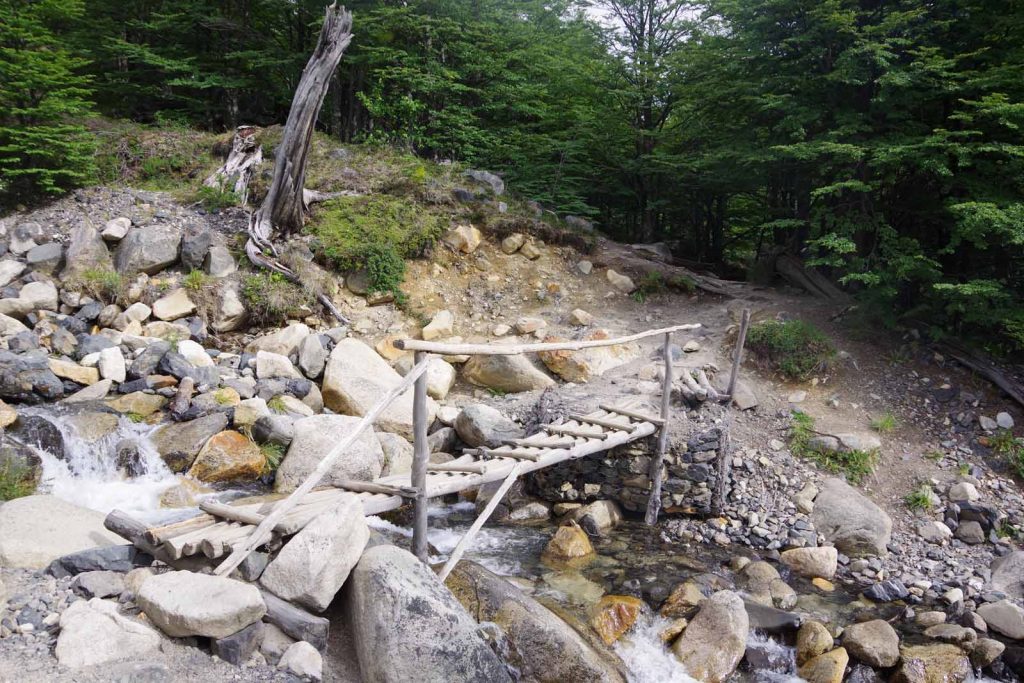
More hiking along the trail, mostly following the river valley.
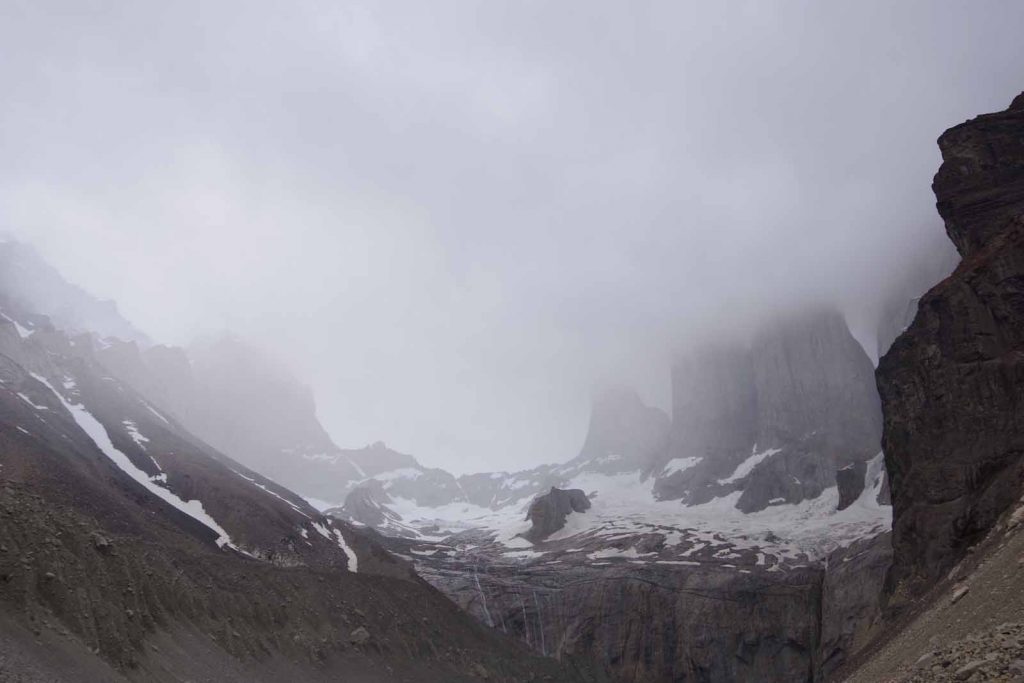
It was misty and cloudy at the small lake at base of the towers.

Obligatory shot with myself and the towers.
After this a hike back down. The strong weather system came in in the afternoon and so nice to visit the lodge for a bit. In the evening period of strong winds as well as rain.
However, as a whole, I was happy we had visited Torres del Paine and got a chance to see the park, both from cycling to the central area and also from hiking to the base of the towers.
Day Six – Puerto Natales
Weather forecasts were turning to more rain. I had already cycled to the park, so decided I would take the bus to lunch and then cycle the new section south to Puerto Natales.
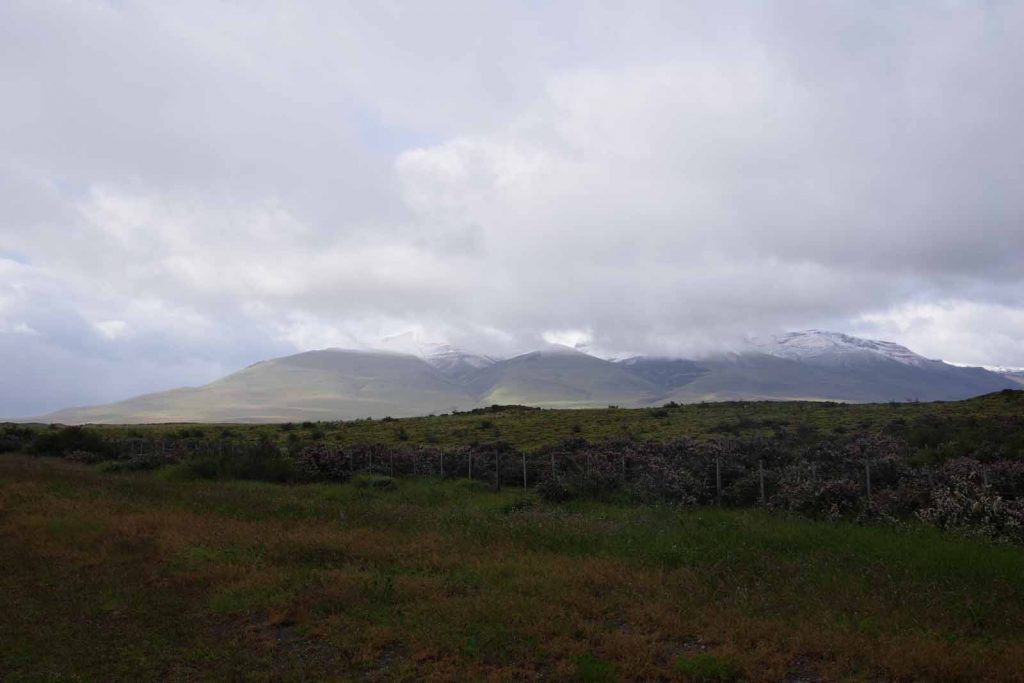
Snow just a few hundred meters up the peaks.
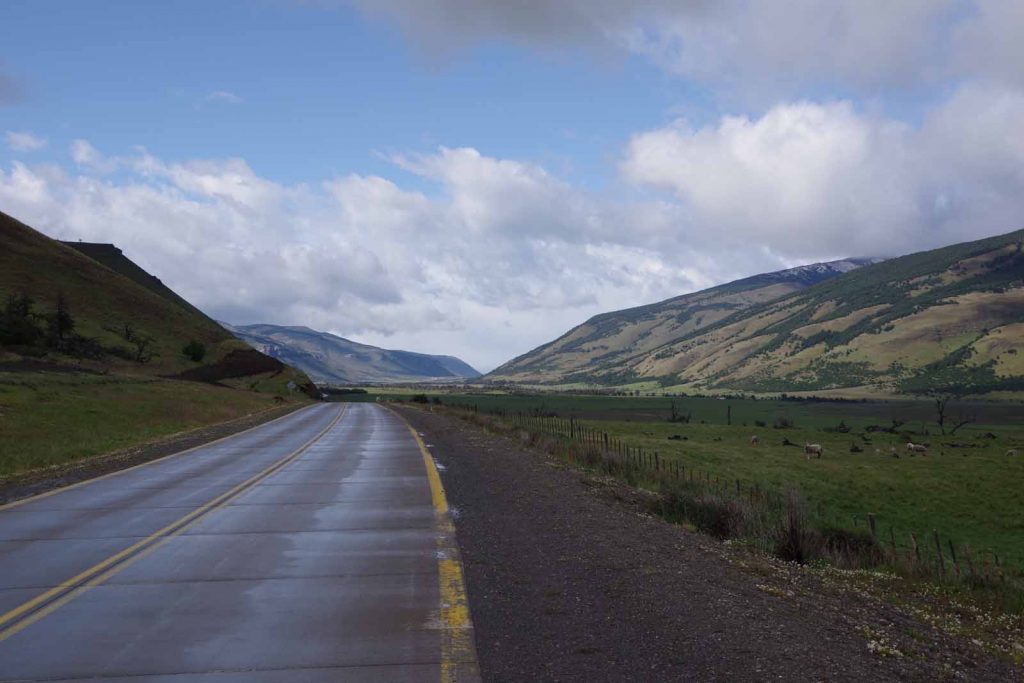
As I started riding there was a brief, cold rain shower but then it improved as I cycled through this valley. Also had more tailwinds than headwinds.
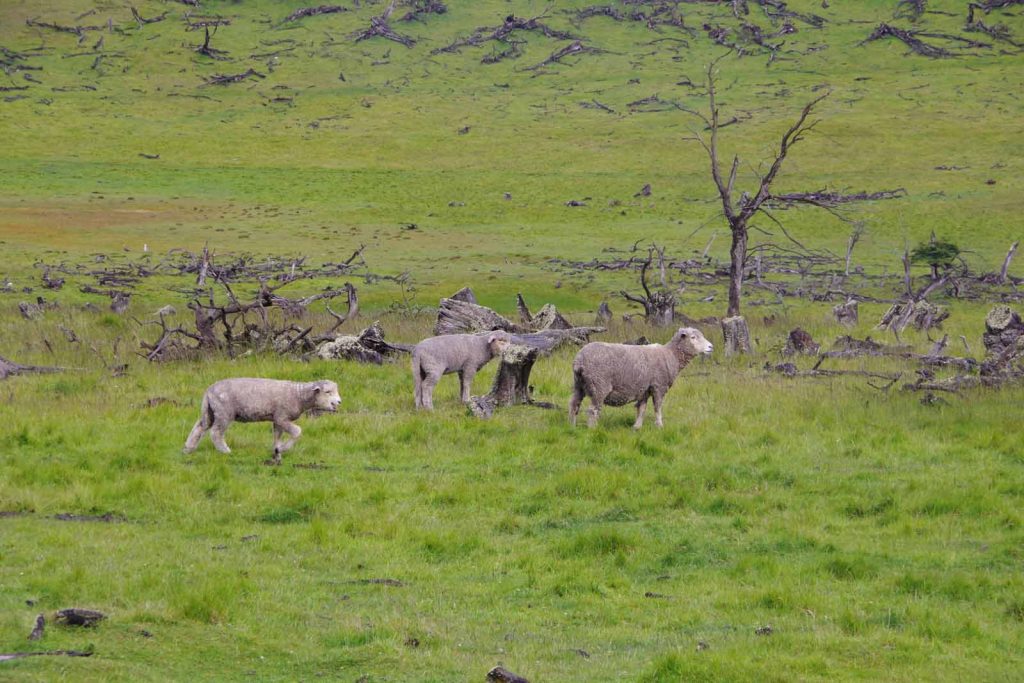
Many fields with sheep along the way. I could “baa baa” at then and often get some to “baa” in return.
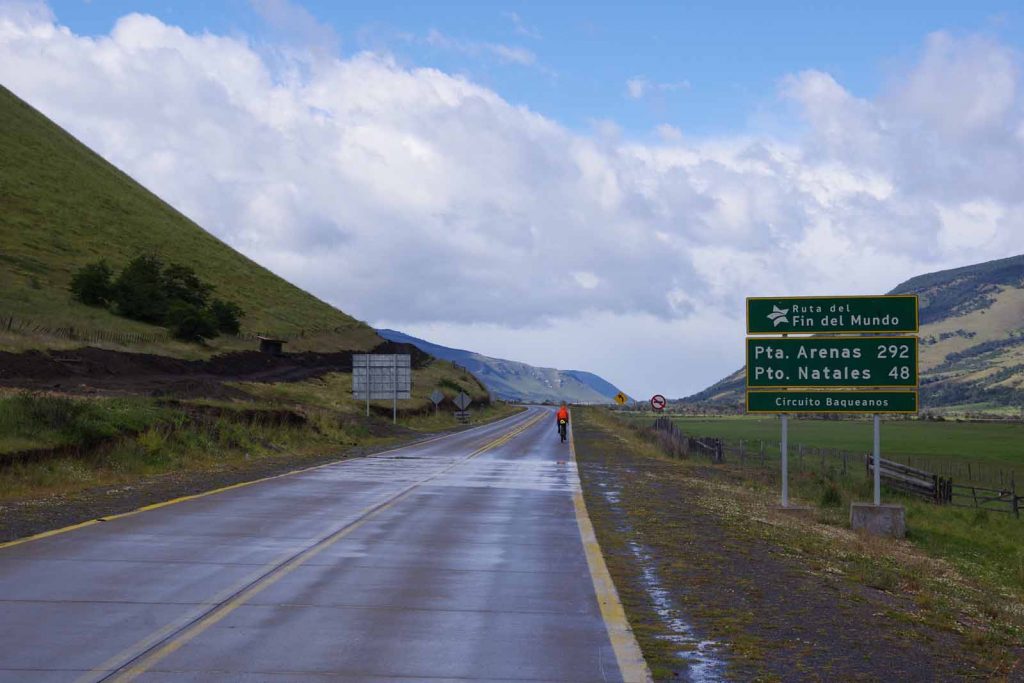
The highway is marked as “fin del mundo” going to the end of the world.
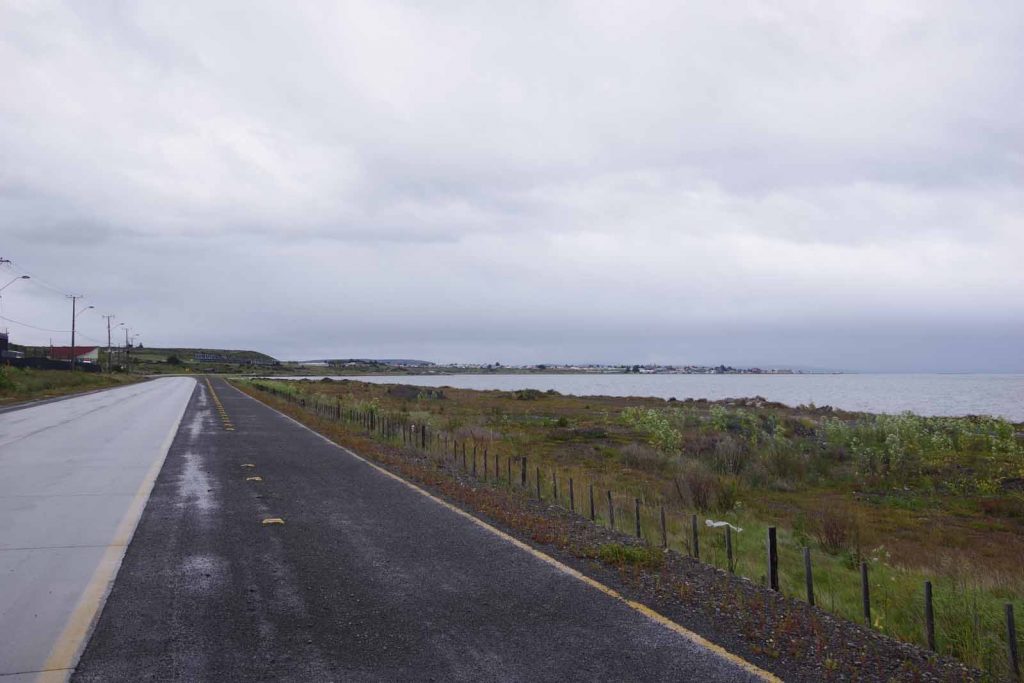
Puerto Natales in the distance. A small town with touristy areas.
We had rain showers off and on through the day and overnight and were happy that the accommodation was in cabanas this evening.
Day Seven – Villa Villa Tehuelches
One of the coldest days cycling yet, particularly 75km of riding in the rain at temperatures of ~2C (35F).
Five riders had already seen the weather forecasts, the tourist attractions in Punta Arenas and decided to skip ahead on the bus to take some extra days in Punta Arenas. I decided to cycle the 148km day and see how it turned out (it turned out cold).
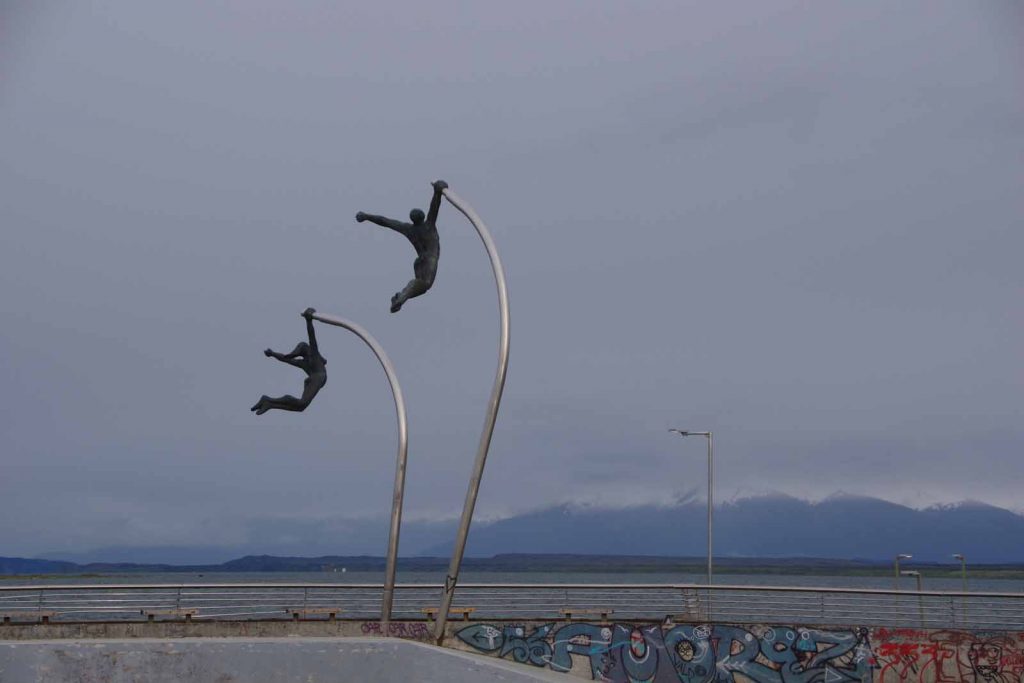
A fun sculpture in downtown Puerto Natales.
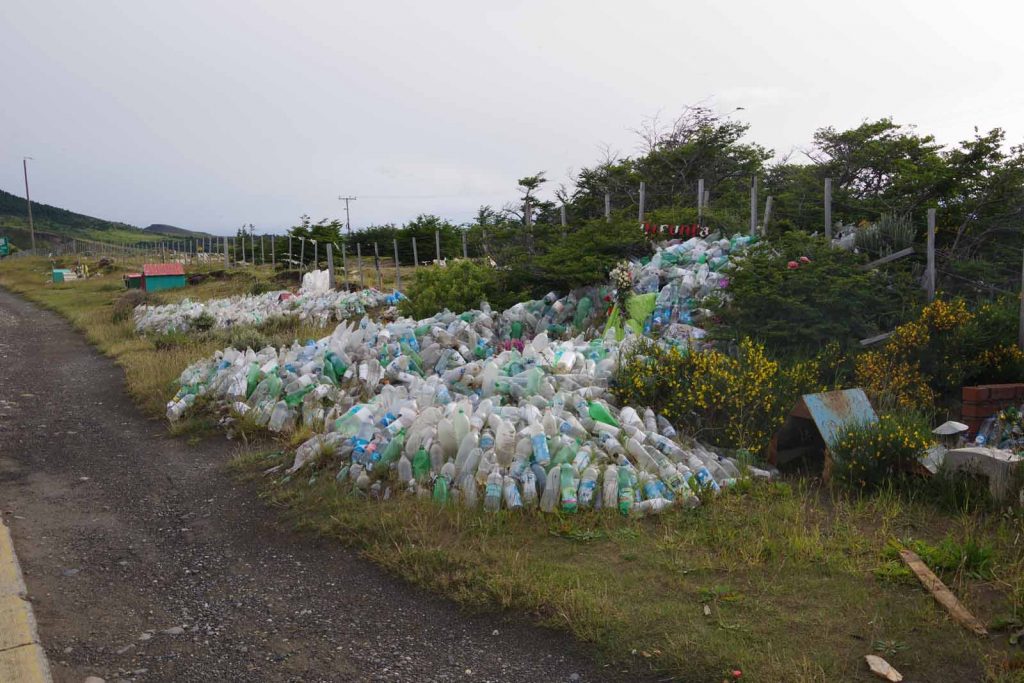
Memorial with a lot of donated water.
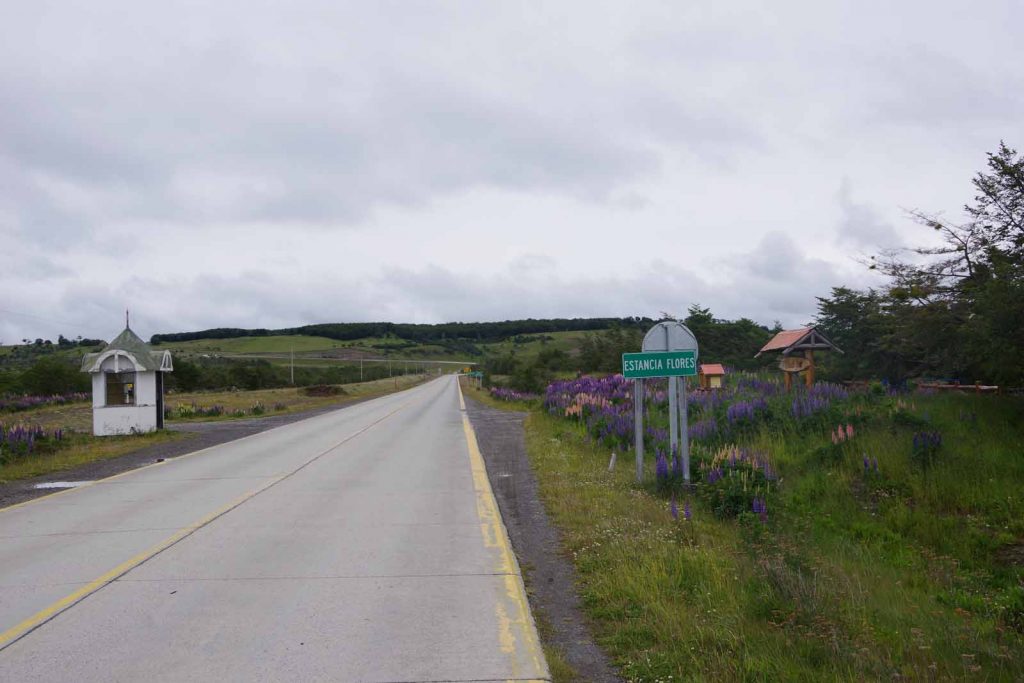
We passed an area with many of these estancias. Sometimes they would have small bus shelters.
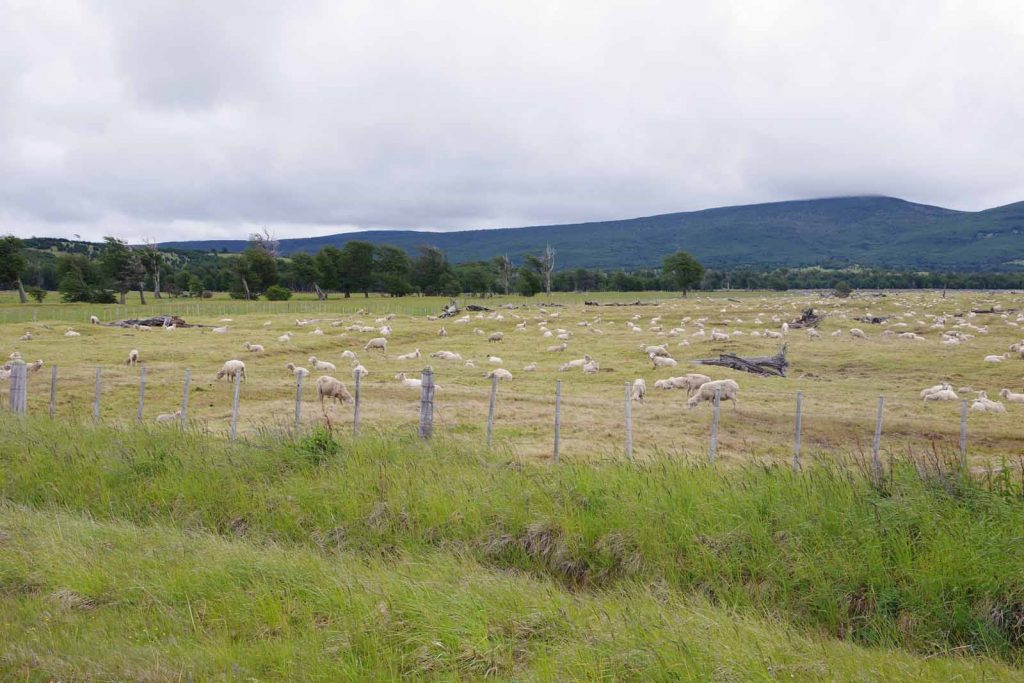
Also areas with sheep.
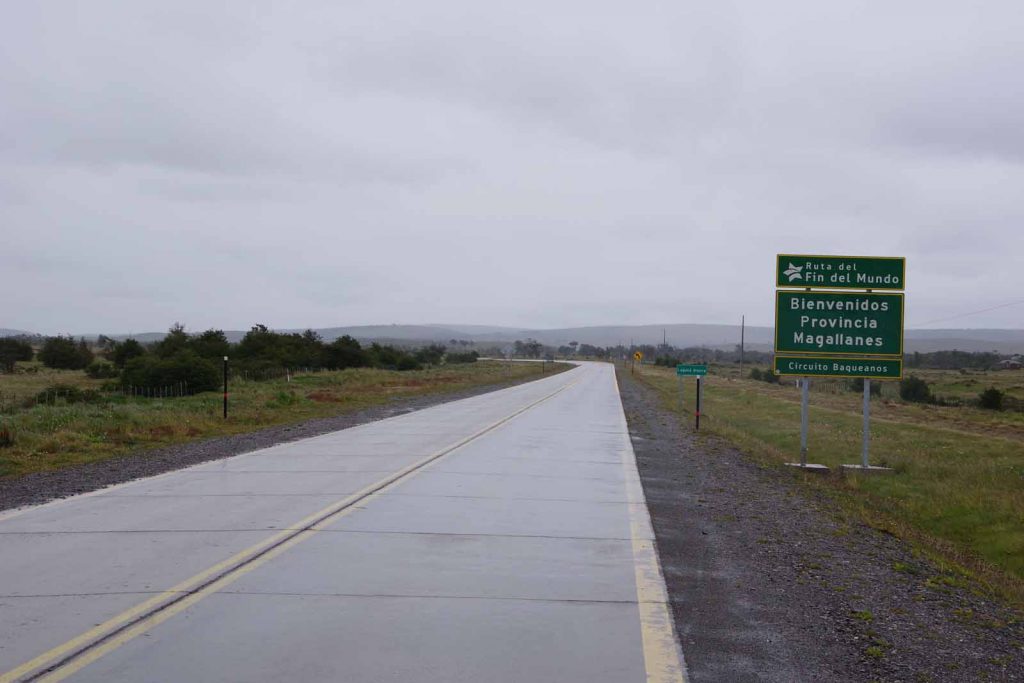
Crossing the province boundary. Also last picture I took today before going into “heads down” mode in the cold and rain.
While it was cold, my core body kept warm with only three layers. My hands and feet were cold but otherwise, as long as I concentrated on riding I could keep warm enough. Just one of those afternoons to grind out some distance.
On arrival in camp, I put on an extra rain pants and two layers of clothing up top. Somehow felt a bunch colder and shivering for a bit. Went to a cafe inside, ate a good hearty TDA dinner and retired early to my tent. We were also fortunate that our tent camping was underneath an cover at the rodeo grounds.
Day Eight – Punta Arenas
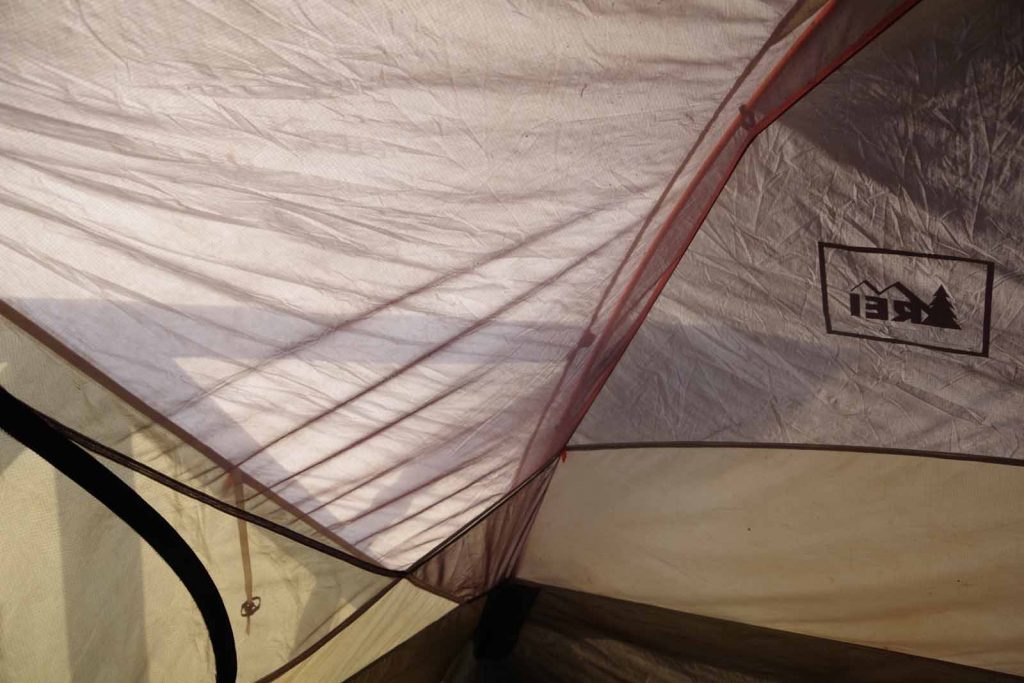
Sunshine on the tent in the morning! Hooray!
A cool morning starting out, but the sun gave a big boost.
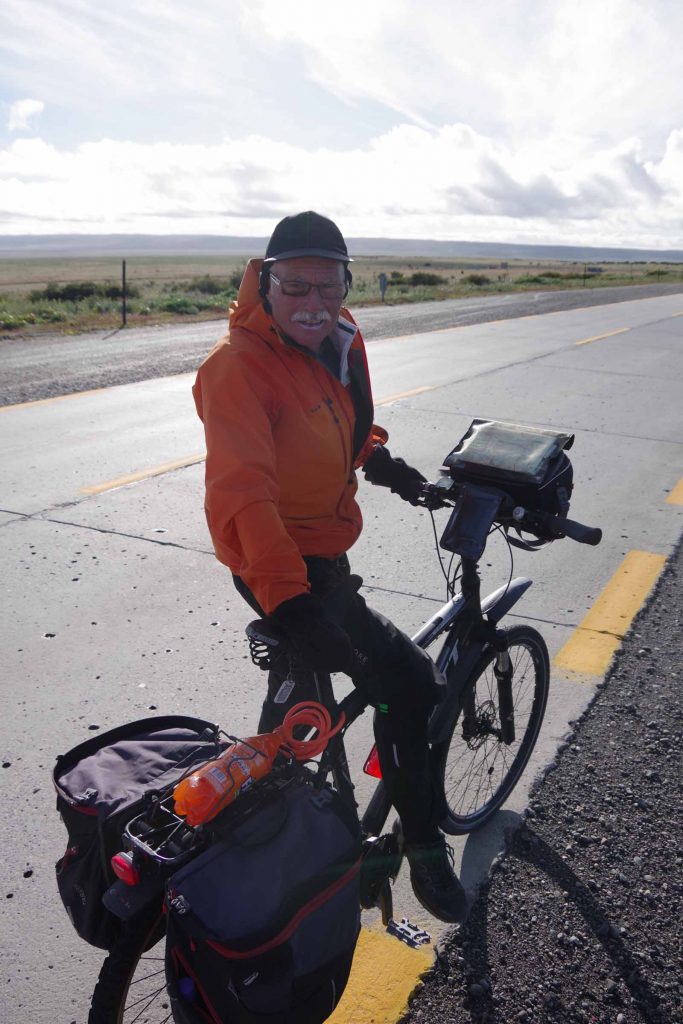
This Swiss cyclist (with journal in German). Was also in town last night.
Interesting on two accounts: he is in his mid-seventies and started bicycle touring after he retired. Also, his tent and some gear was stolen in northern Chile so he continued without a tent and somehow had been able to find places to stay.
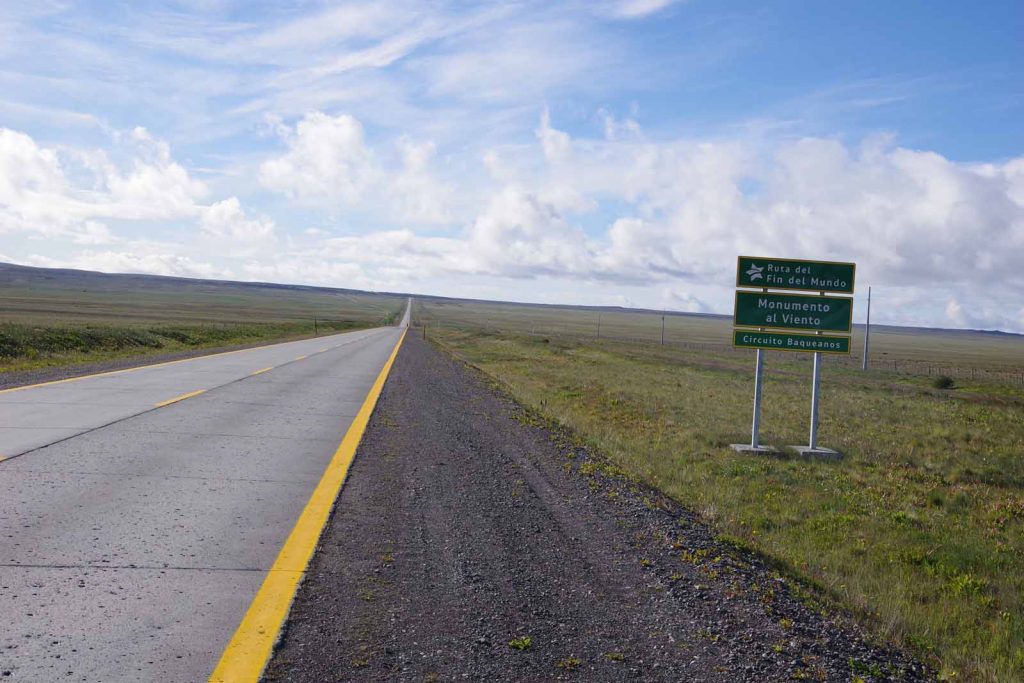
Along the way was a monument to the wind.
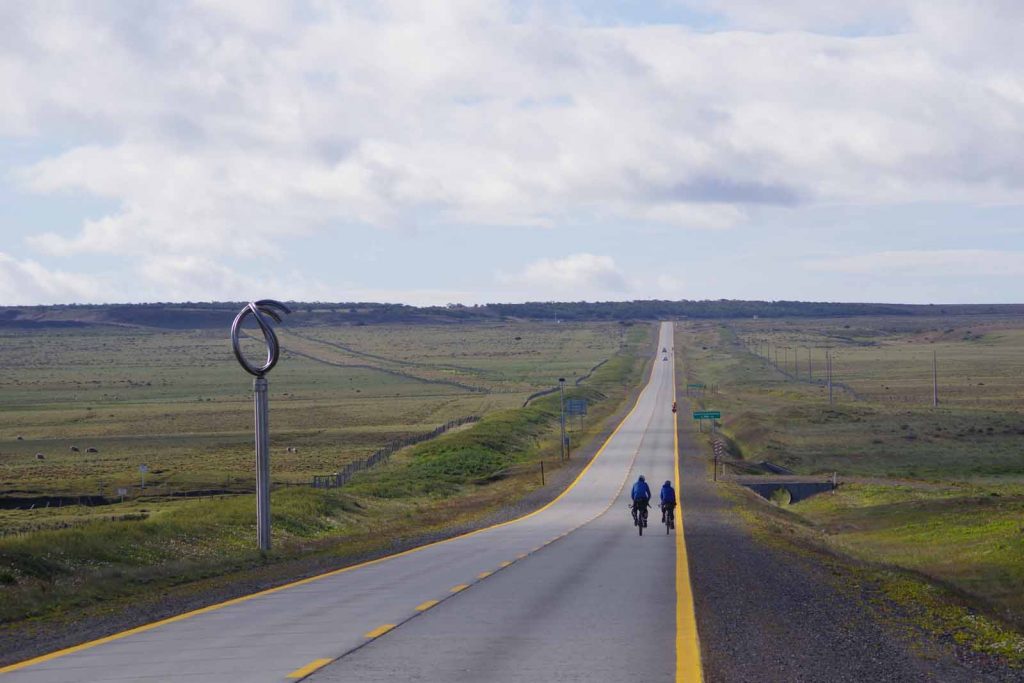
Mike and Nola cycle past the monument, several strange shaped metal contraptions on poles.
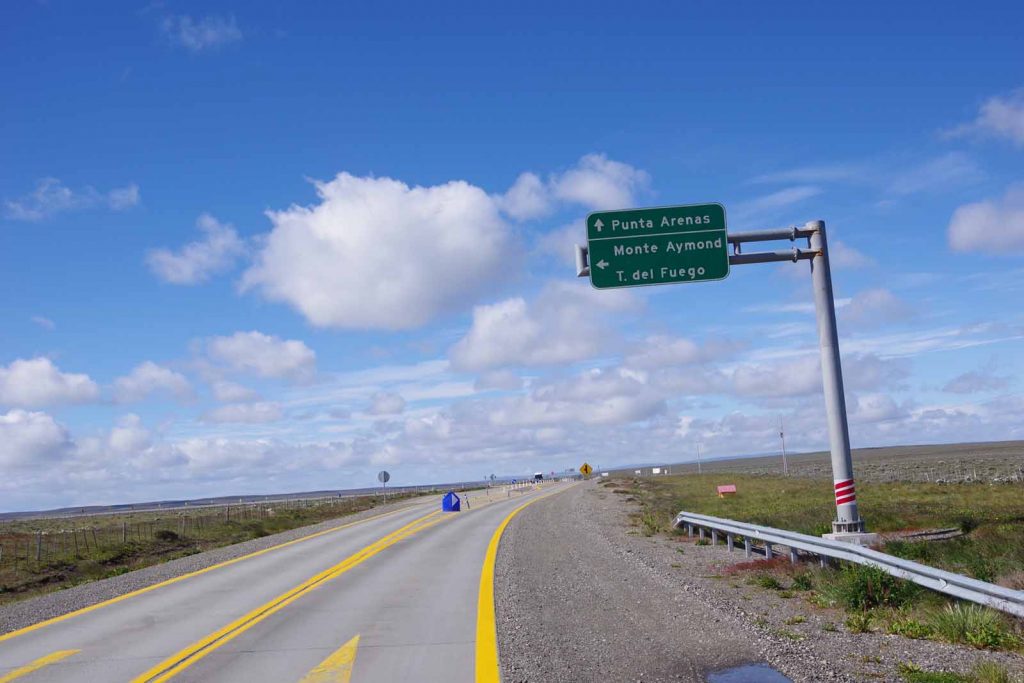
At 50km was a road junction. Traffic was already busy but after this point became even busier. What also made things more difficult was a strong cross-wind and a road that was narrow.
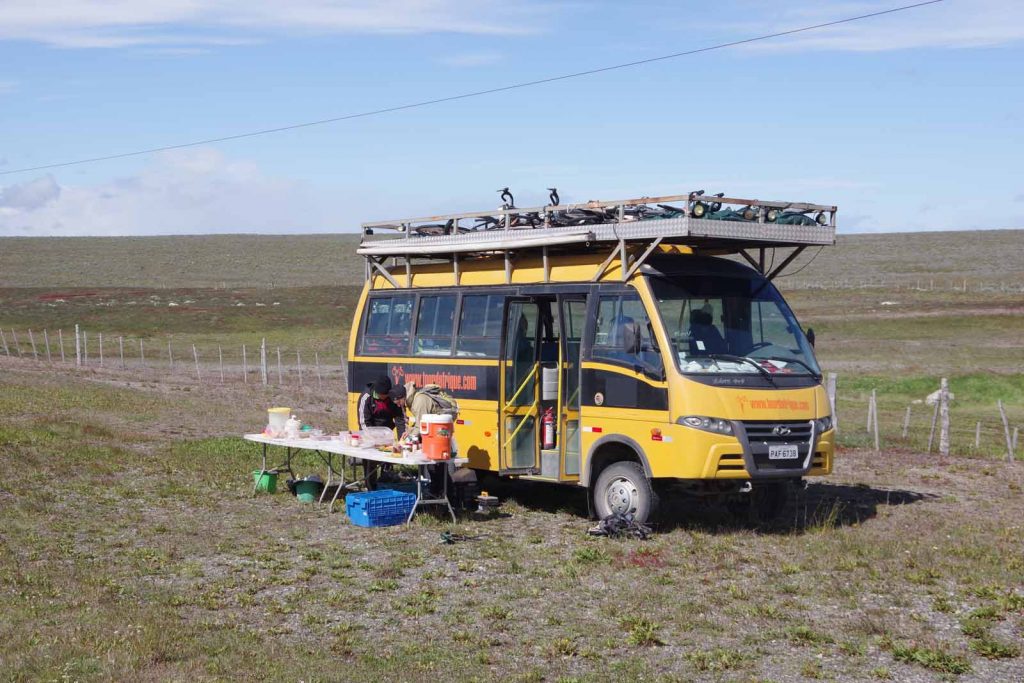
Lunch was here along the road.
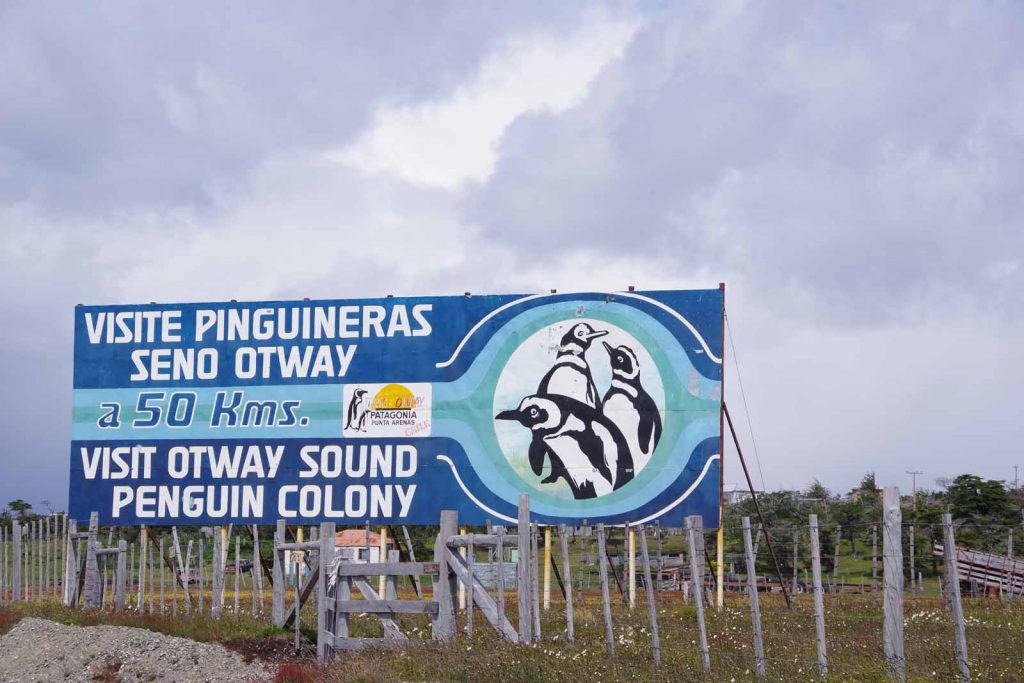
I saw signs for those penguins that others might have gone to visit.
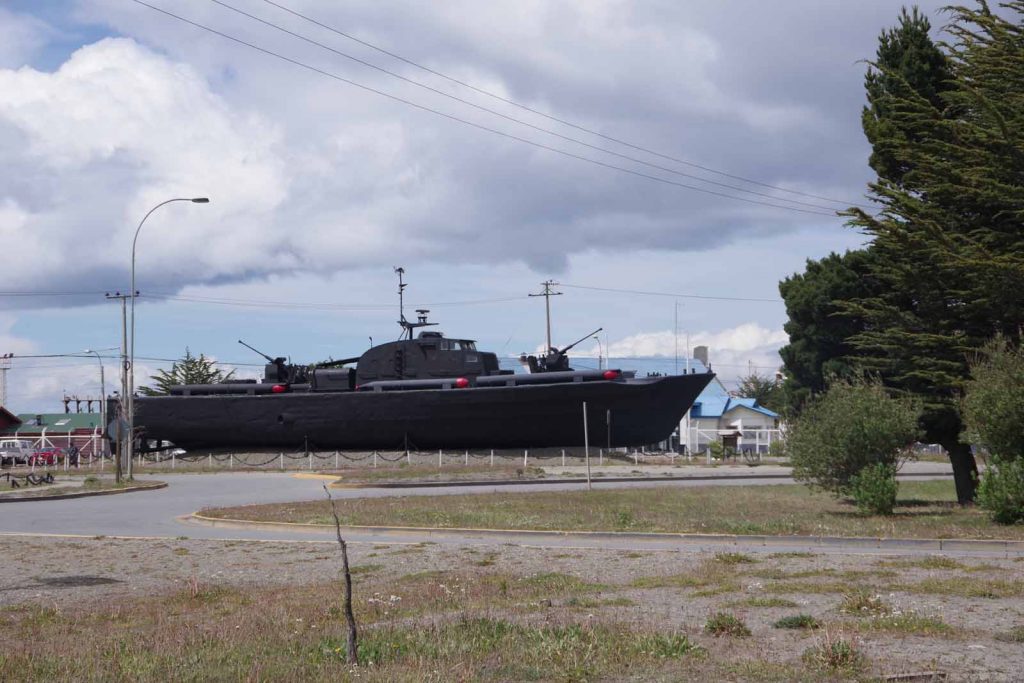
Coming into town, signs of a harbor town.
Have only walked around a little but nice to be in a larger town again. A good chance to rest here and get ready for our riding to Ushuaia. Punta Arenas is on the Straights of Magellan where one can sail around south America. On other side of this bay is a large island area of Tierra del Fiego. The largest island (Island Grande) is where we will ride across for four days to reach the Beagle Channel and town of Ushuaia on south side of the channel.
First a rest day.


